June 6, 2021
Martha O'Kennon
.
These Pinks survived a second winter in one of my deck planter boxes. Last year they kept coming on and on. The Baptisia are now blooming almost fully. And the Goutweed (whatever wasn't killed off when they piled dirt from the re-digging of the pond on top of the largest stands) is back.
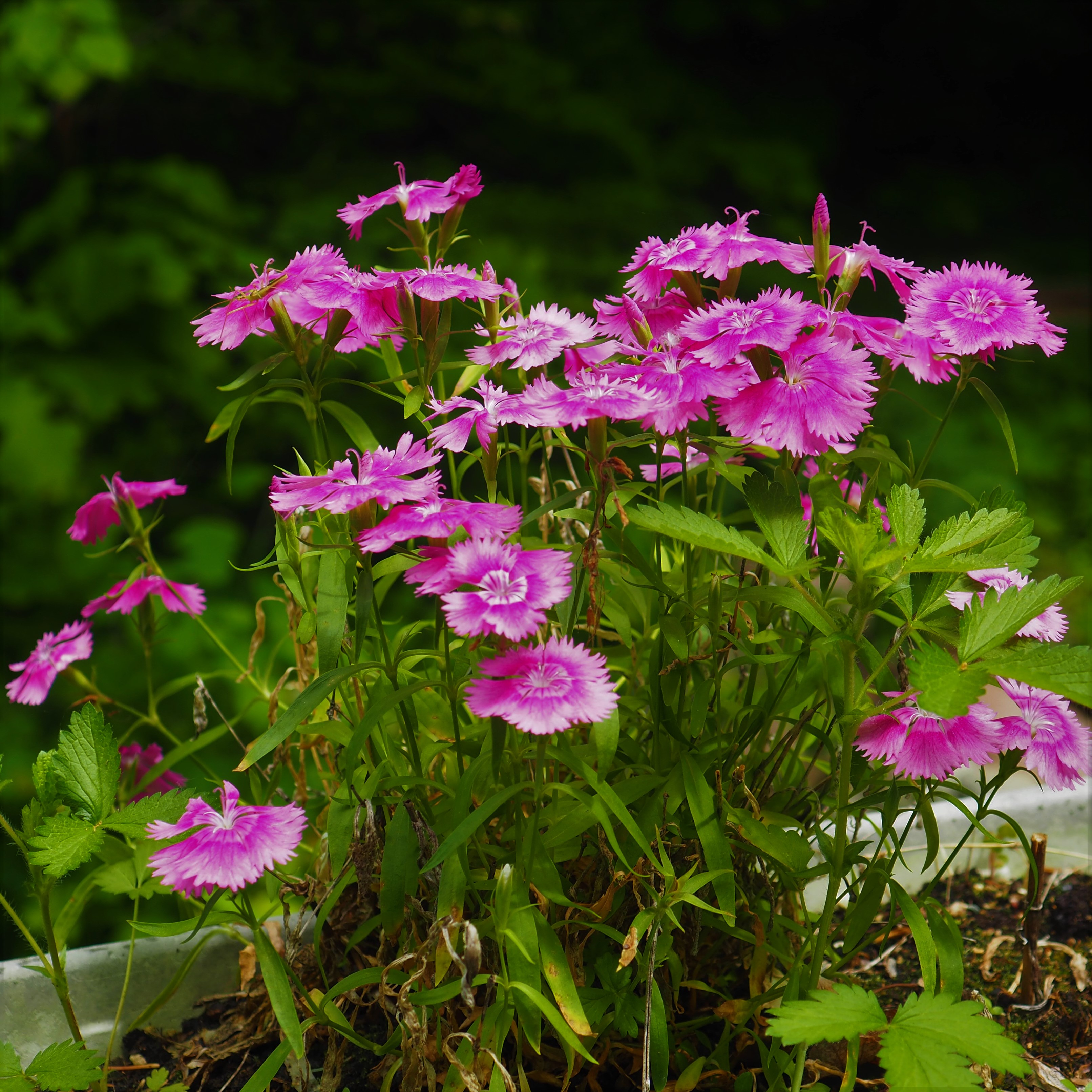
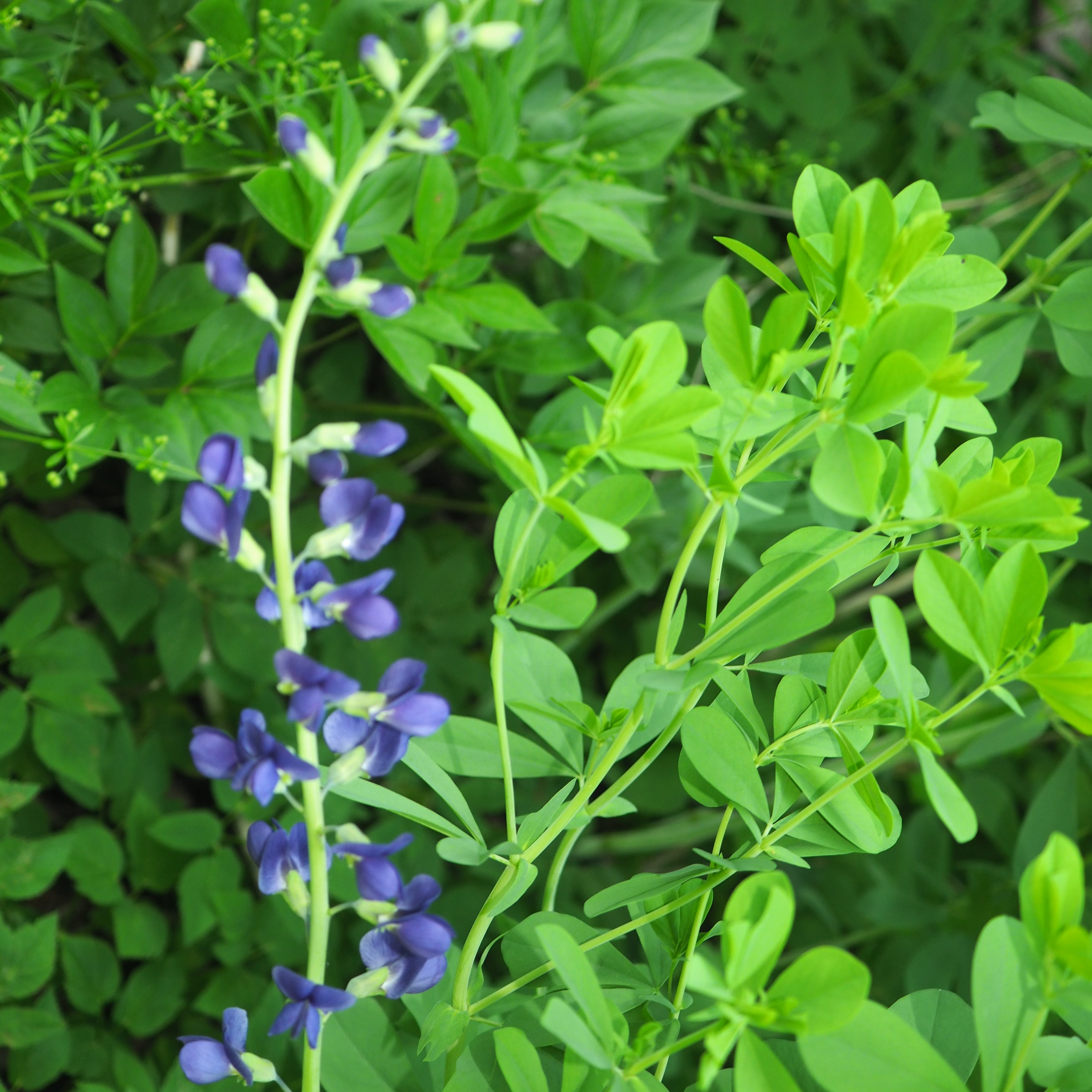
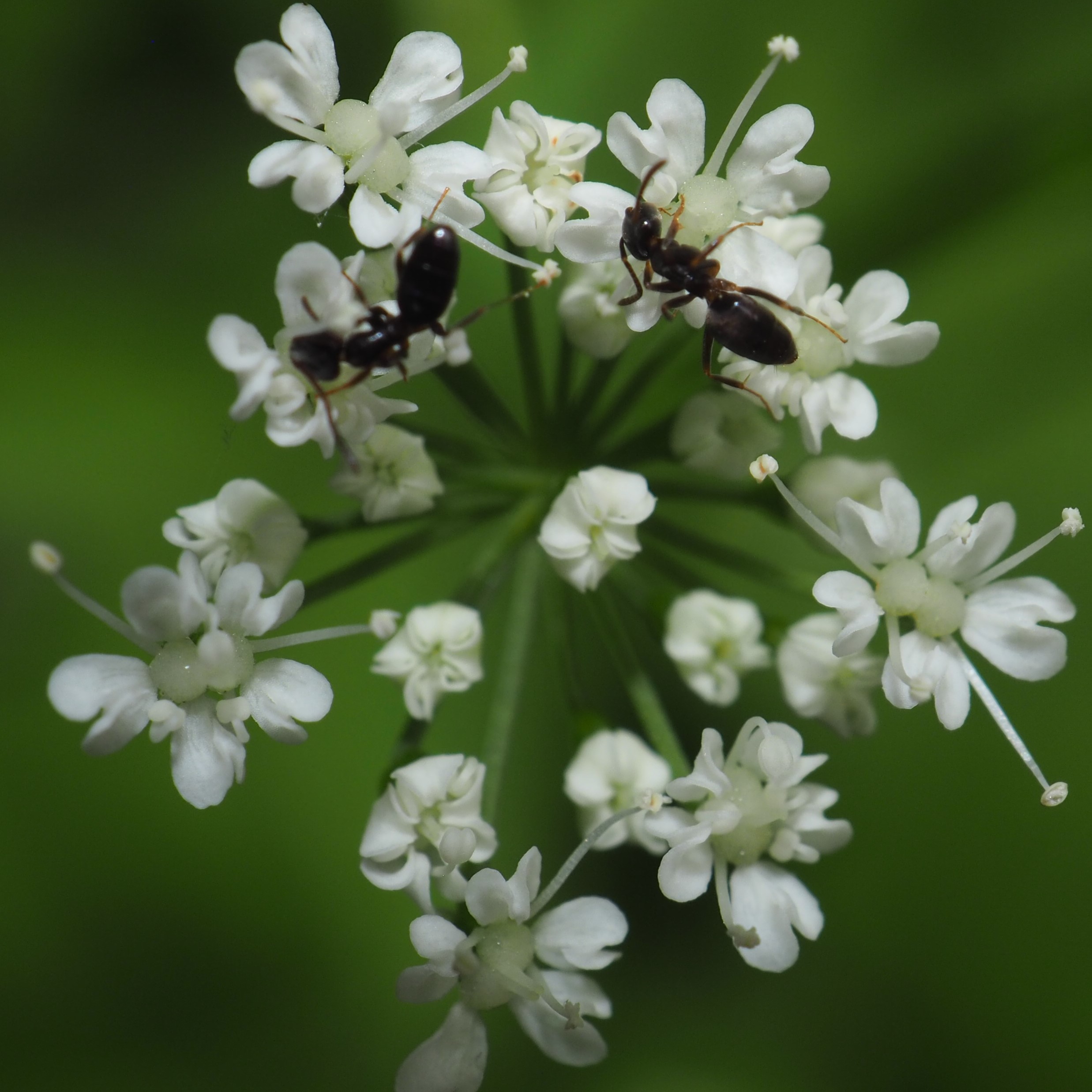
Remember that there is information in the name of the file for each image. You can see it by mousing over the image - look at the lower left of the screen. Or you can click on the image to get to the (usually) larger image. Then the info is displayed in the address line above. Sometimes the second click will actually display a different view of the original image.
Ants are not JUST feeding their faces nowadays. I mean, not ALL of them are. Here's the traditional Eastern Black Carpenter; then a Smaller Carpenter on a Redbud leaf; and finally, a Small Honey Ant on Redbud.
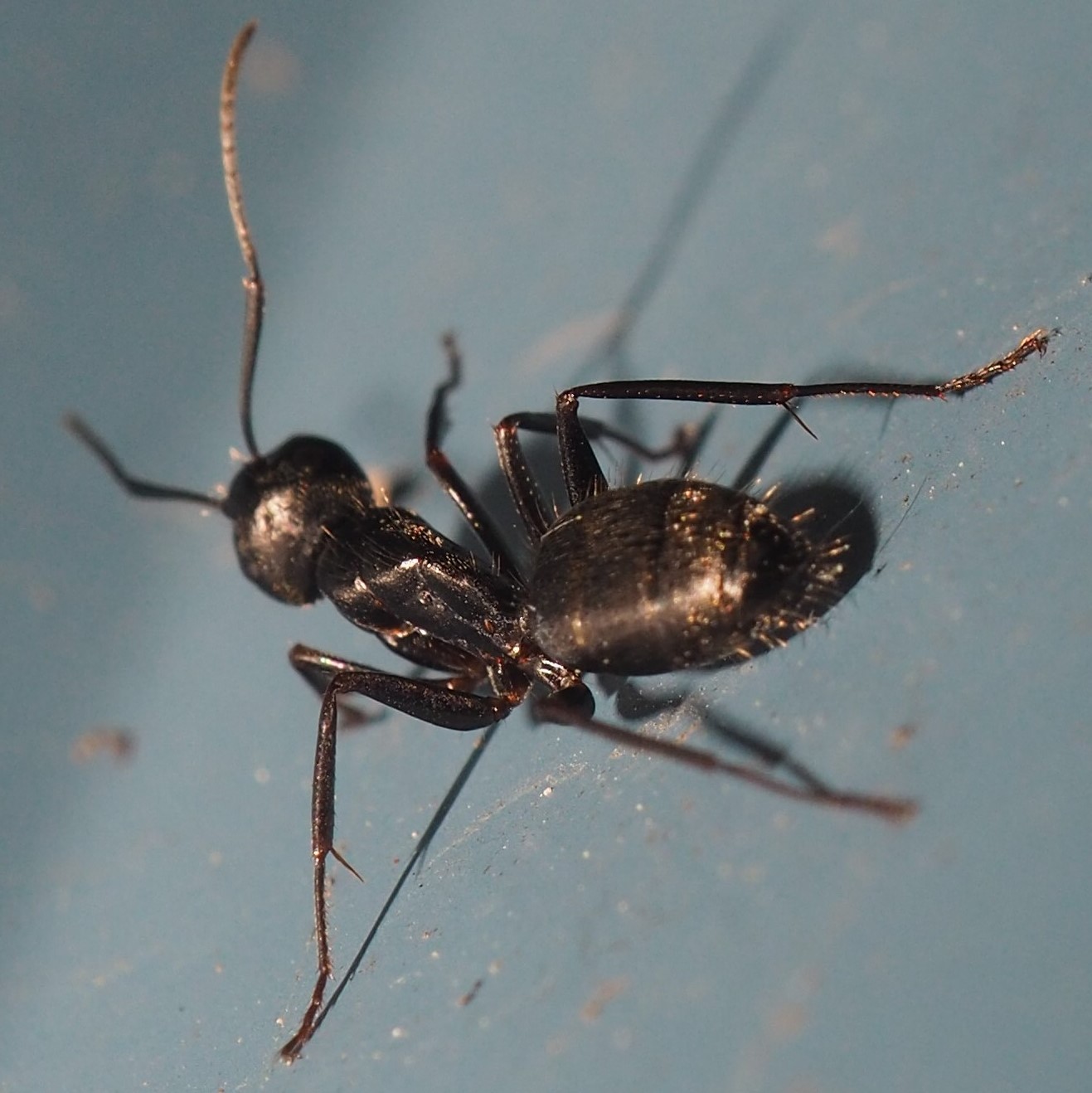
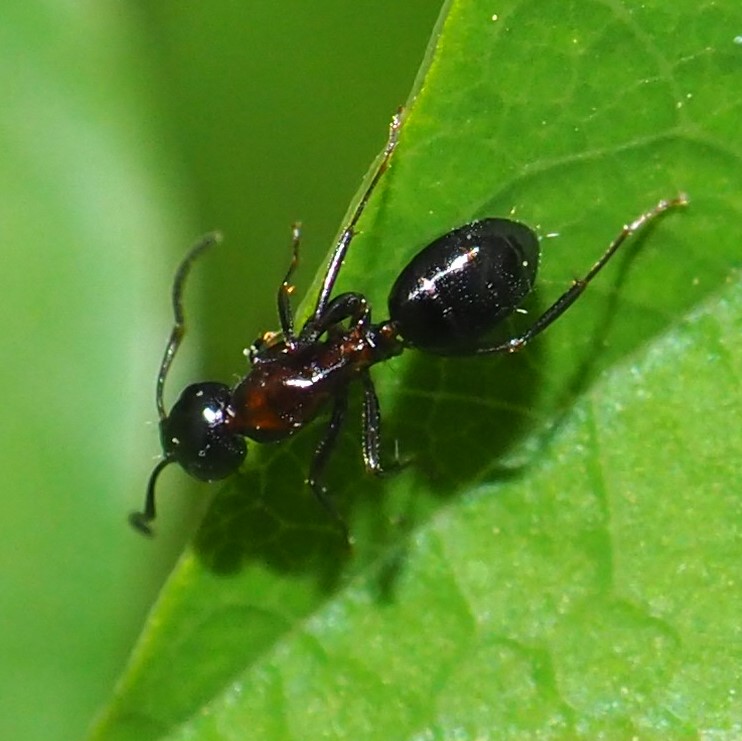
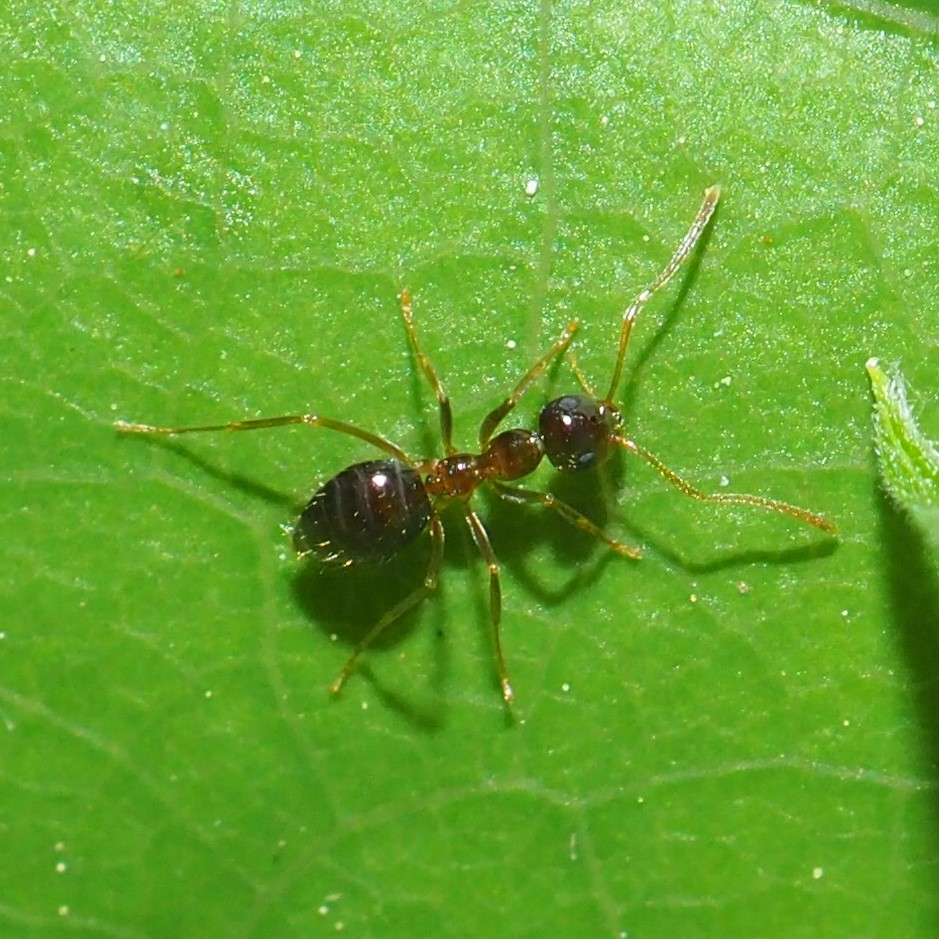
The Immigrant Pavement Ants were to be seen on small ant hills. Here's one. I think number 2 is Lasius Americanus. But number 3, one of the Acrobat Ants, is hard at work, nannying a tiny Two-mark Treehopper nymph on Redbud. She will wait for the nymph (obscured behind her) to emit a drop of "honey-dew".
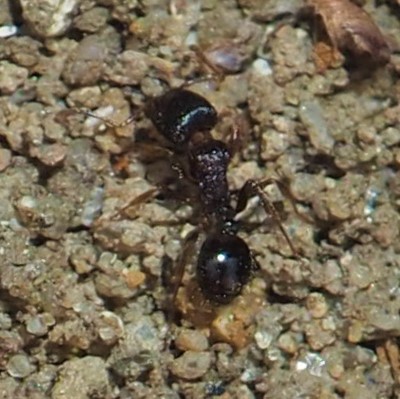
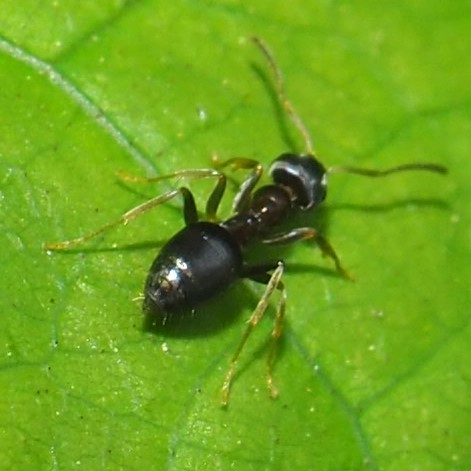
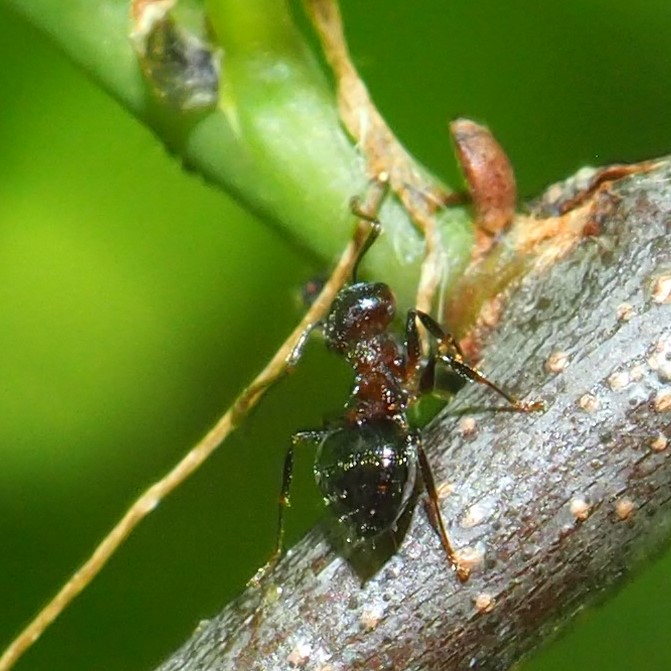
Yes, it's Nanny time for the Ants! I've known for a long time that there is a special relative of the Two-mark Treehopper that lives on Walnut instead of Redbud. From what Solomon Hendrix of iNat tells me, this blue thing that you see in the first two pictures is a very early Nymph of that species or species complex. I believe the first Ant here (like the last one in the preceding paragraph) is an Acrobat Ant, but don't recognize the second one. When the Nymphs are this tiny size, the Ants that nurse them tend to be the smaller Ants. Picture 3 shows another Acrobat Ant nursing a Two-mark Treehopper Nymph on Redbud.
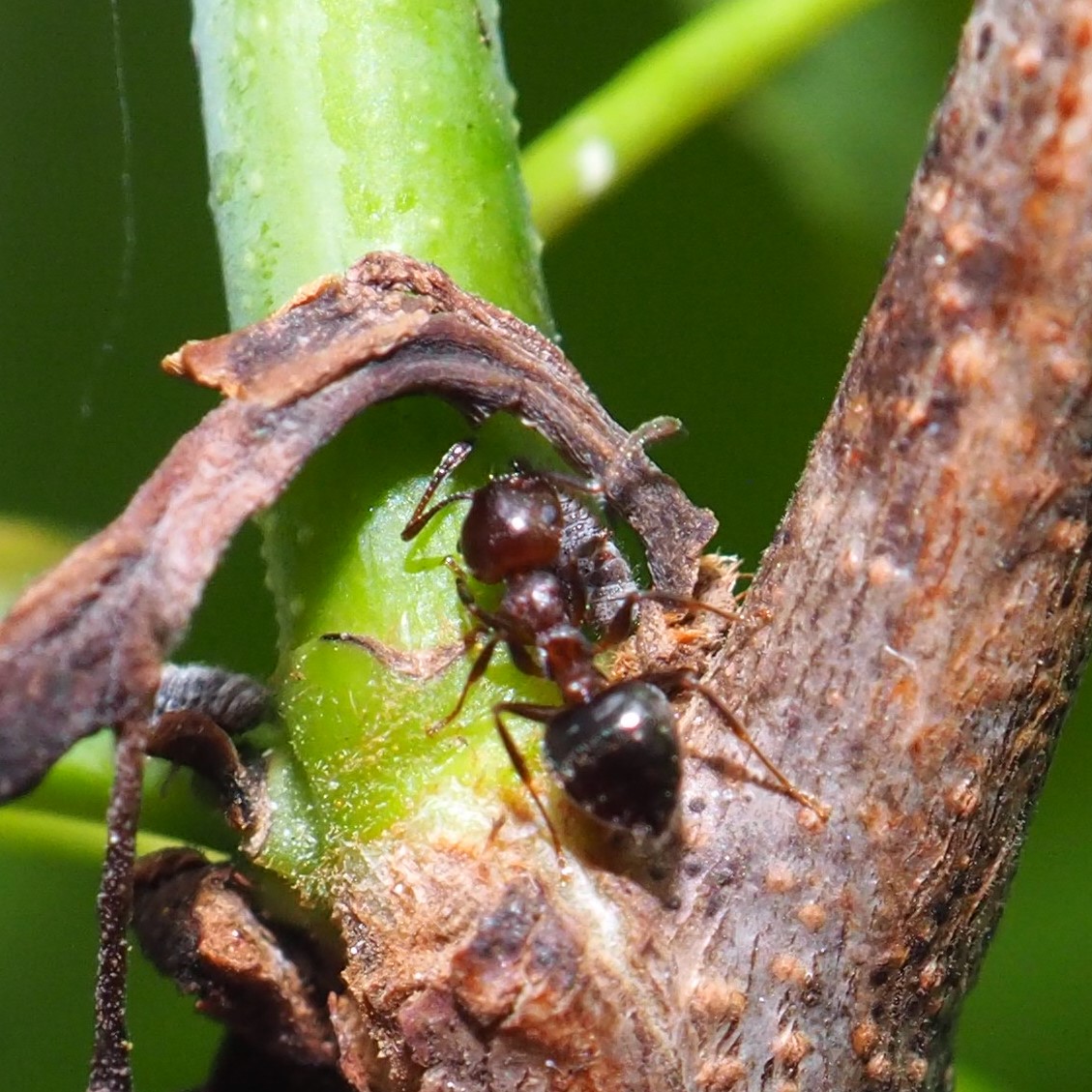
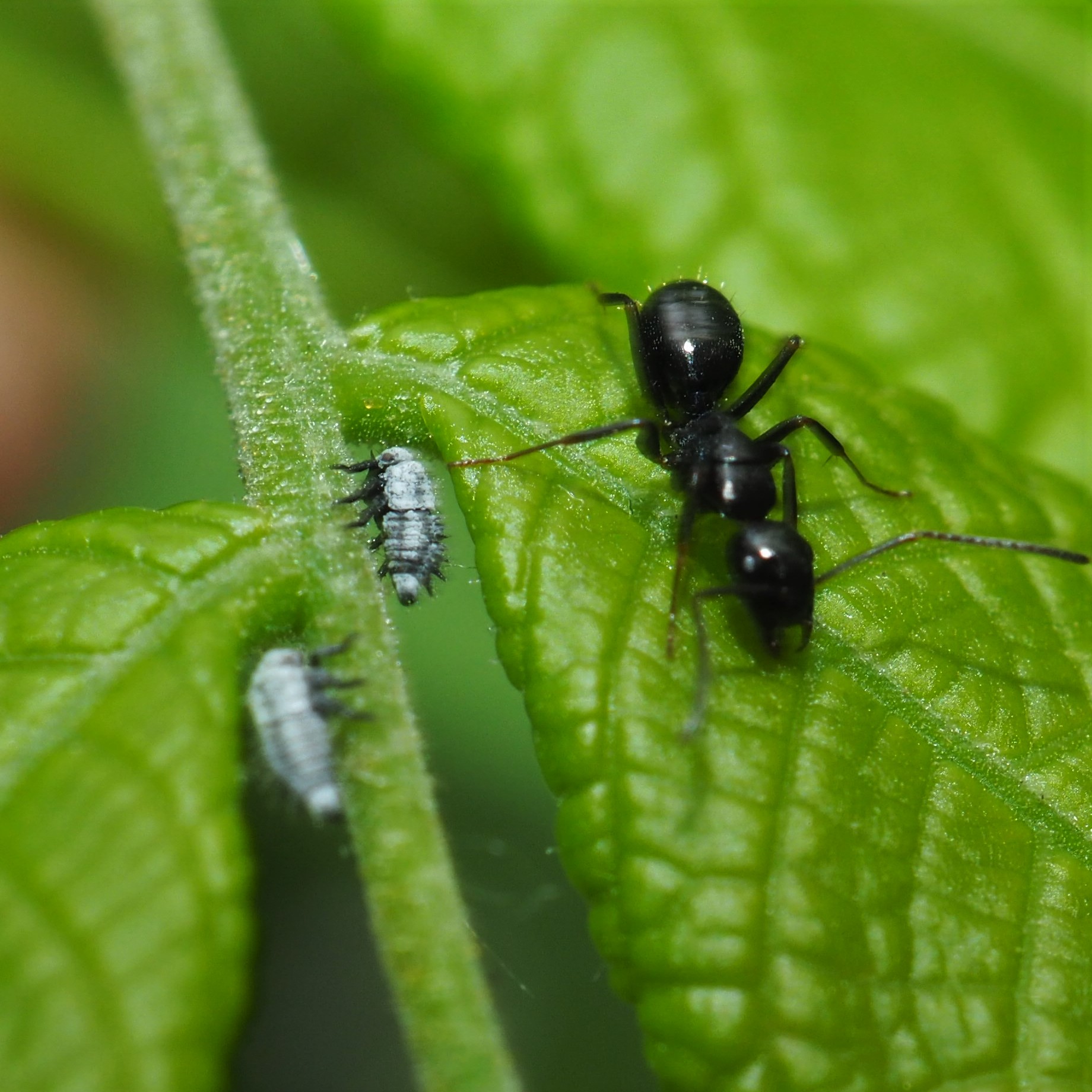
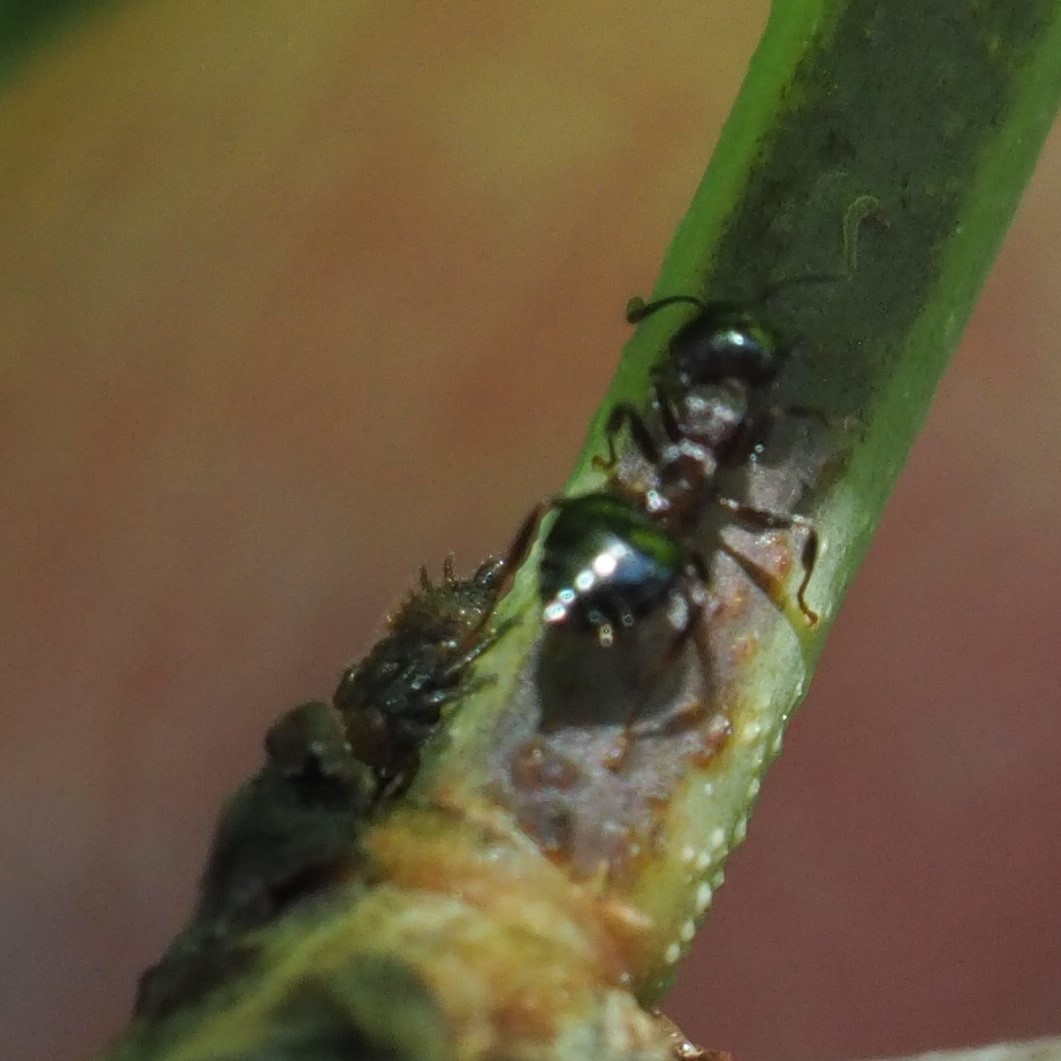
At this stage, very early June, it is very hard to locate the Two-mark Nymphs. But out in the region at the end of my driveway, there is a very young Redbud that is shorter than I am, and when I was out there the other day, each joint seemed to have an Ant nursing a barely visible Two-mark Nymph. Later out back with another slightly older Redbud, I was finally trained to recognize where the Nymphs would be and they are now visible to me. Here are a few scenes with Ant and Nymphs. I'll talk more about this relationship when we get to the Treehoppers (at the end of Bugs).
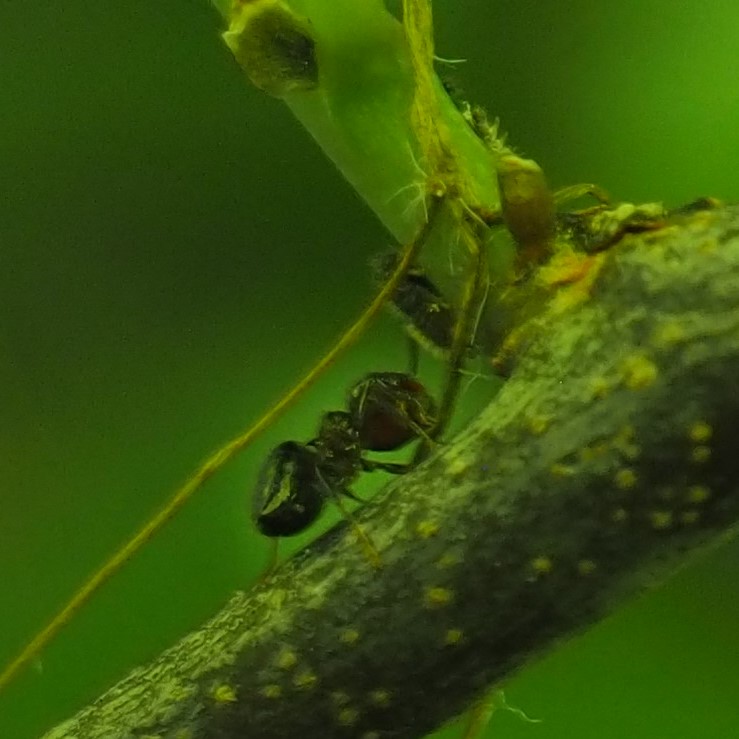
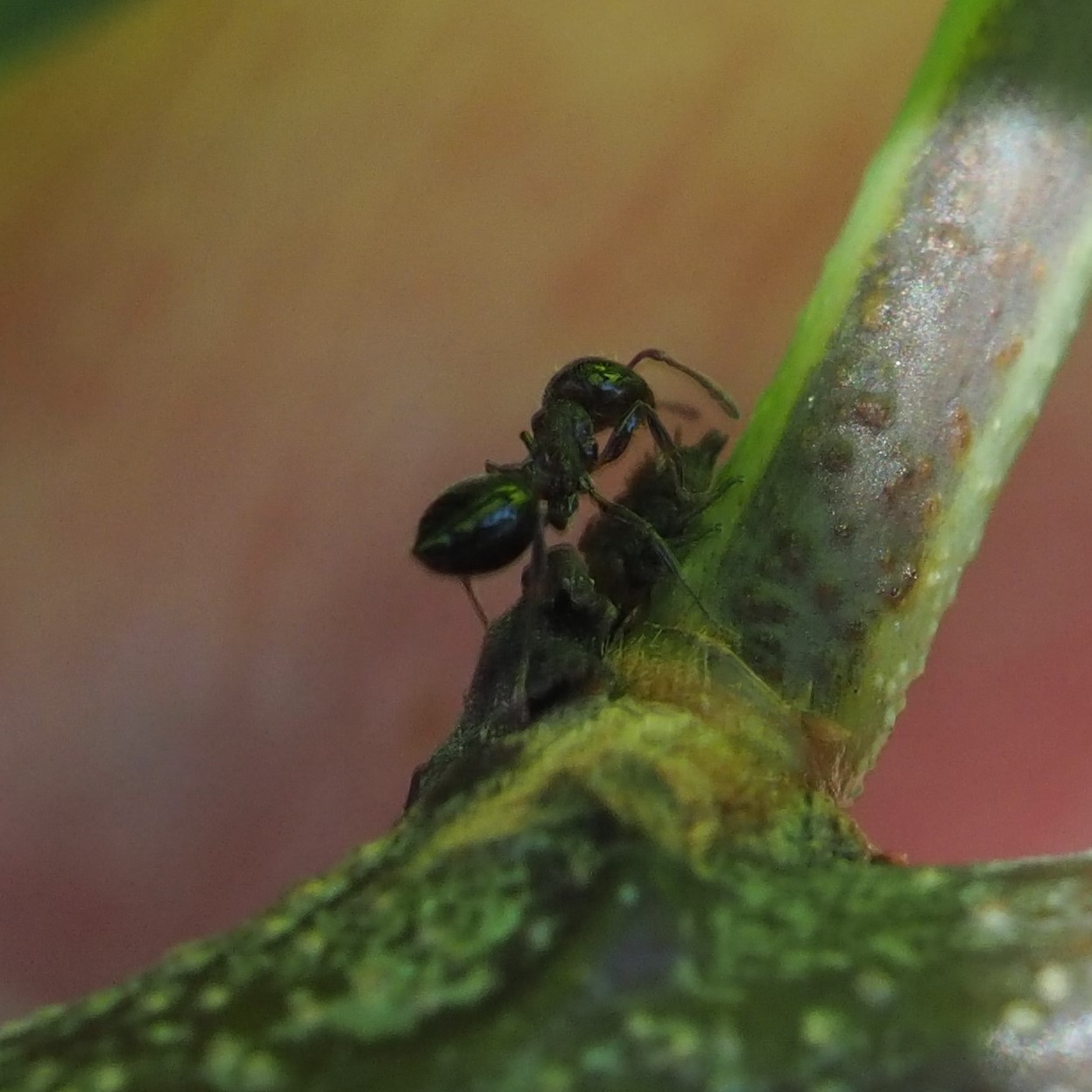
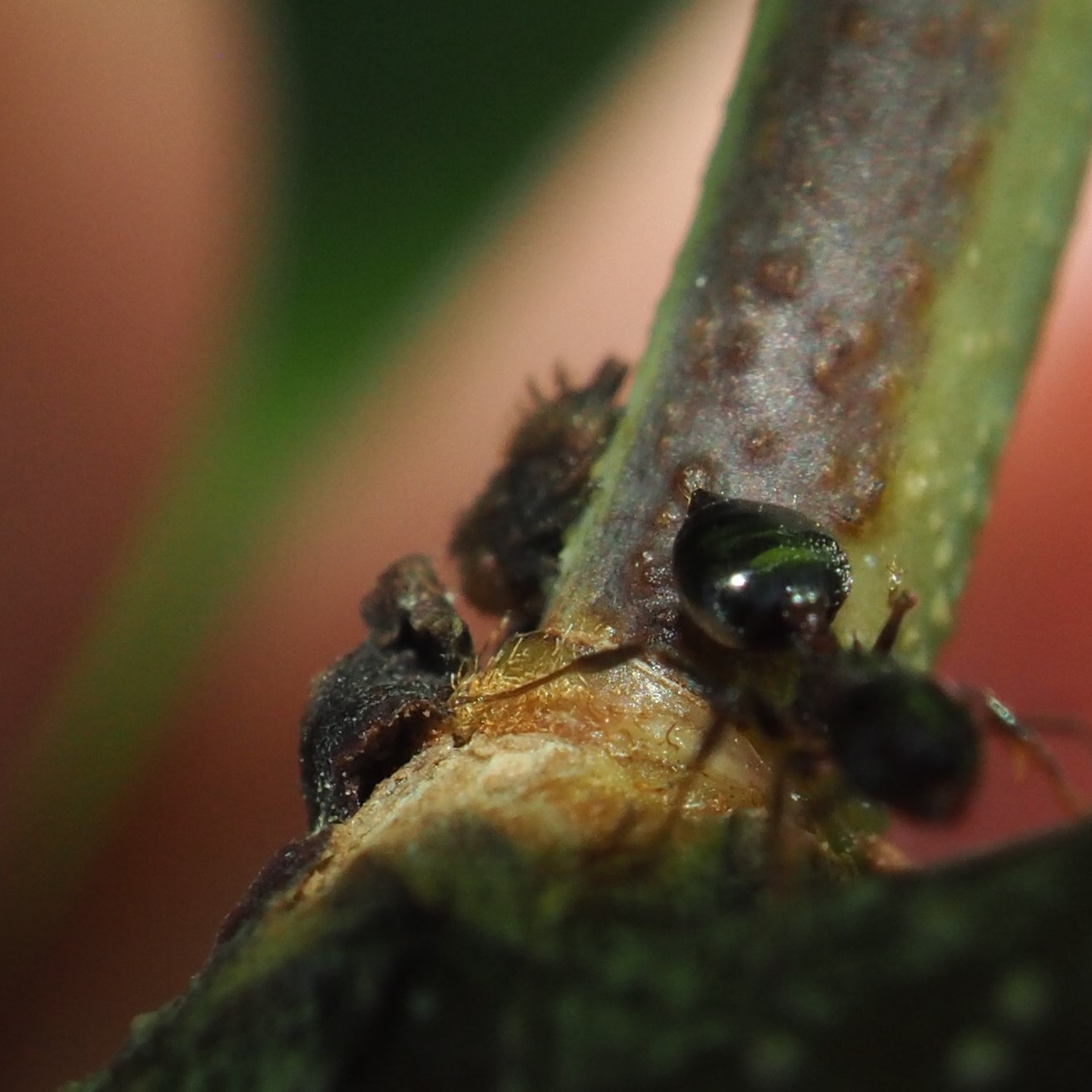
Well, we were so happy last week to see a dozen or more of a new kind of Barklouse, some nice darker browner ones (that my colleague Scott Shreve tentatively identified as some kind of member of genus Lachesilla. Each day, they either spread out or were scavenged by all the little spiders running around on the North Wall nowadays. Anyway by June 4, we were down to one survivor. But don't lose heart for them yet. They may just be good spreader-outers.
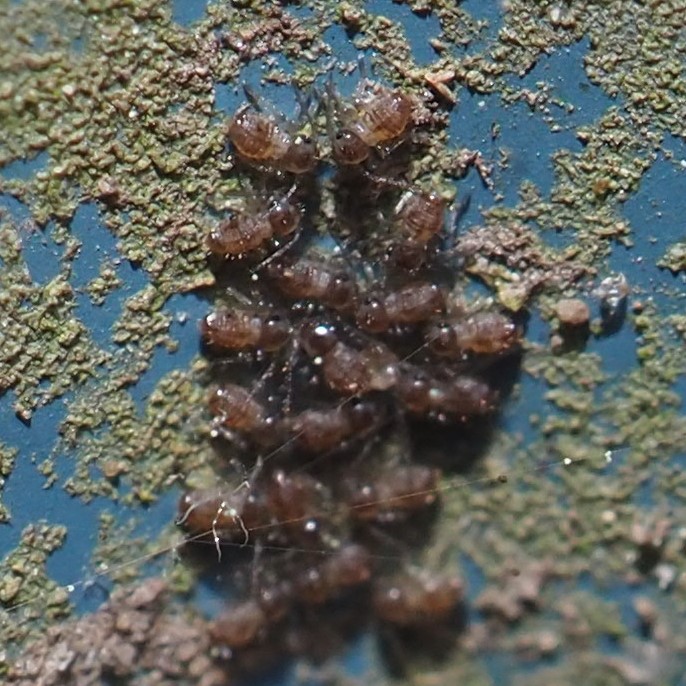
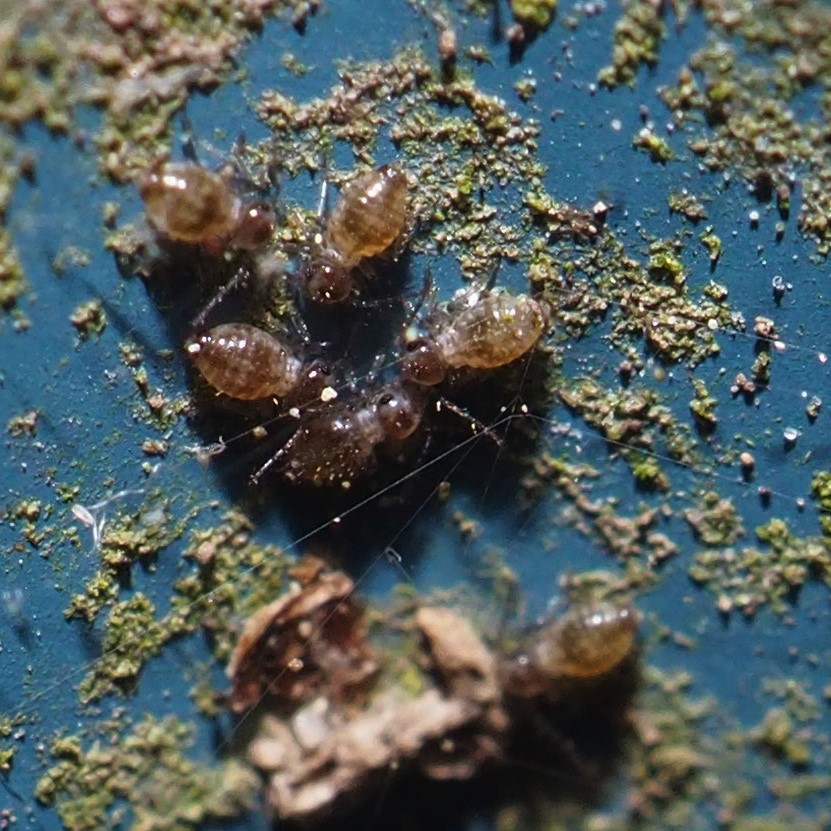
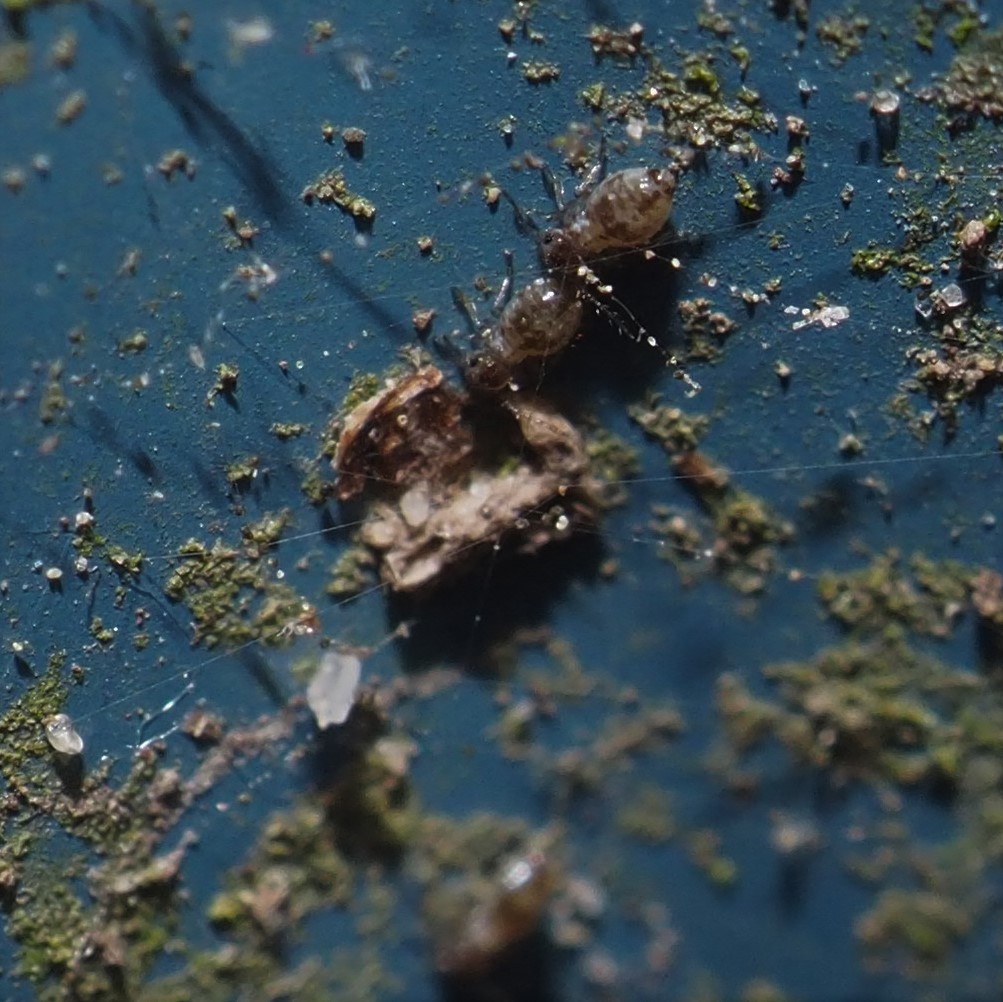
Meanwhile, all those baby Graphopsocus nymphs seem to have matured and many of the new adults immediately started laying eggs. Now there are healthy clutches of eggs all over the East and North Walls. (Meanwhile again) the old eggs on North 11 left and right are still there and seem to be readying to hatch some day soon.
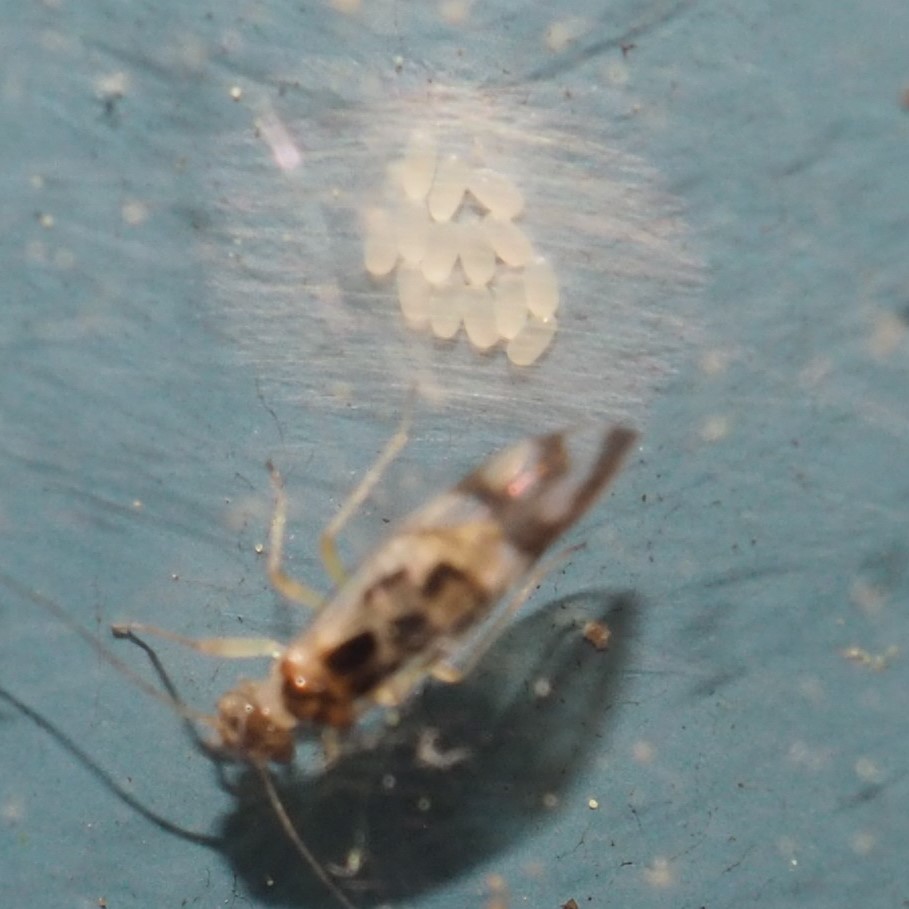
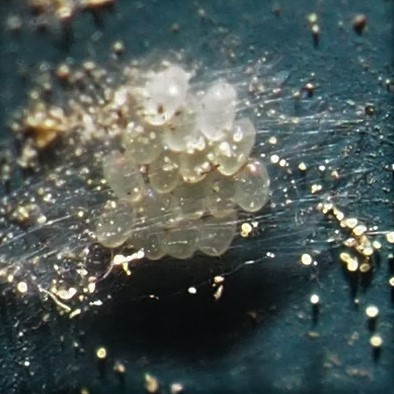


We are now finding little adult Valenzuela flavidus in more places as time goes on.
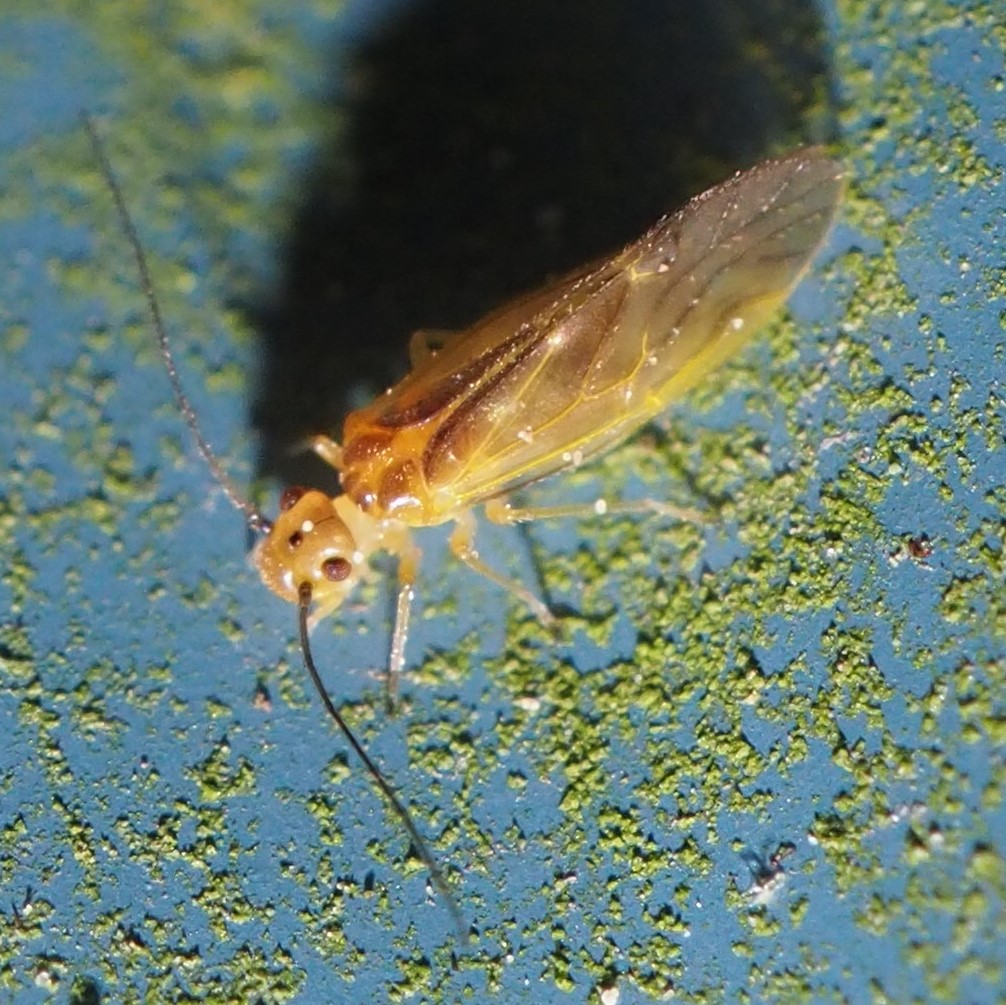
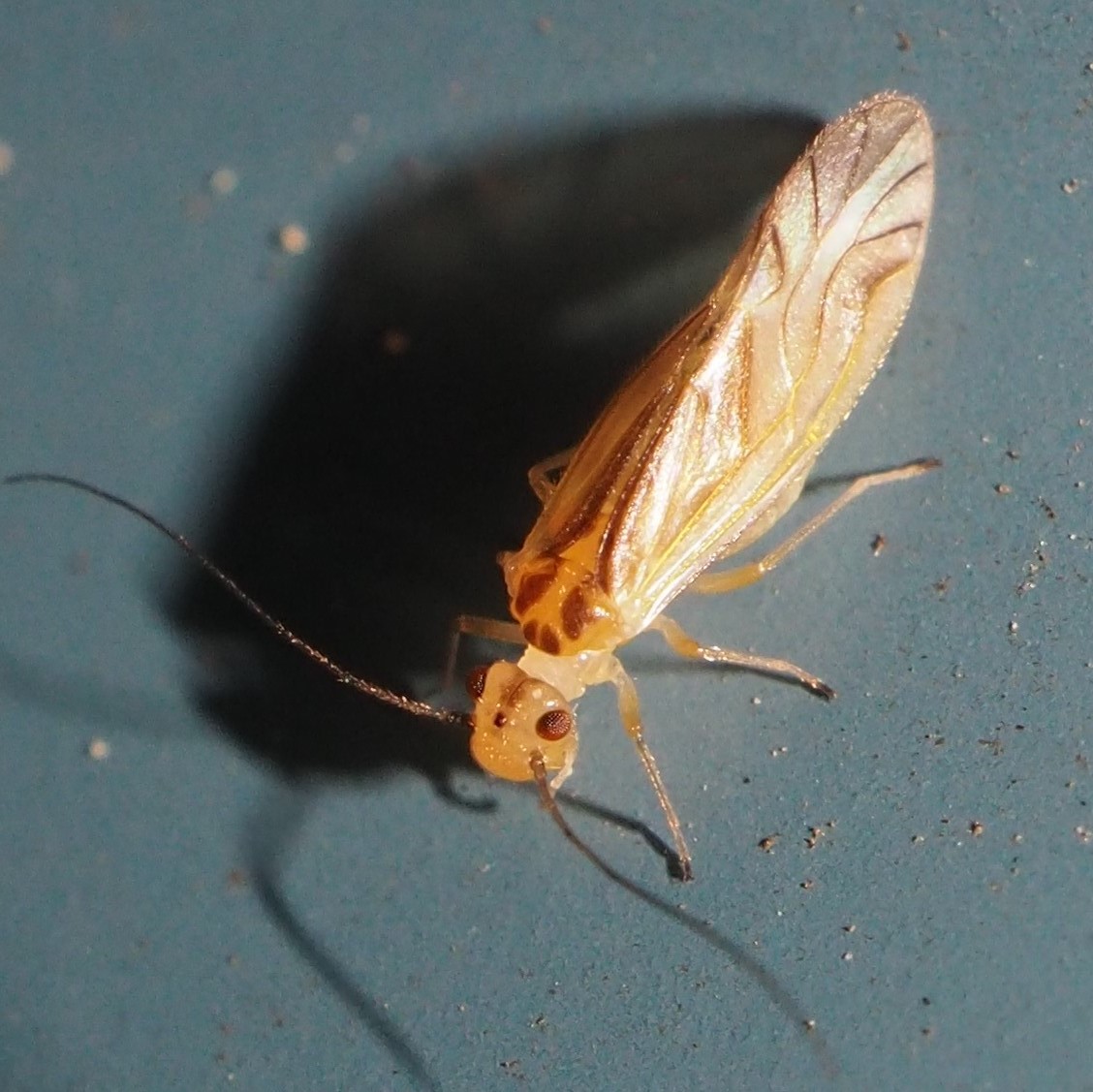

There are still quite a few egg masses that seem to be "different" in some way. Here are the ones remaining on South 4 from East, down quite a bit from the putative Ectopsocus batches that already hatched; East 9 from North; and East 4 from North. Reminder: there are several genera of Barklice that we have NOT seen any of so far this Spring - Polypsocus and Echmeptera coming to mind first.


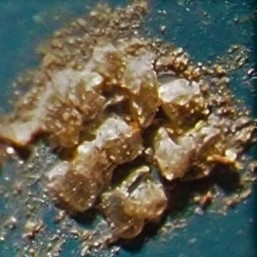
Bees. Bees seem to issue an APB when they see me with my camera, but I did get a few pictures this week. This one was in Dame's Rocket. Third is a large Bee that was supping at the Wild Roses. Last was a large Bumble Bee but I shot it from a long distance!




The Beetles aren't scared of us. Here we have one of those reddish Beetles that like the Shop siding. Next is a black Weevil in a Walnut tree. Third is a Carpet Beetle from the Goutweed. Actually there were two or three more Carpet Beetles. (They just love the Goutweed!)
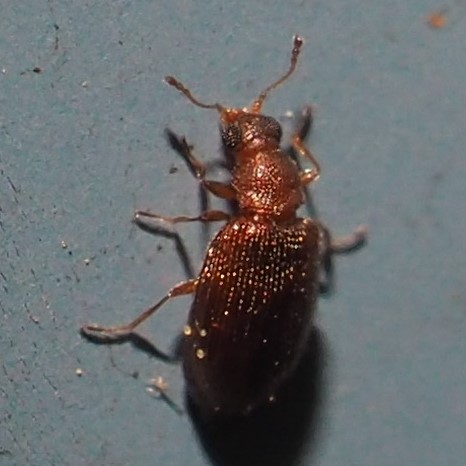
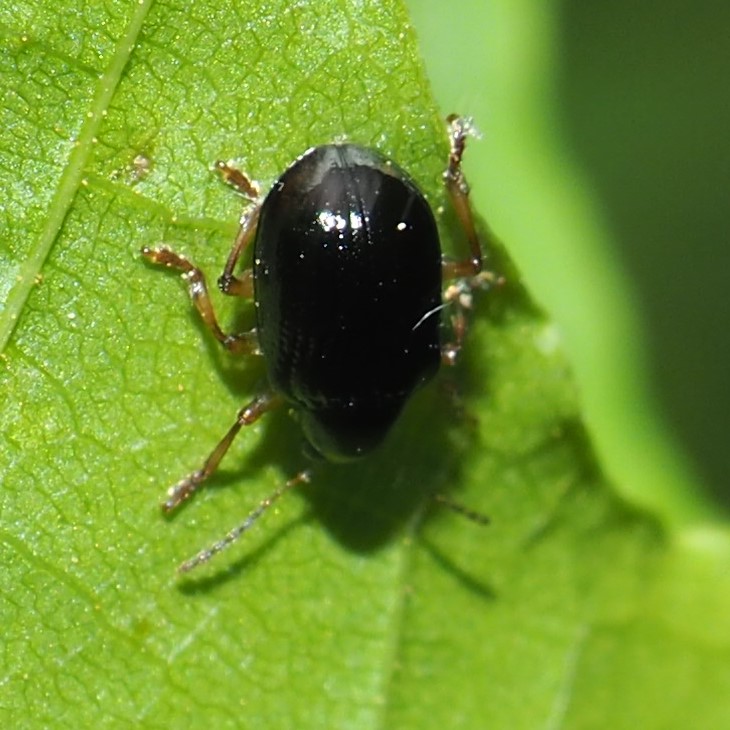
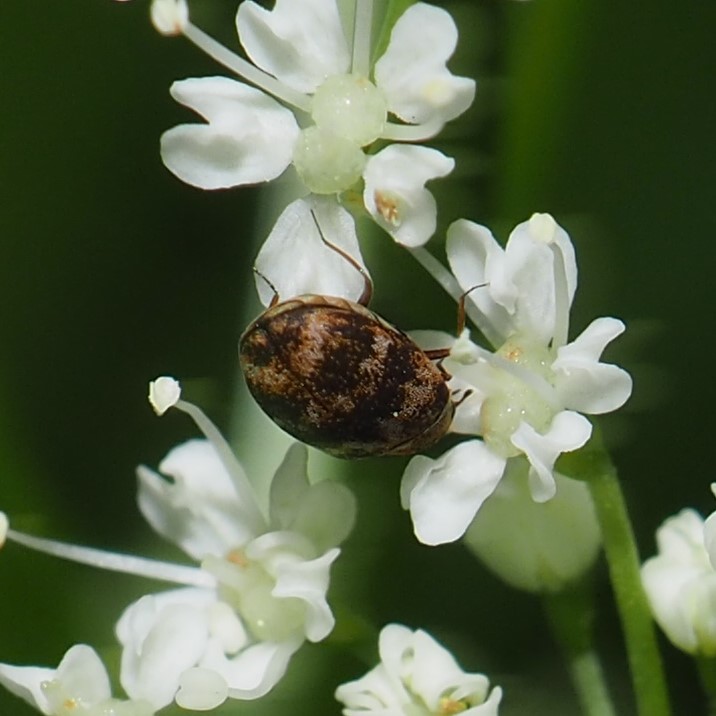
This first little Beetle is apparently in the Paria genus but I could NOT find one like it in the pictures. I kept wanting to call number 2 the Death's Head Beetle, but apparently there is no such Beetle namewise. Number 3 is another Goutweed lover, Valgus hemipterus.
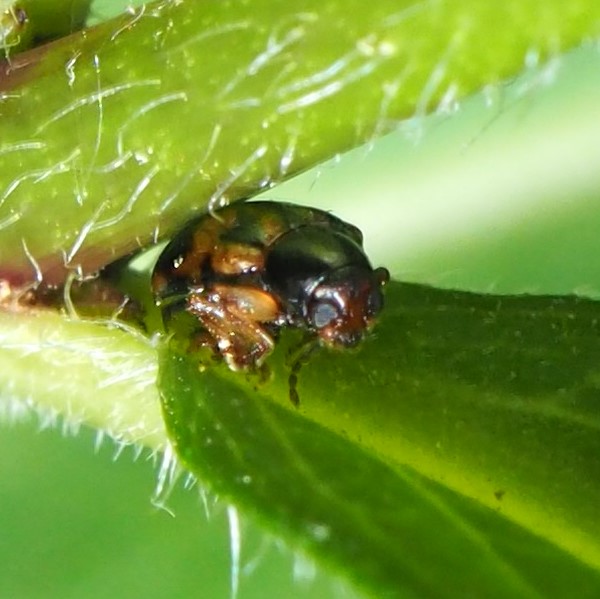

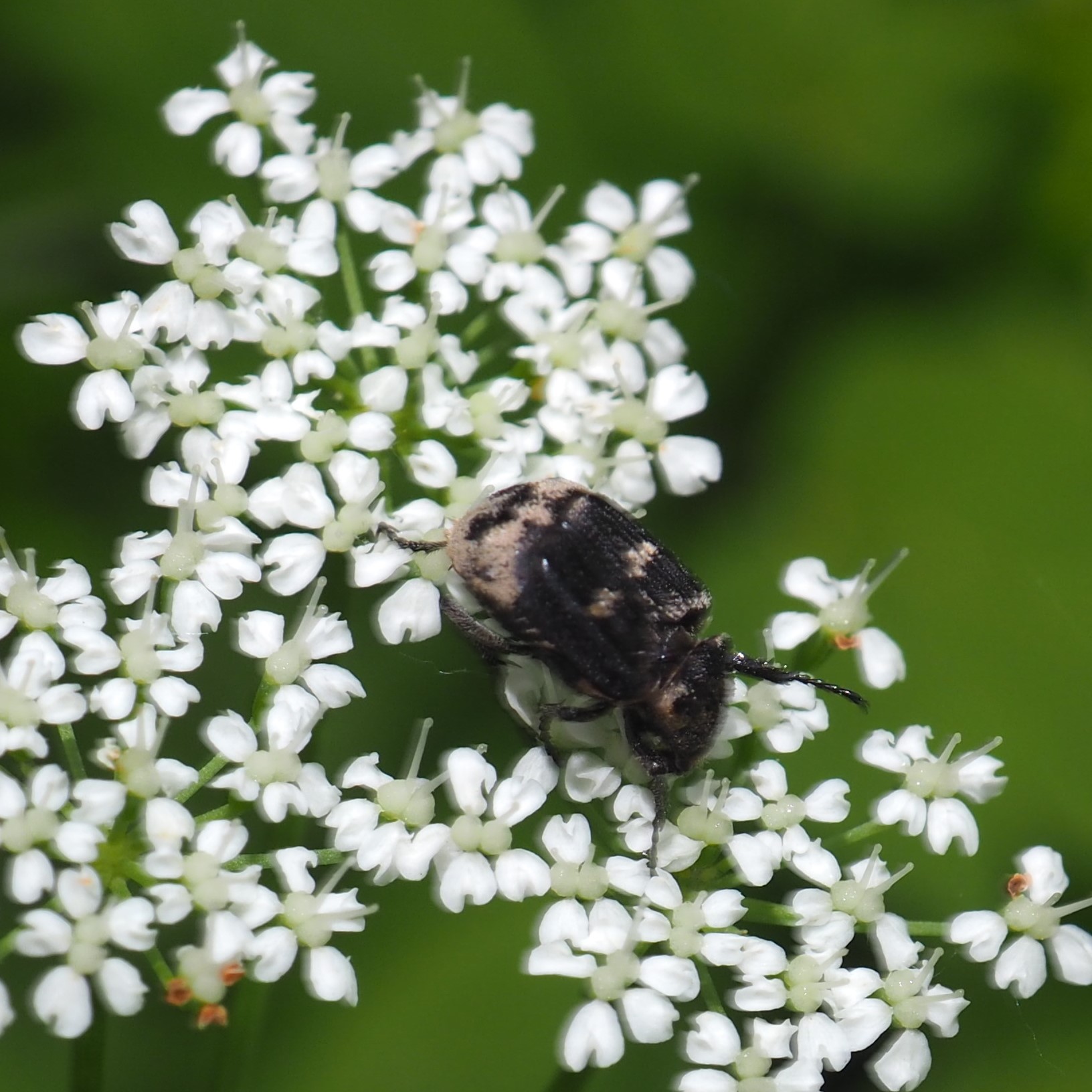
First, an unknown red and black Beetle. Next (2 photos) is one I matched with the Flat-headed Apple Tree Borer, but it is somewhere else in the same genus.
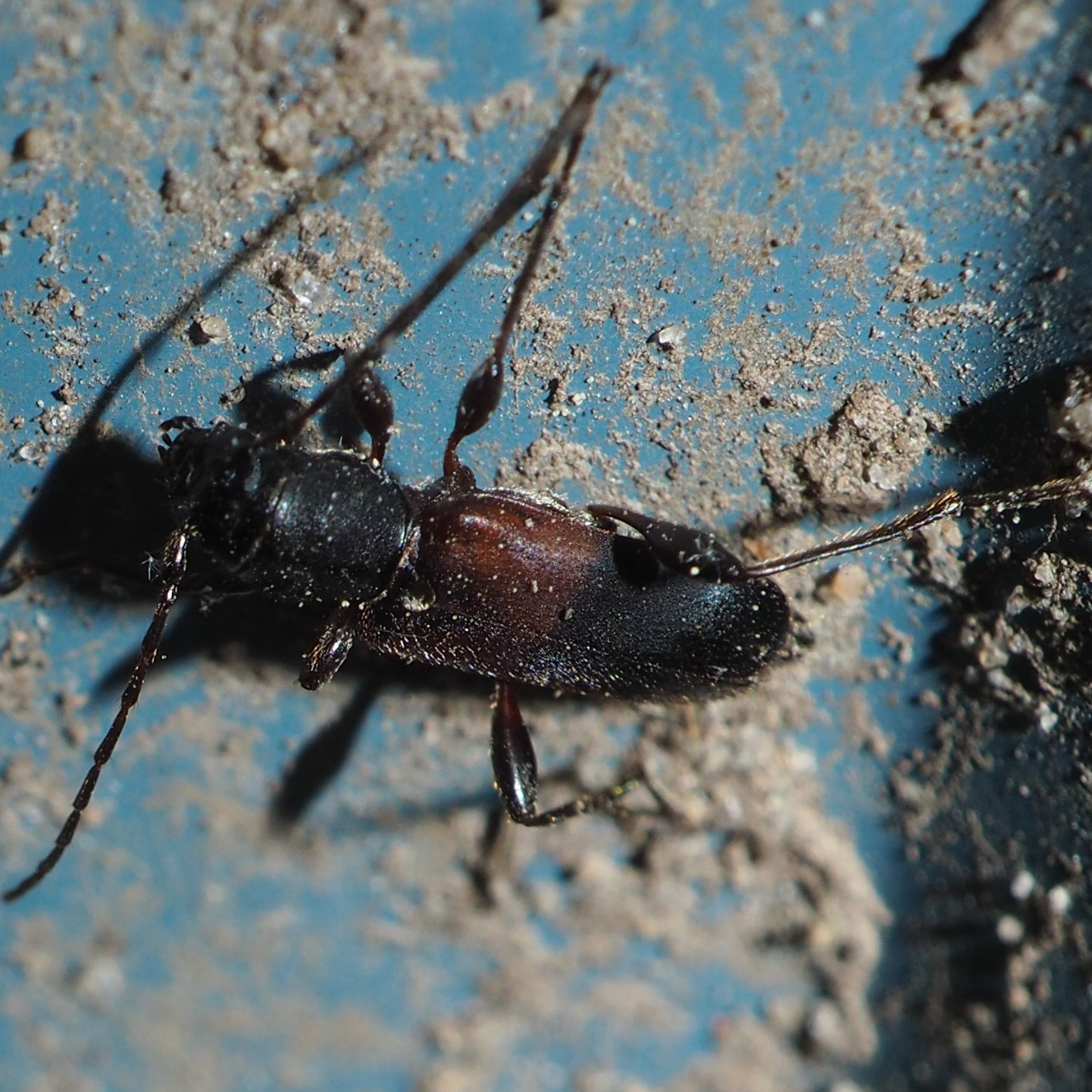
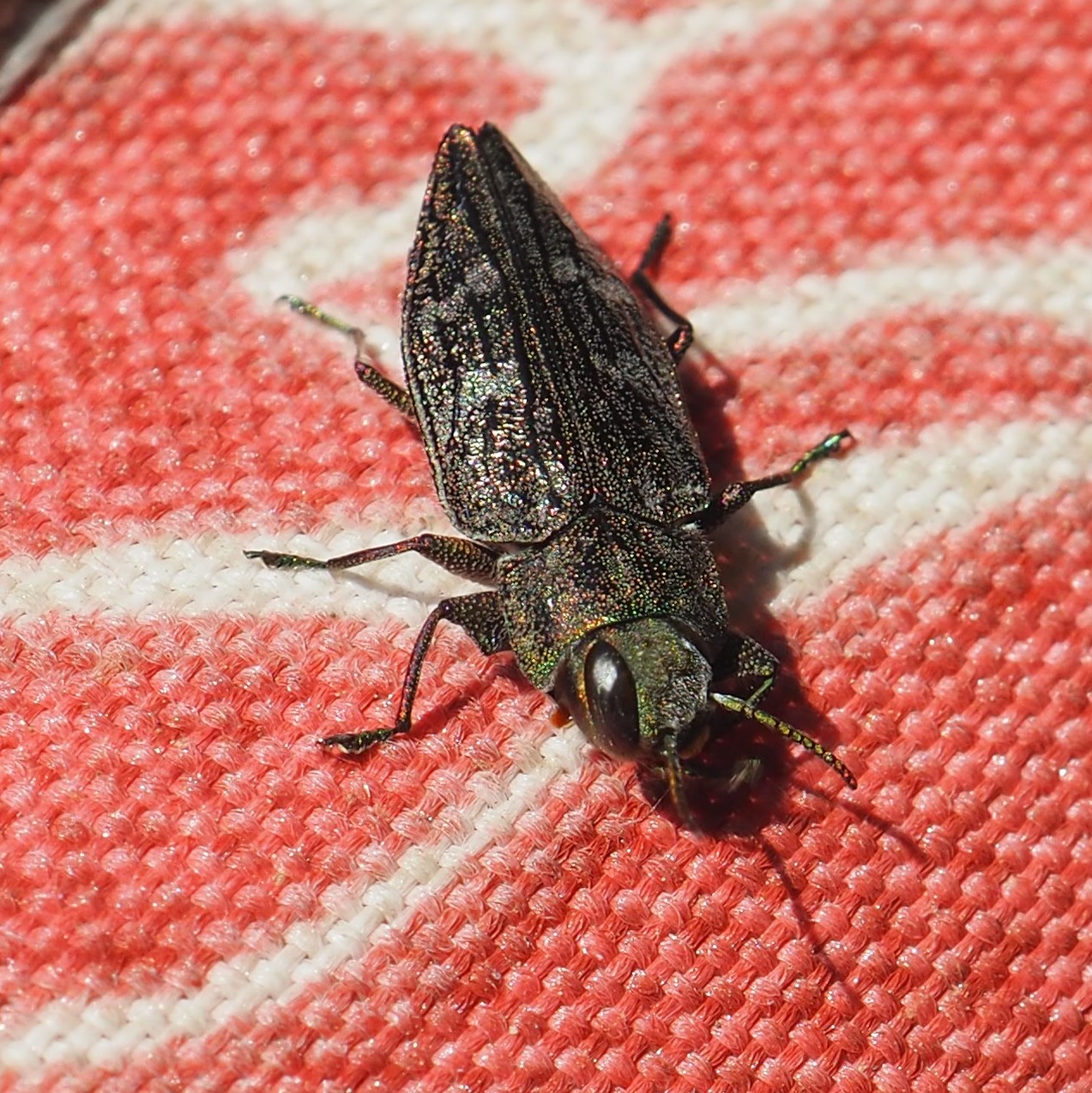
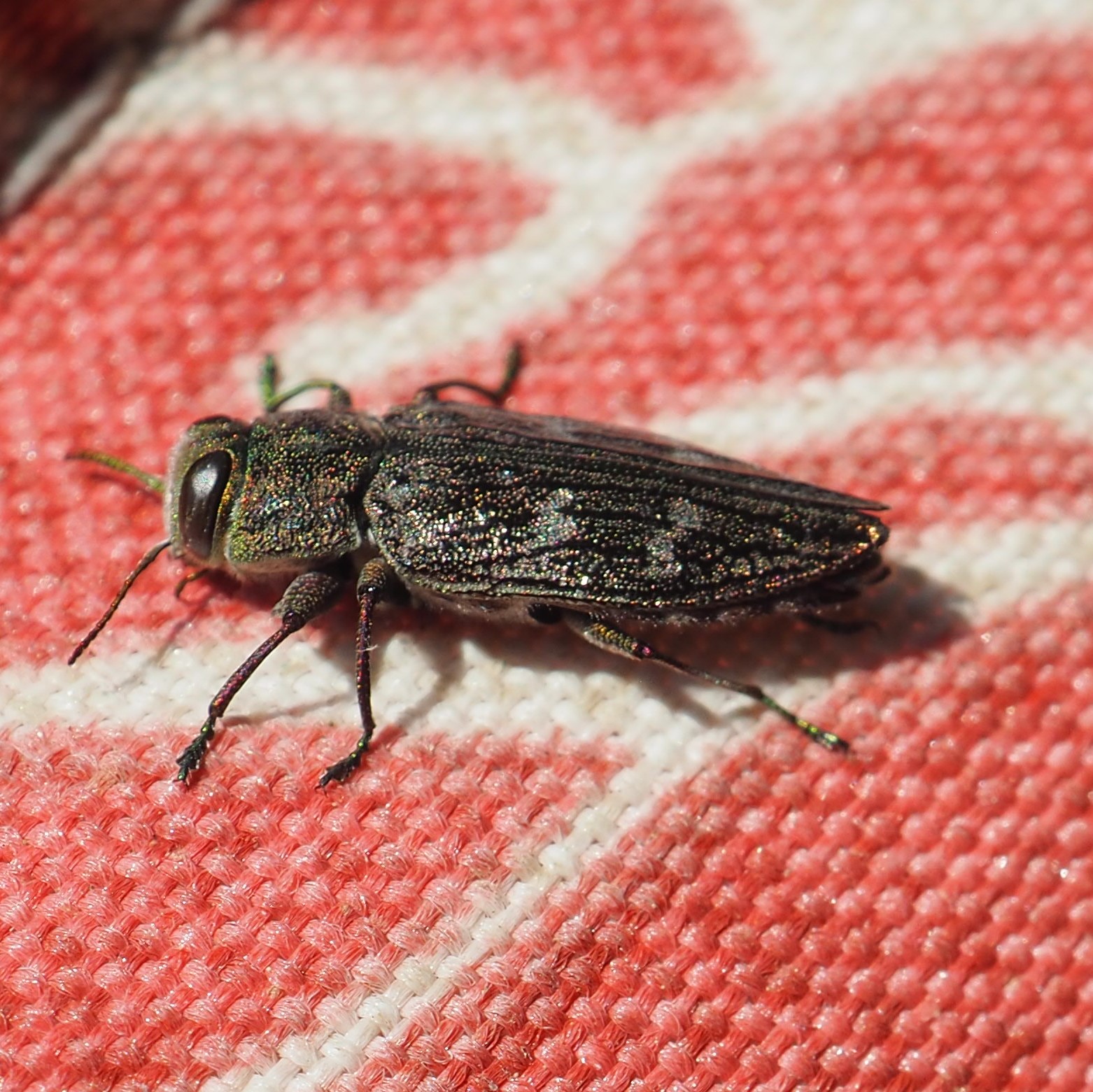
Then that Immigrant Green Leaf Beetle that was actually green last week. Then a Brown Leaf Weevil in a Redbud Tree. Then a Black Weevil in a Walnut Tree. One more Weevil - our old friend, the Redbud Bruchid.
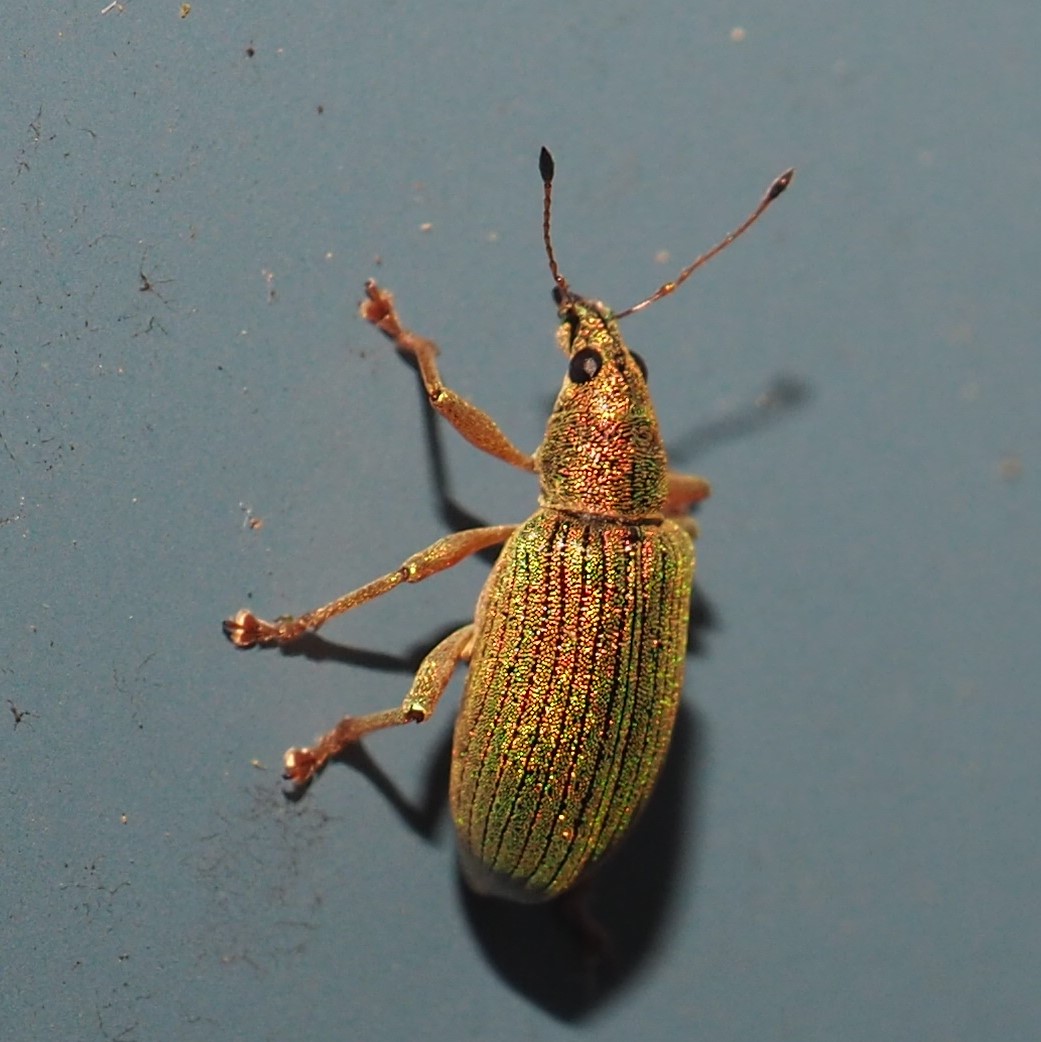

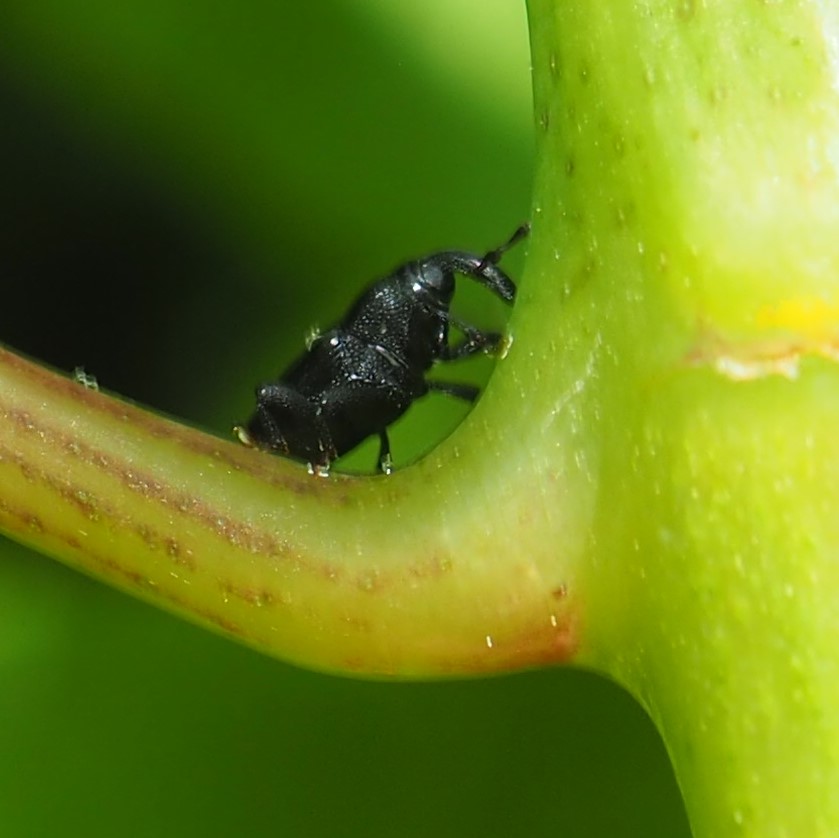

So, not a bad bag of Beetles. But guess what? If you remember the Ceutorrynchus inaffectatus that figured so heavily in the last Blog as the one that lives in Dame's Rocket almost and maybe completely only, then you might be very touched to see it again. A couple of days ago, the Dame's Rocket in the front yard was almost devoid of flowers, which made it very easy to see the little weevils, many of which had paired off, and were busily propagating the species!



So let's visit the Bugs. The Pale Green Assassin Bugs are almost all grown up. Here is one nymph with medium length wings. But I did spot one of the OTHER Zelus Bugs in its Nymphal form. That's Zelus tetracanthus, the four-spurred Assassin Bug. While we're on the subject of Assassins, you'll be happy to know that the Empicoris errabundus that we saw on the North Wall as a juvenile has finally matured!
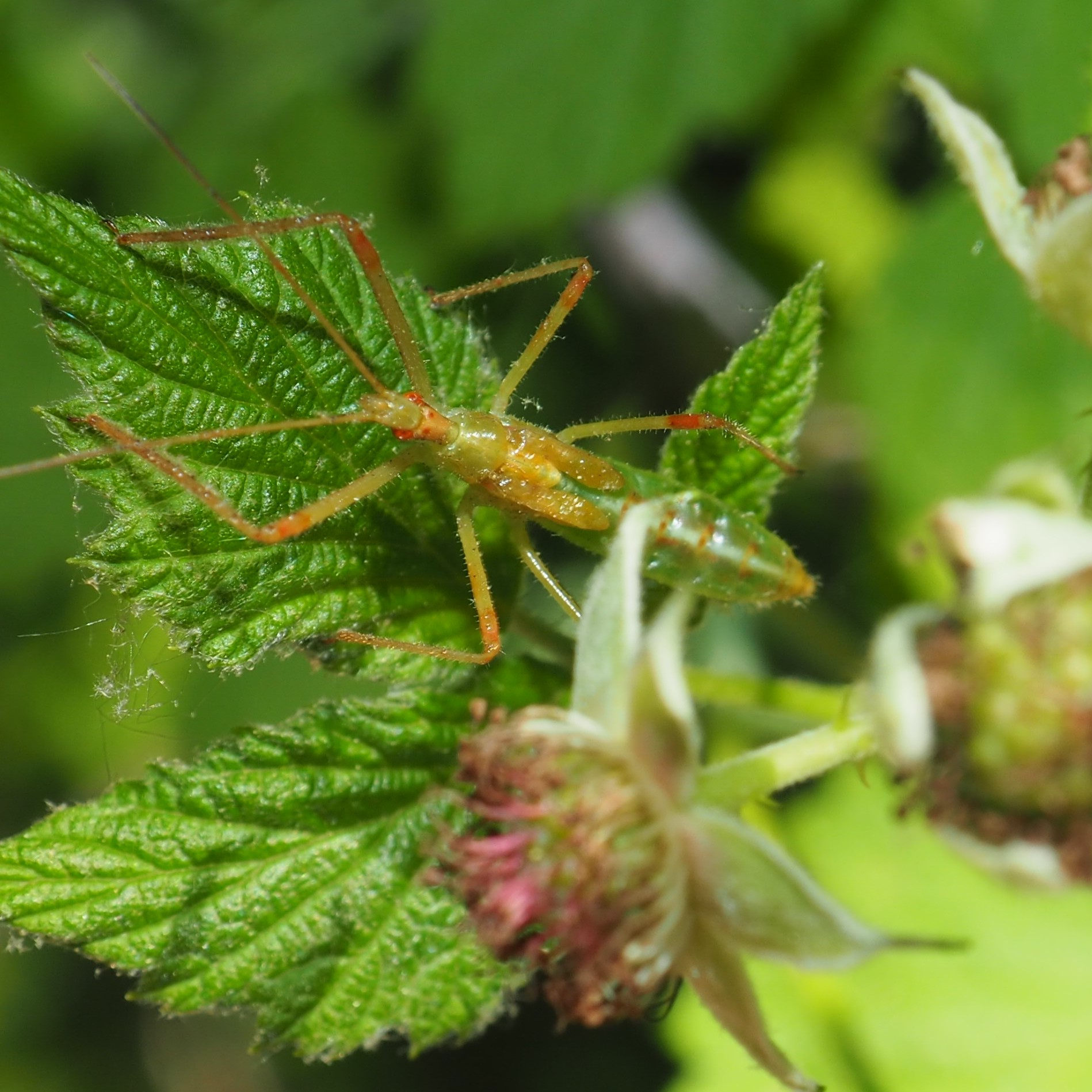


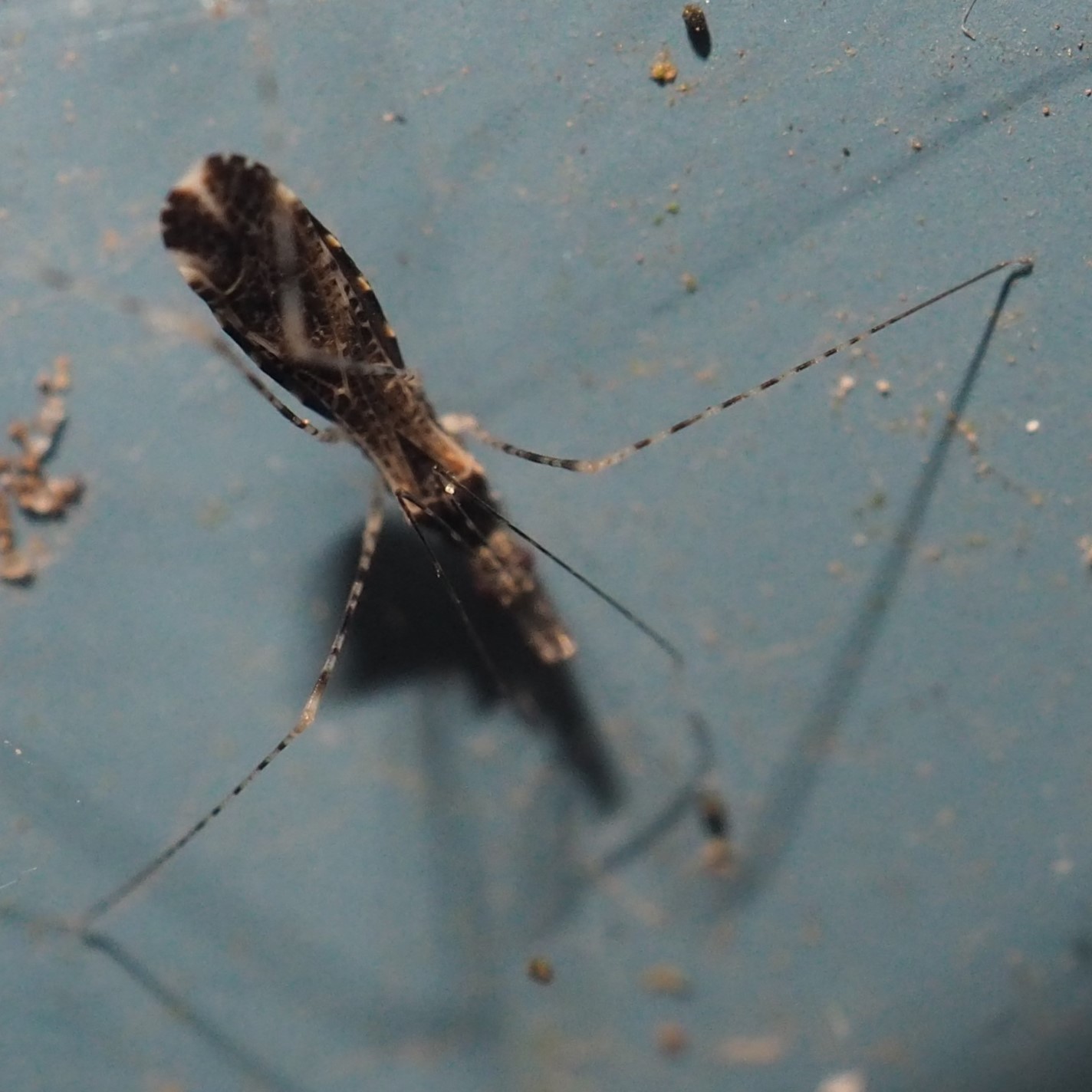
It was a pretty slow week for Leafhoppers. There was this beautiful little greenish one, which just gets its tribe name because they are so hard to distinguish. It is in tribe Empoascini. Second was one that I have always called Agallia quadripunctata, but Hopperdude in iNat showed me how close mine is to A. constricta. So put a hold on that ID for now. The third one, Ponana pectoralis, at least has two names! (That means it is ID'ed down to species!
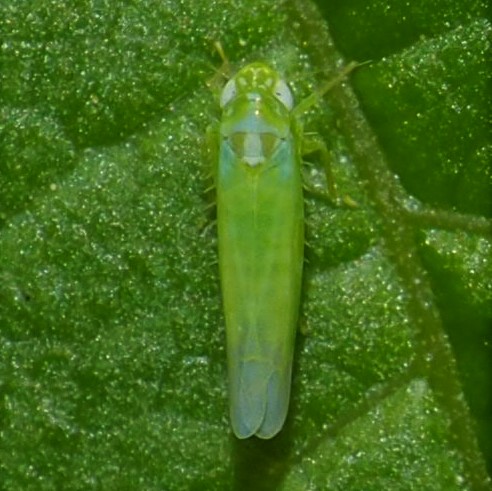
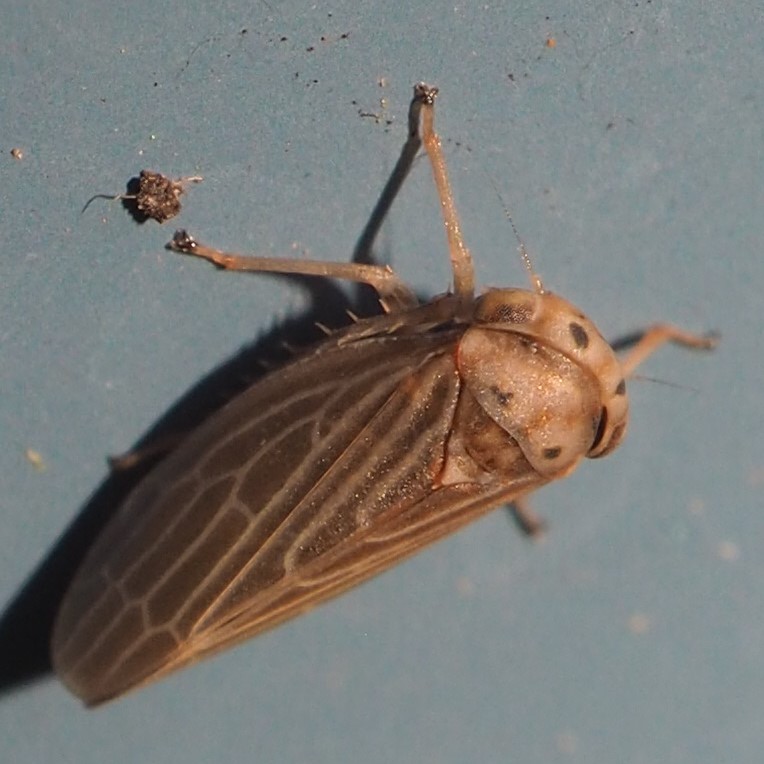
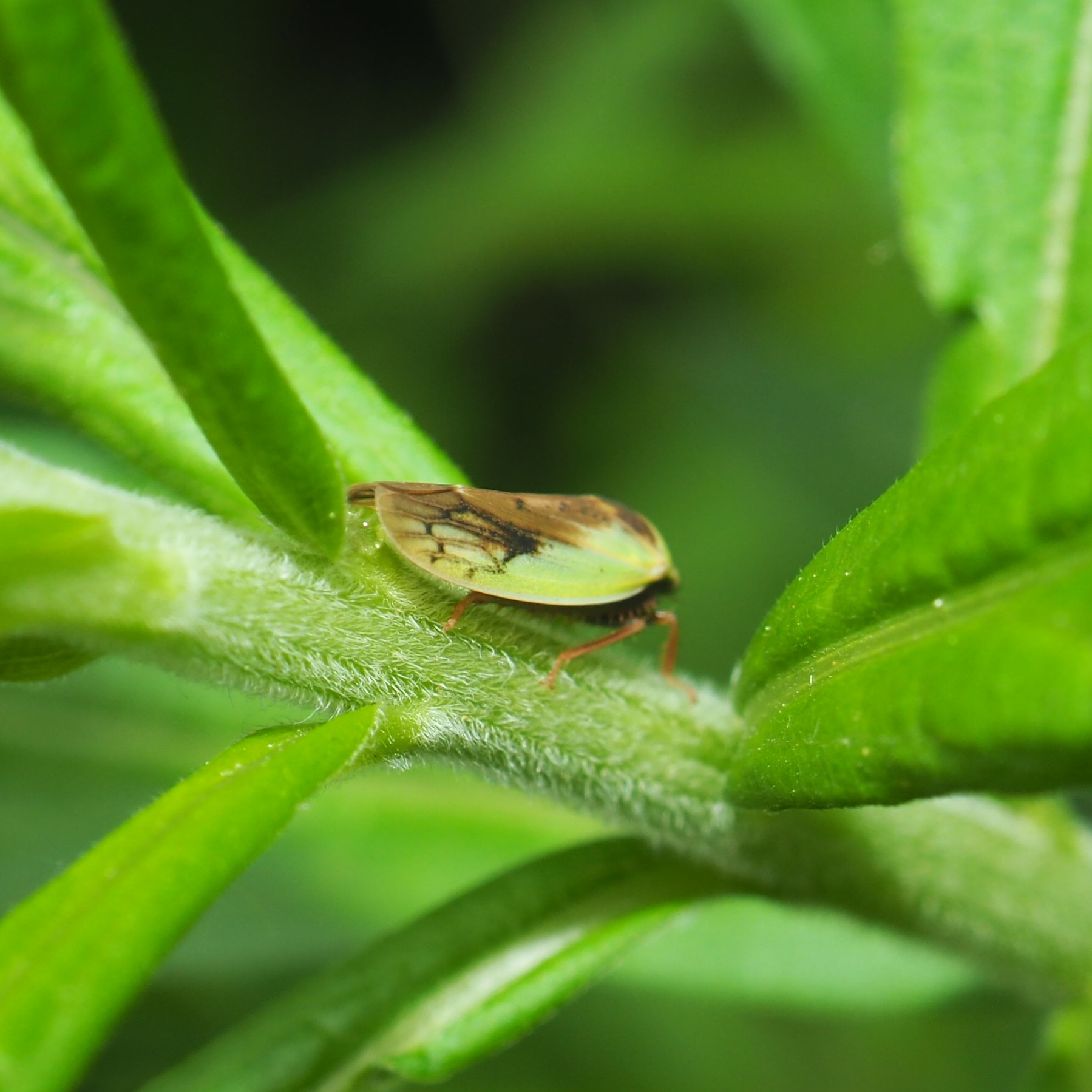
One of my favorite larger Bugs is the Orange-tipped Leaf-footed Bug. (That's its new common name.) The prize for smallest Bug spotted was this one which was walking carefully on my wrist. I could just barely feel its footsteps.
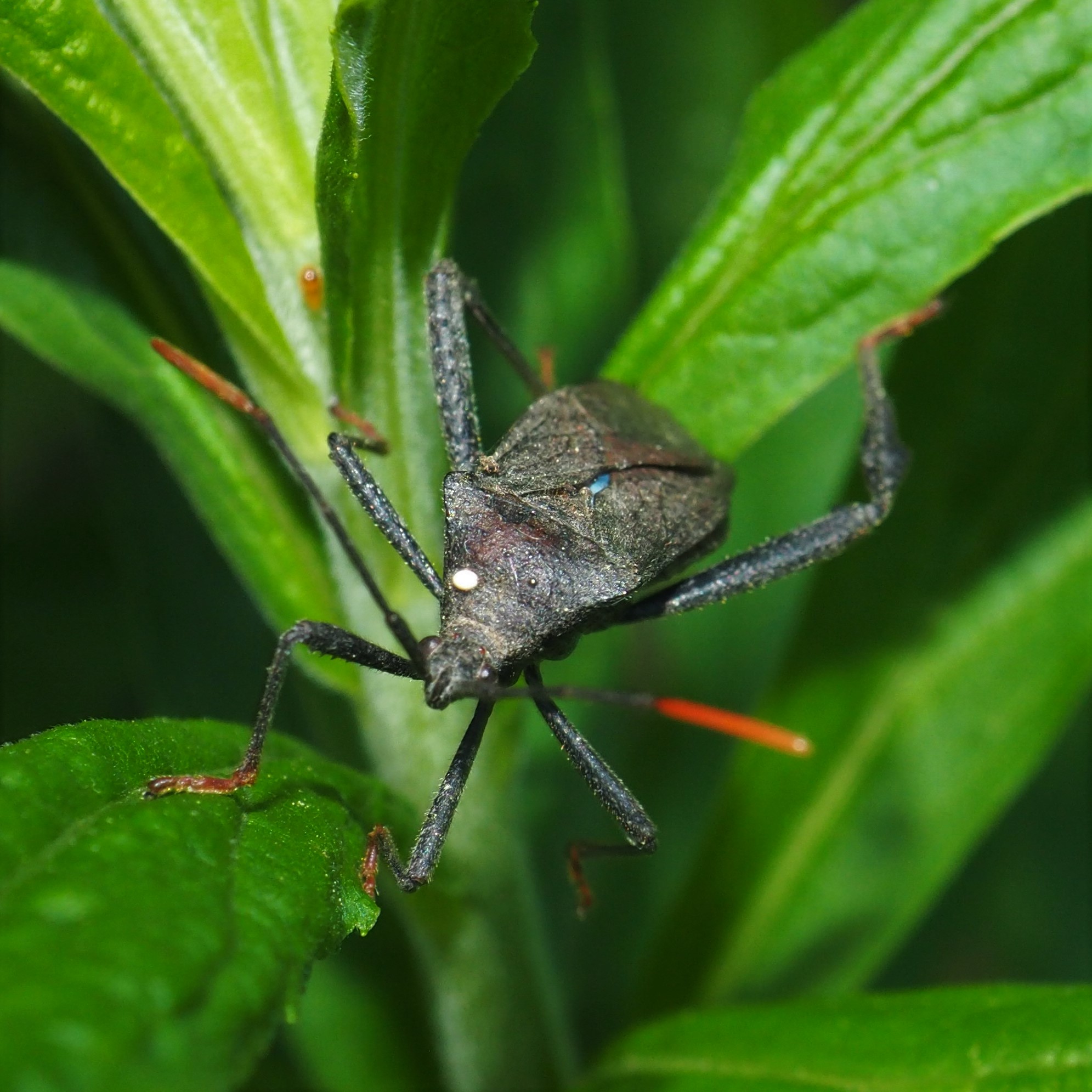

Plant Bugs were mostly adults this week. When I was checking out the Goutweed, I found a very strange Plant Bug - strange because it had just moulted out of its nymphal form. This picture shows the adult Four-lined Plant Bug and the shell it had been occupying till lately! Next is an adult Lygus Bug. Third is one of those Phytocoris genus Bugs we followed around last year. (Maybe you'll remember the intricate red-lined pattern on its body.

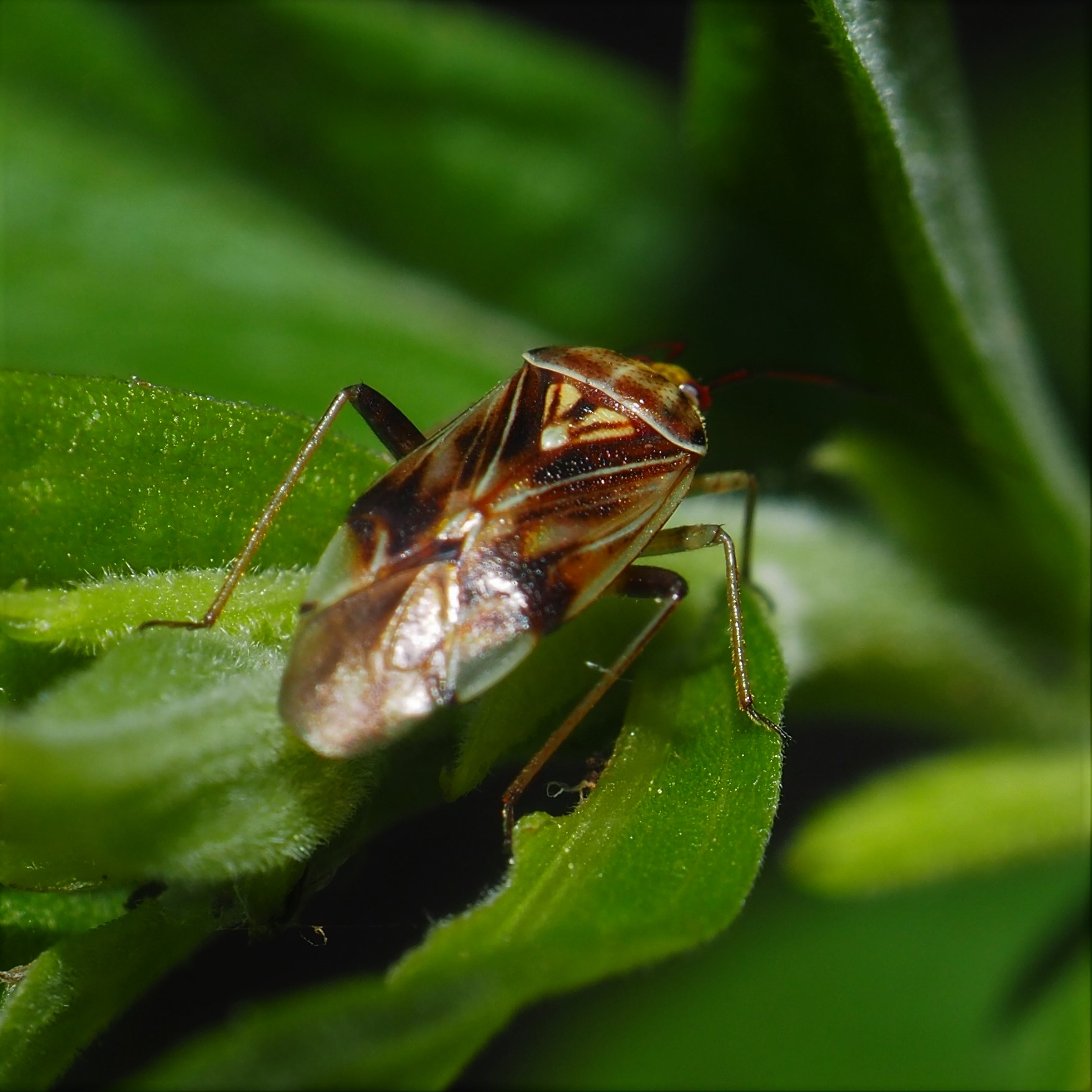
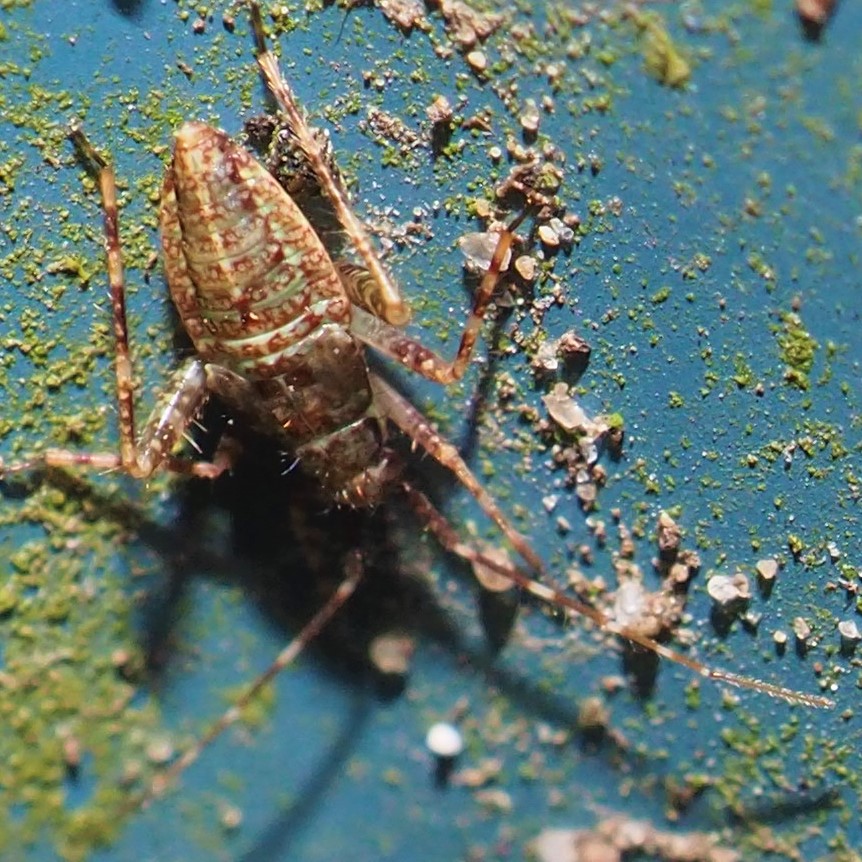
The Treehoppers are in! Both of the kinds that usually inhabit my yard have shown themselves. This Keeled Treehopper has probably overwintered but where? I never know where it comes from. This one showed up on that weird Wild Rose/Blackberry flower that planted itself by the driveway. It will eventually end up in one of a few Thistle plants. I made sure to plant two Thistles in the front side yard where the two Thistles from last year sat. I also have another nice plant in a pot. There is of course the one that I was trying to dig up in the front yard where I pushed too hard with the big shovel and found myself lying bug-like on my back till a passing man in a truck helped me up. You didn't want to hear that part. Anyway, no adult Keelers have planted themselves in any of these "for occupation" Thistles! On the other hand, somehow the eggs that the lady Two-mark Treehoppers laid on August 16, 2020 in the Redbuds have hatched! Actually there are several loci for the Redbuds. The young tree at the end of the driveway turned out to have visible nymphs this week. And since they were visible, I decided to look harder in the other Redbuds, and actually found a few! So our Hoppers are ready and getting ready for a Summer's Project. Picture 2 shows one of the Nymphs from the young tree at the end of the driveway. Picture 3 shows one from an older tree (not the oldest, which is trying very hard to disassemble itself out between the Shop and the Pond). Forgive me if I repeat some pictures I may have shown while we were talking about the Ants and their Nymph-Nanny job.
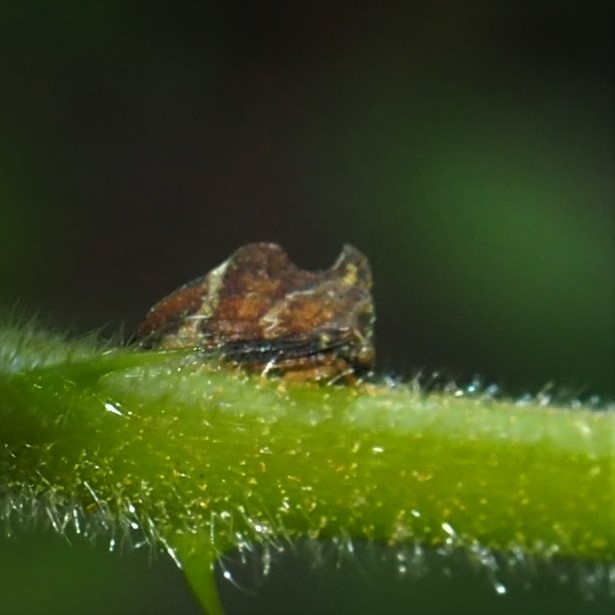
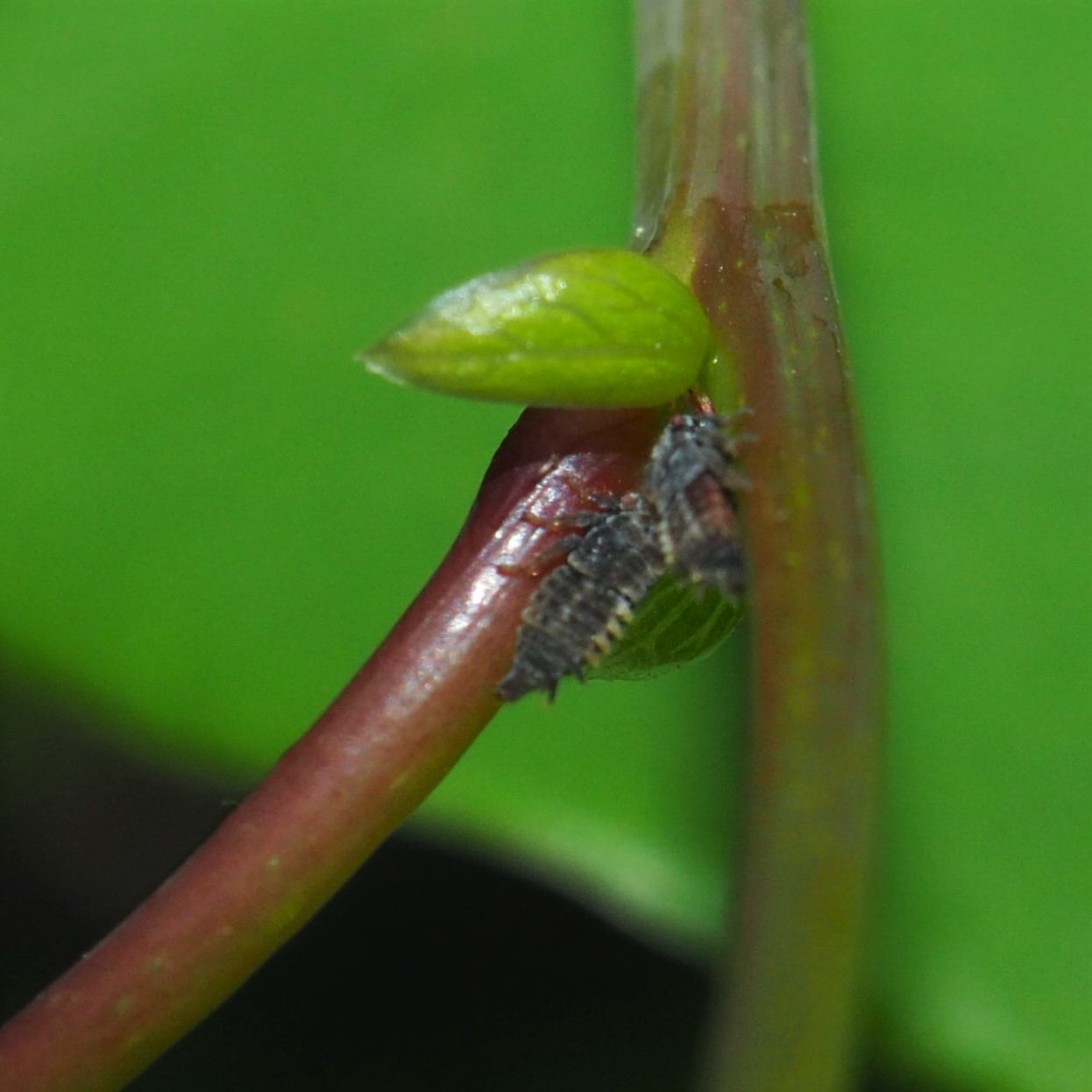
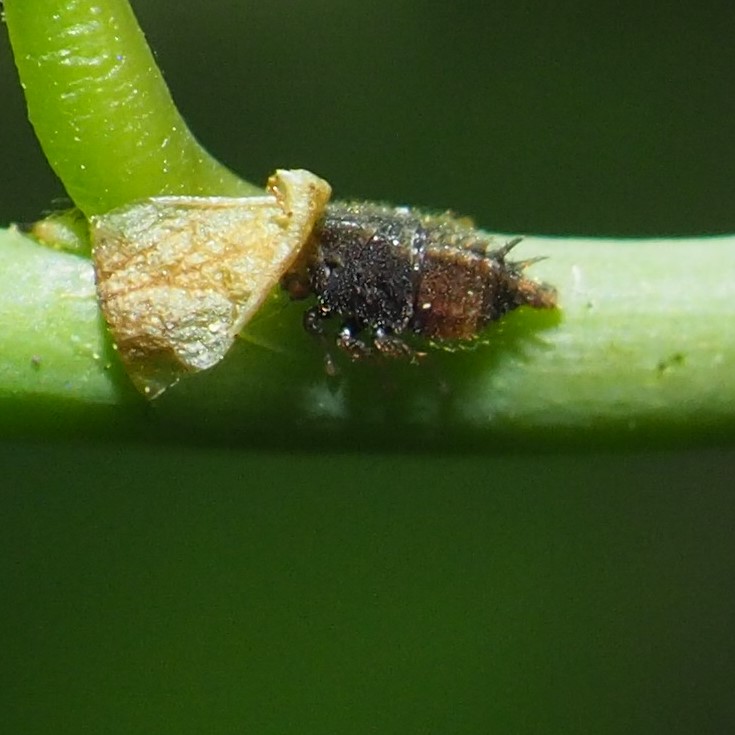
I was going to place the Dustywings in this place even though they are not Bugs or relatives of Bugs, so here is one of the Dustywings we saw, looking healthy and happy. Then suddenly I recalled that the Dustywings ARE relatives of the Lacewings. I hadn't seen a Lacewing yet, but the other day a very strange creature with pincers appeared among the Barklice on the North Wall. The ID app in iNat identified it as a kind of Lacewing, that is, a member of the Carnea-group Green Lacewings. Picture 2 shows the Lacewing and picture 3 shows its style of movement along the wall!
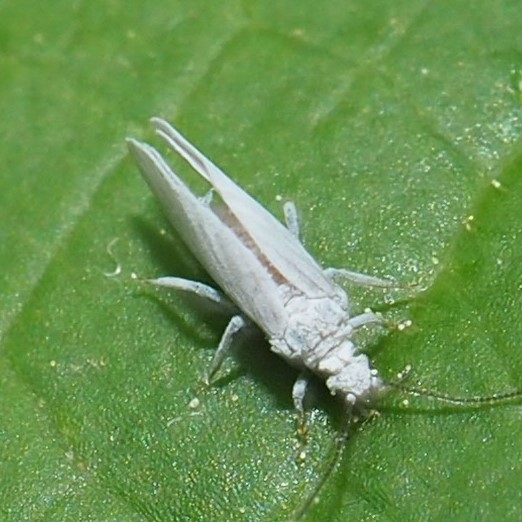

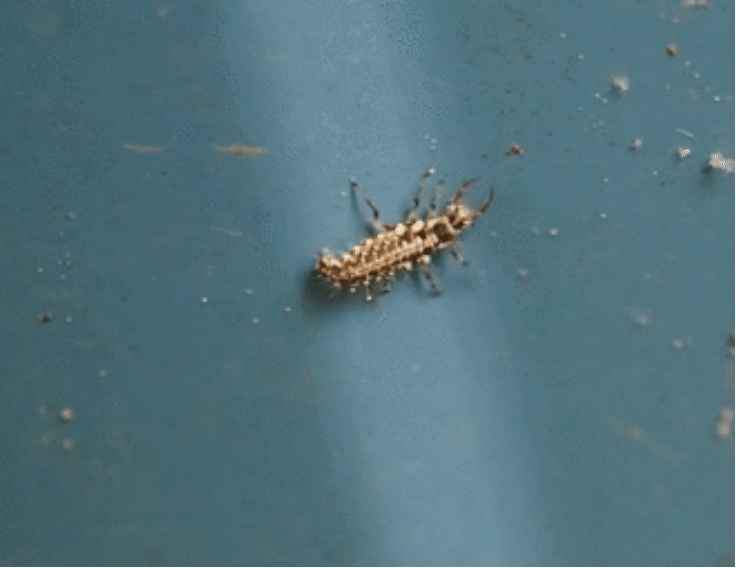
Lucky me. I got another chance to see the male Ebony Jewelwing Damselfly. Haven't seen a female yet this season...

On to the Flies. Let's start out with something very interesting about Flies. Look at this first picture. It looks like a Wasp, doesn't it? But it isn't. It's a Fly! Number 2 is a Leafwalker, but did you notice it looks like a Hover Fly? It turns out that Leafwalkers are Hover Flies. But now look at number 3. For years I've worked around this huge Wasp or Yellow Jacket. It flies around the foundation of the Shop and buzzes loudly and threateningly. But yesterday it sat down in front of me and let me take its picture. With that picture, I was able to see its eyes. Those are Fly Eyes! It is actually a kind of Hover Fly too. It's one of the Wasp Mimicking Flies. It has fooled me for many years! After a little looking around in the Hover Flies, I found its name: the Spotted Wood Fly! This Fly also mimics a Wasp! Wait. After identifying this fly, I got the nerve to shoot and shoot until I got another one. It turns out the new one is a Queen Vespula flavopilosa, the Downy Yellowjacket, and it's just about the size of this Fly, and buzzes just as loudly. Maybe it mimics the fly.. Anyway, I'm posting it here next to Spotty.
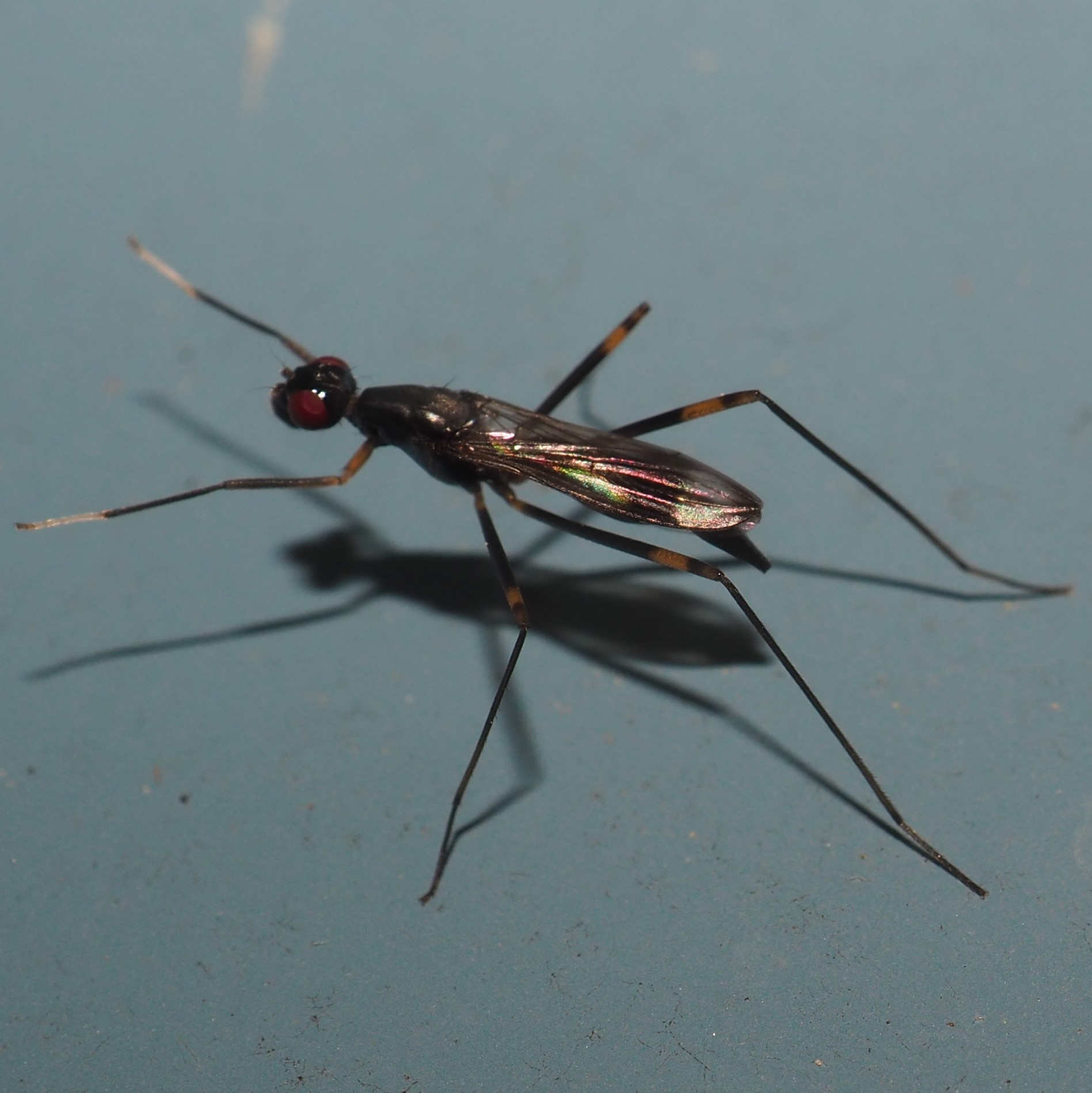
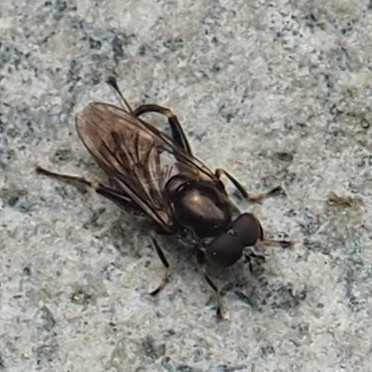
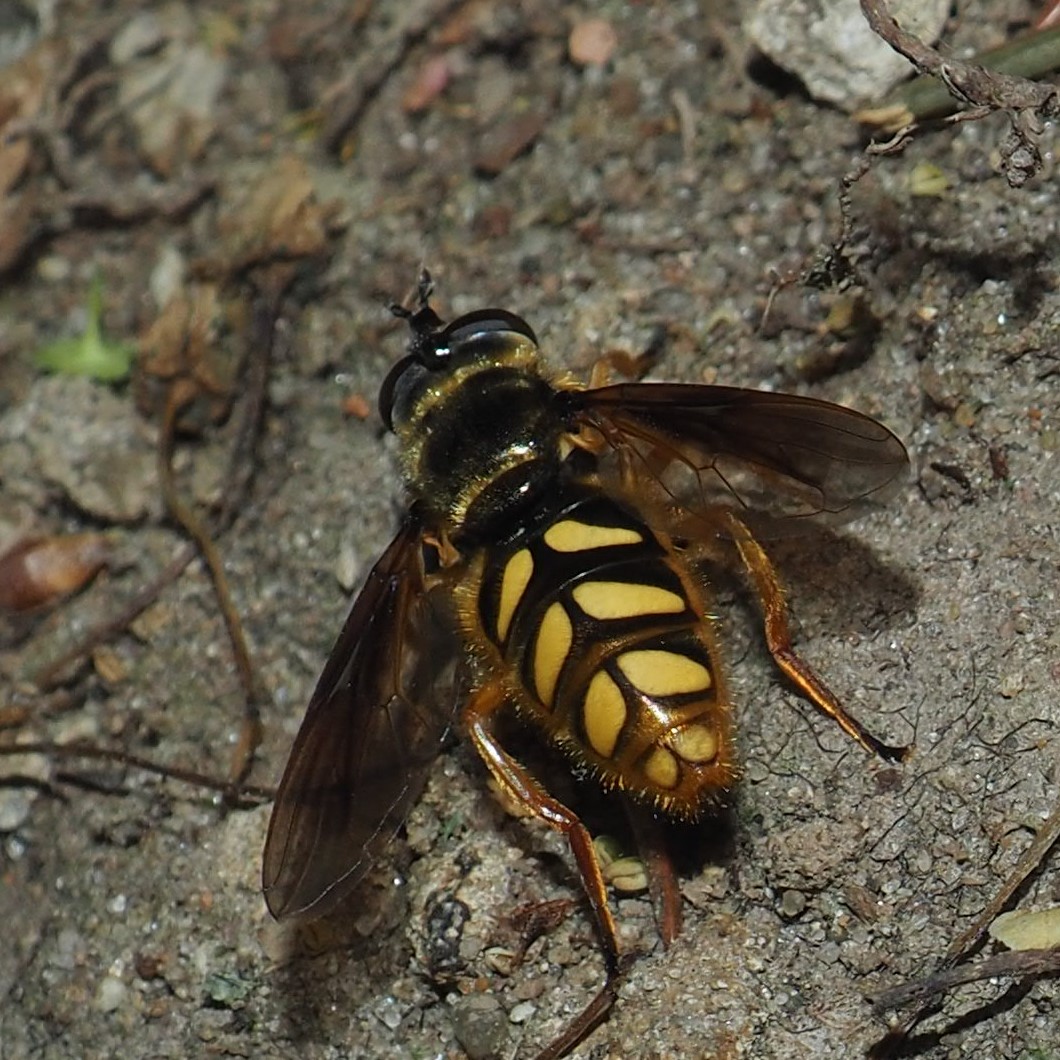

Here is a pair of Hump-backed Flies, mating on the wall. What little acrobats!
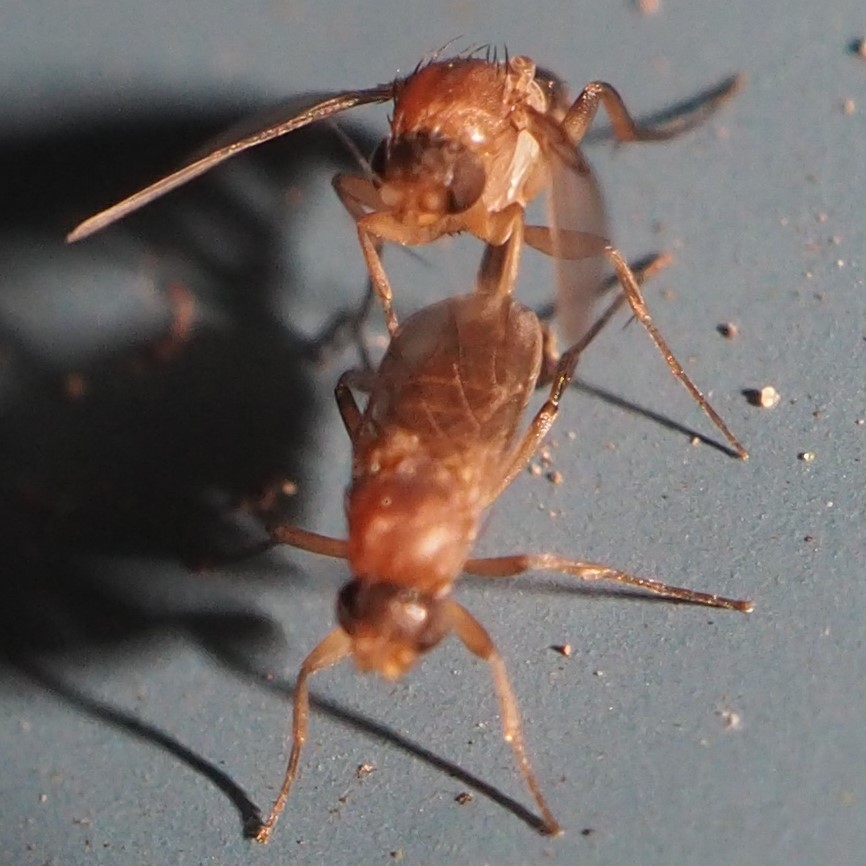
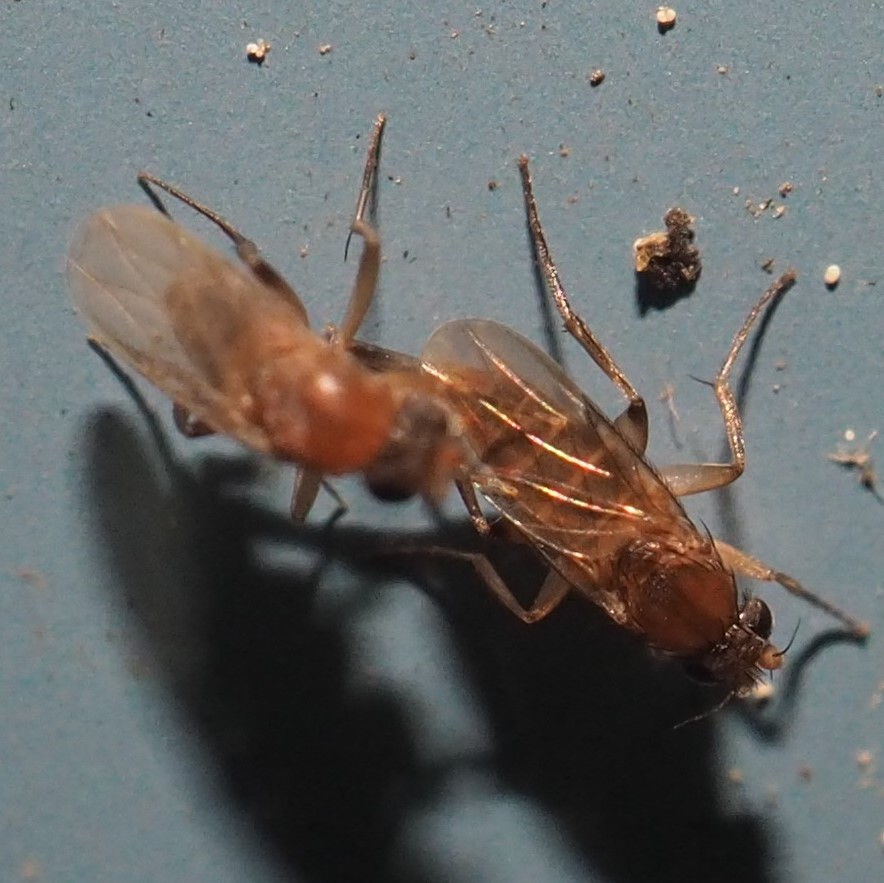
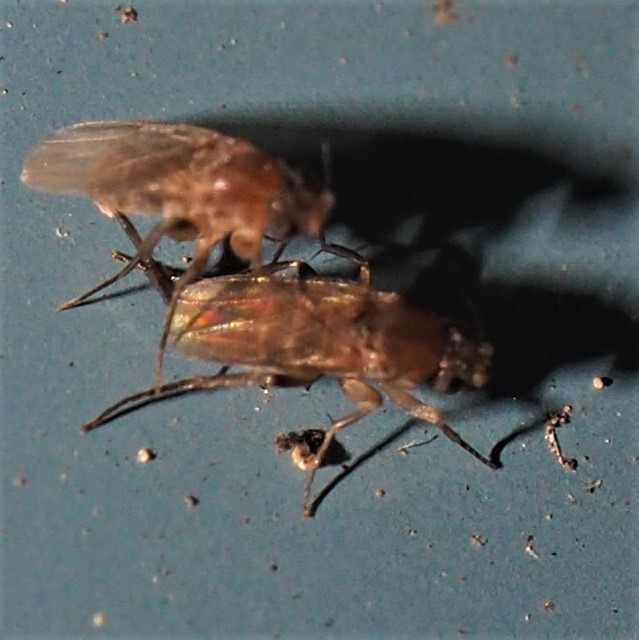
Here are THREE new Flies to me. Third is a Mosquito, but which? I guessed Culicine Mosquito when I submitted it to iNat.
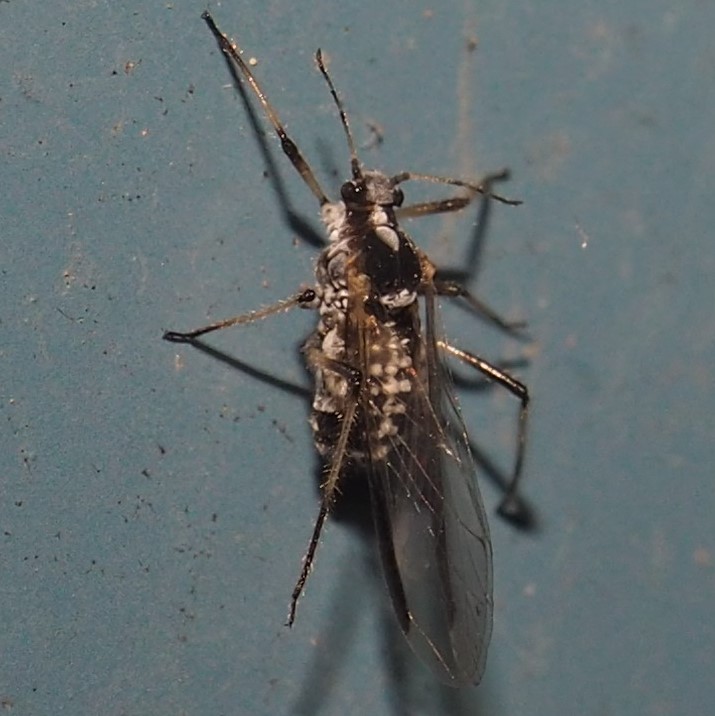


This first one I could not guess - but the reader on iNat suggested Nematoceran Flies. It does seem to be being eaten by a tiny Spider. The Second is a Rust Fly, in genus Loxocera. Third is a Snipe Fly. They seem to be thinning out - remember when every other Fly was a Snipe Fly? Number 4 is one of those really tiny Flies with the big eyes - but there are so many of them it is hard to get an ID...

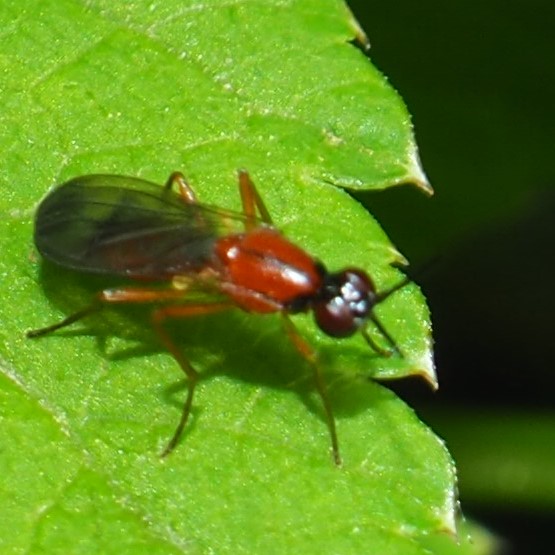
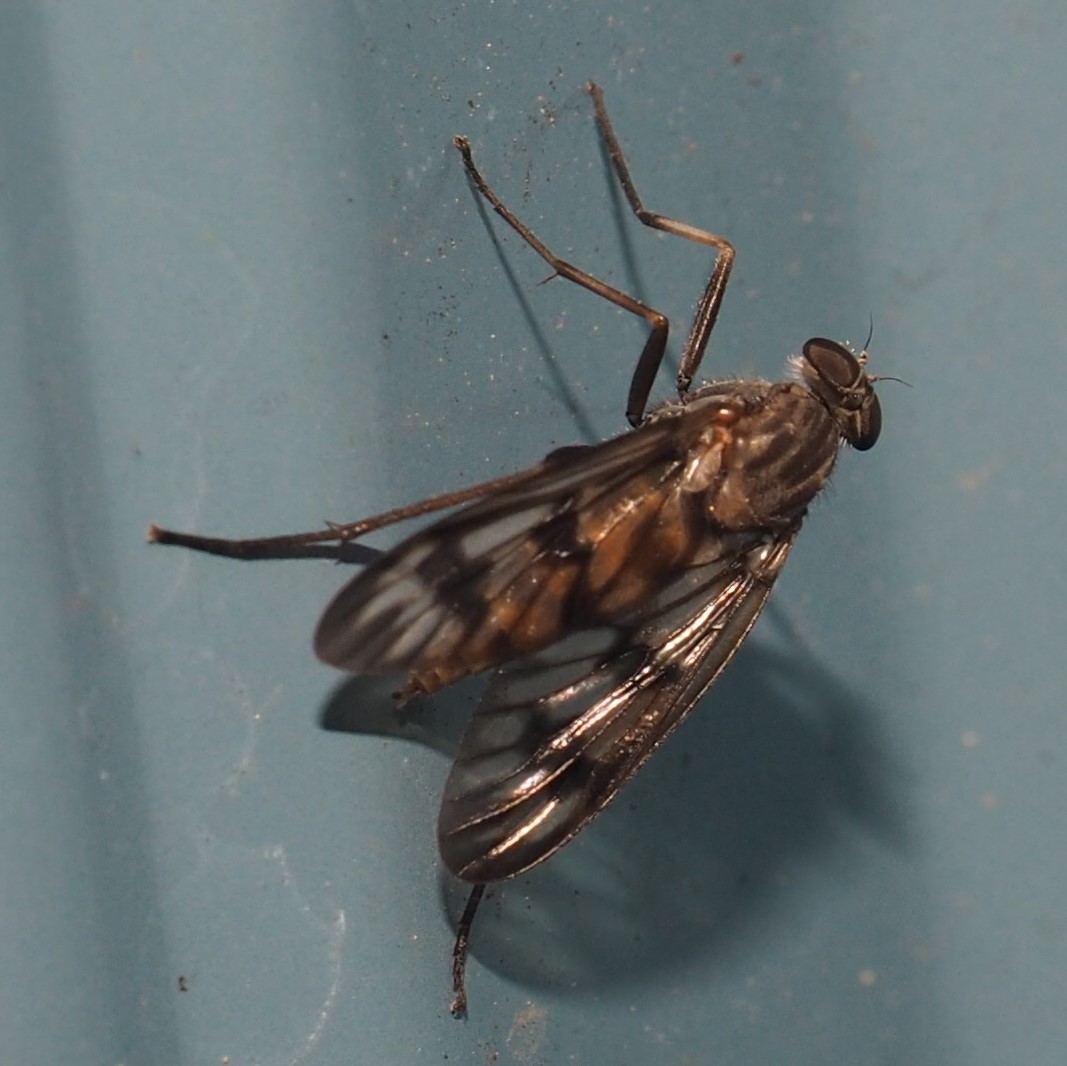
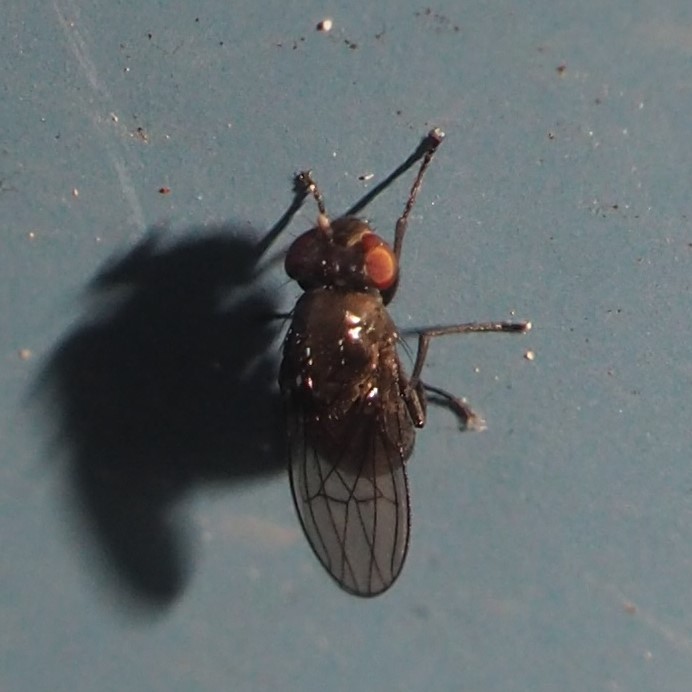
I THINK those were about all the Flies we saw this week. Let's go on to the Moths and Butterflies. For some reason Moths seem to be more prevalent around here. Maybe it's because they tend more than Butterflies to sleep on the bare blue steel of the shop siding, or they nibble on the lichens that coat it in many places. I don't know. Many of them are so very tiny and yet their detail is fascinating. You've probably discovered by now that Moths that are Leaf Miners lay their eggs in a leaf, their babies climb around inside the leaf, eating a decoration that shows from the outside. Many of them also rest with their heads down, like this first really tiny one. The next two don't seem to, but I still think they're all related.
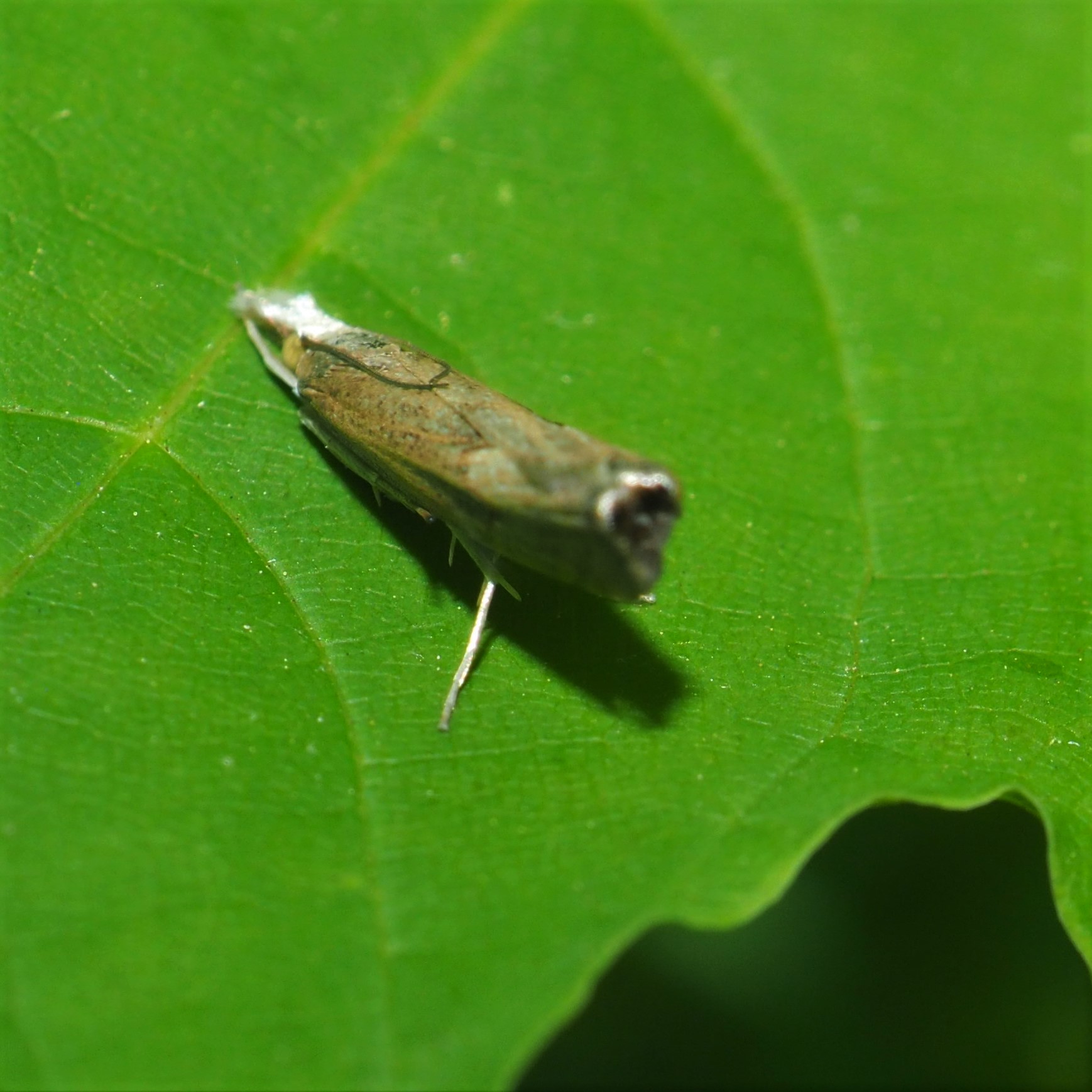
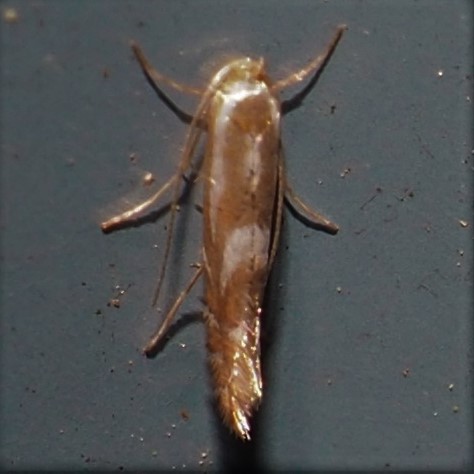
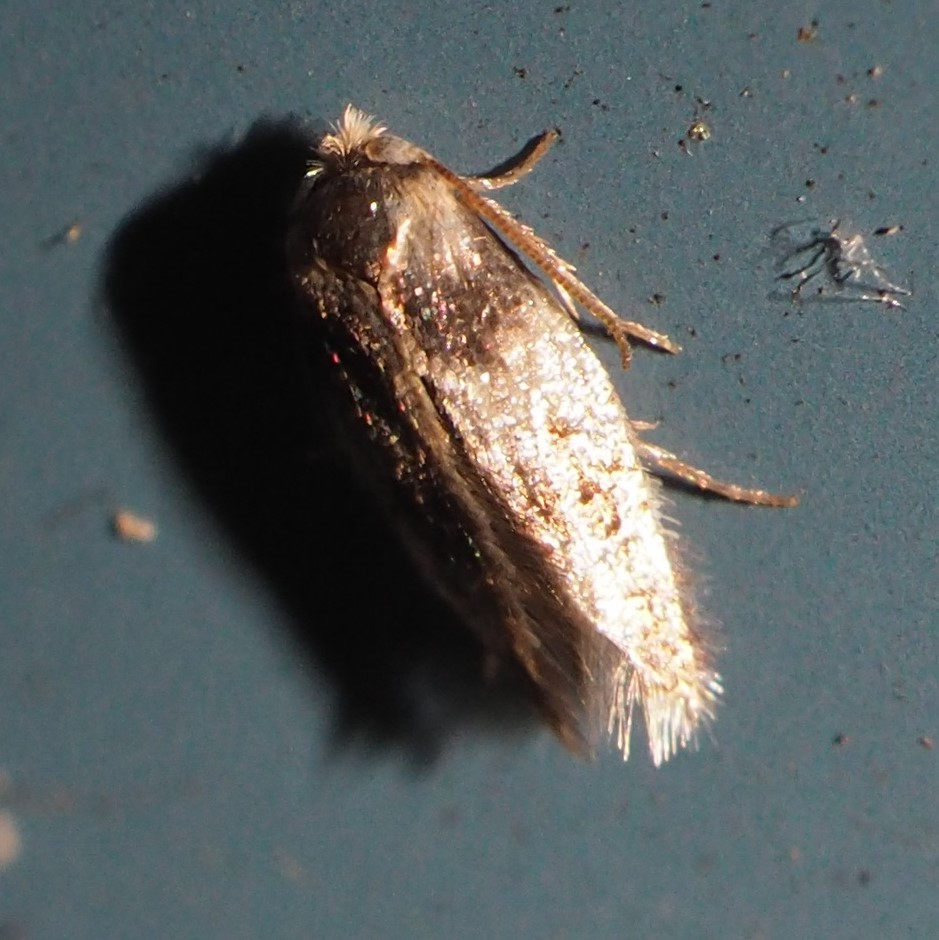
A few little Moths. The first one has barely more than an inch wingspan.
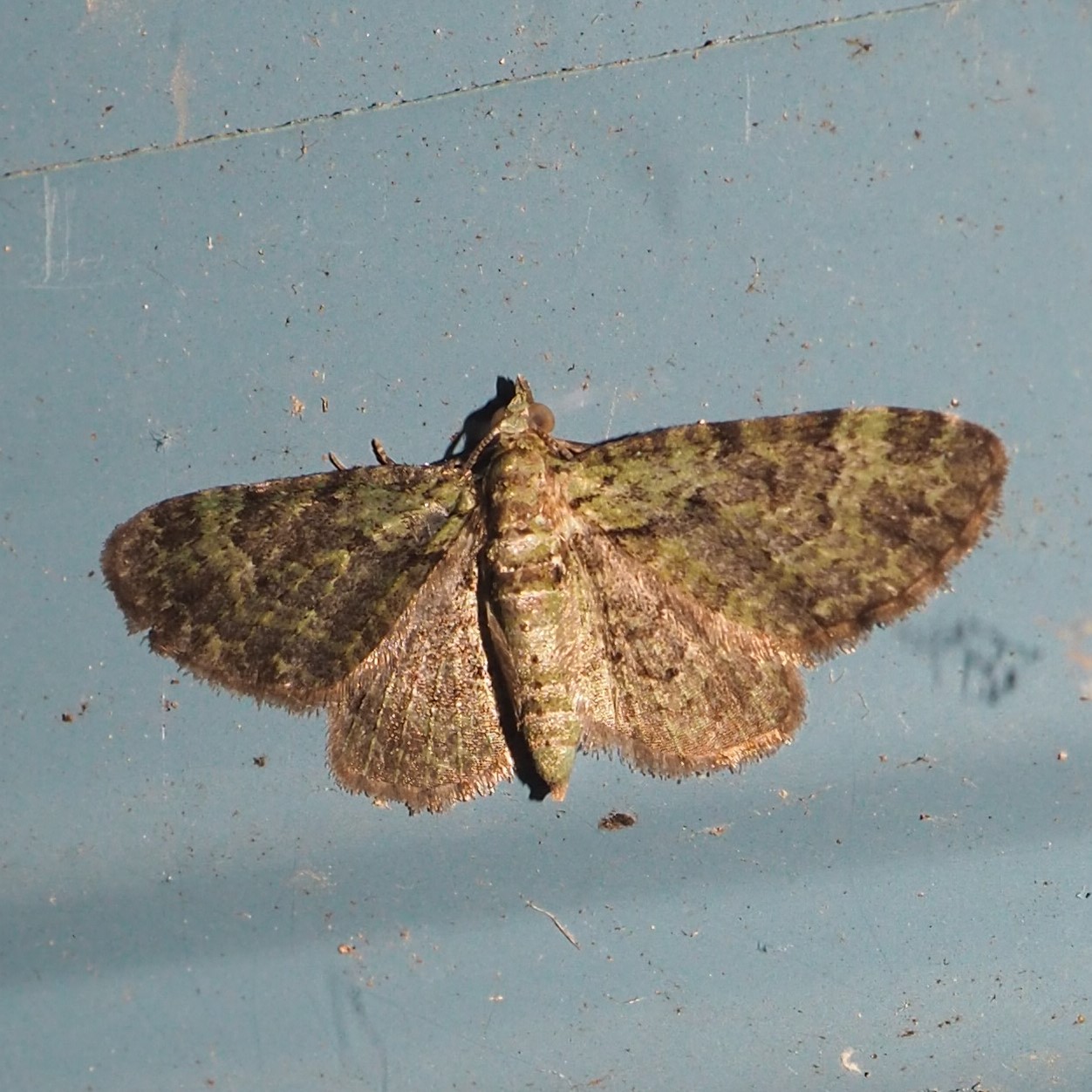
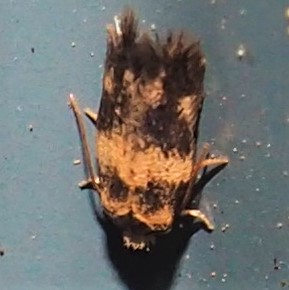

Here is the caterpillar of a common Butterfly, the Mourning Cloak. Next is a comical view of that caterpillar. Would you have thought even its feet would be red? Here is a picture I took of an adult in March 2015. You may wonder, a Butterfly in Michigan in March? Well, it turns out that this is a special Butterfly in that it can hibernate when the weather is cold. It may actually roll over in bed in March and say, it's so warm I should be up and doing. So it flies around for a while and then may go back to sleep till Spring is really here.

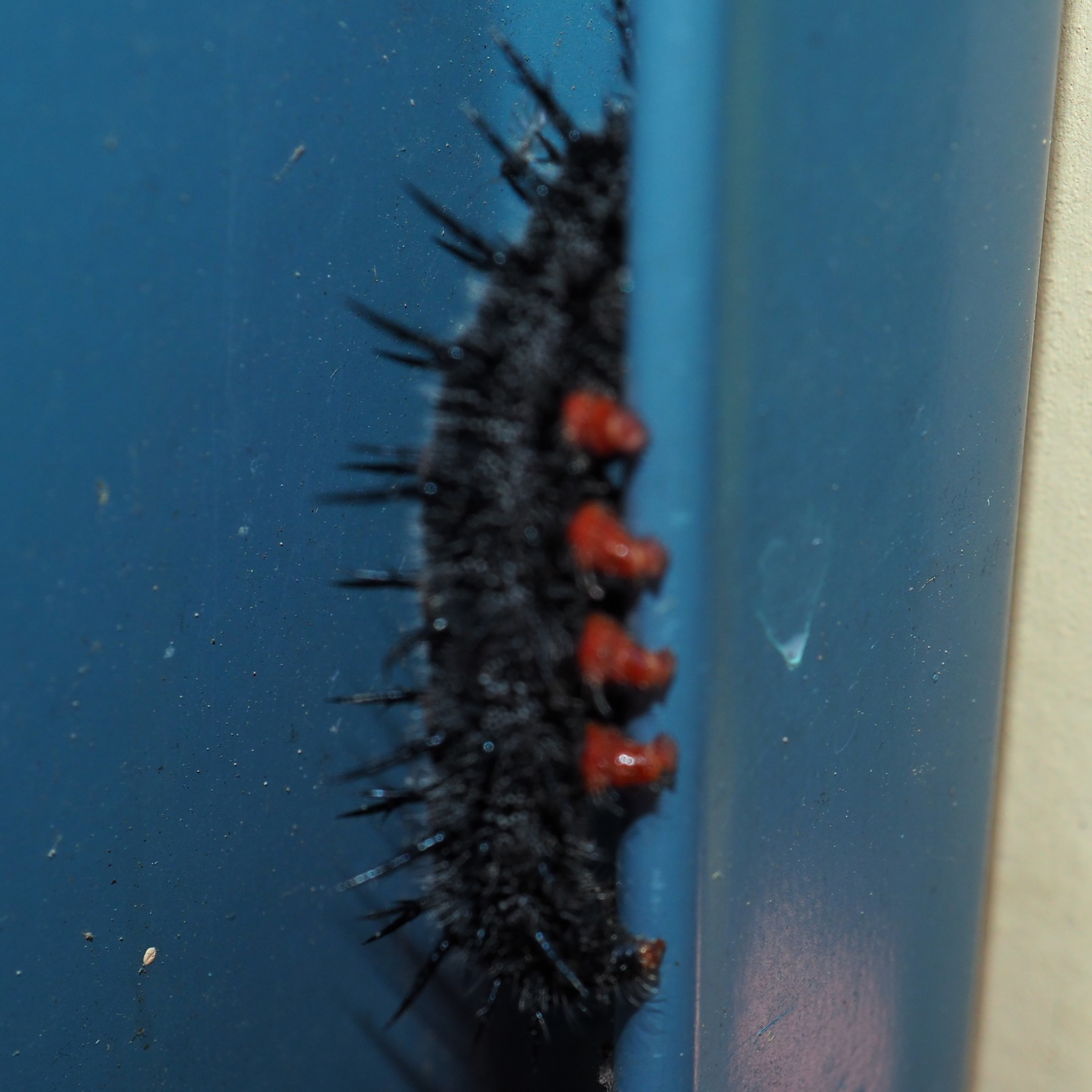

Well, this is where we begin to stretch a bit and say, I'd really like to go for a stroll through the Flowers. The truth is that the Early Spring Flowers are pretty much done with, but there are still some mid-Spring ones. The Dame's Rocket is almost totally done, but there are still some patches we can stroll through. Here's a sprig I shot mainly to see the little Weevil. Then comes a white version of the flower, and finally the Dame's Rocket mixed with Goutweed.
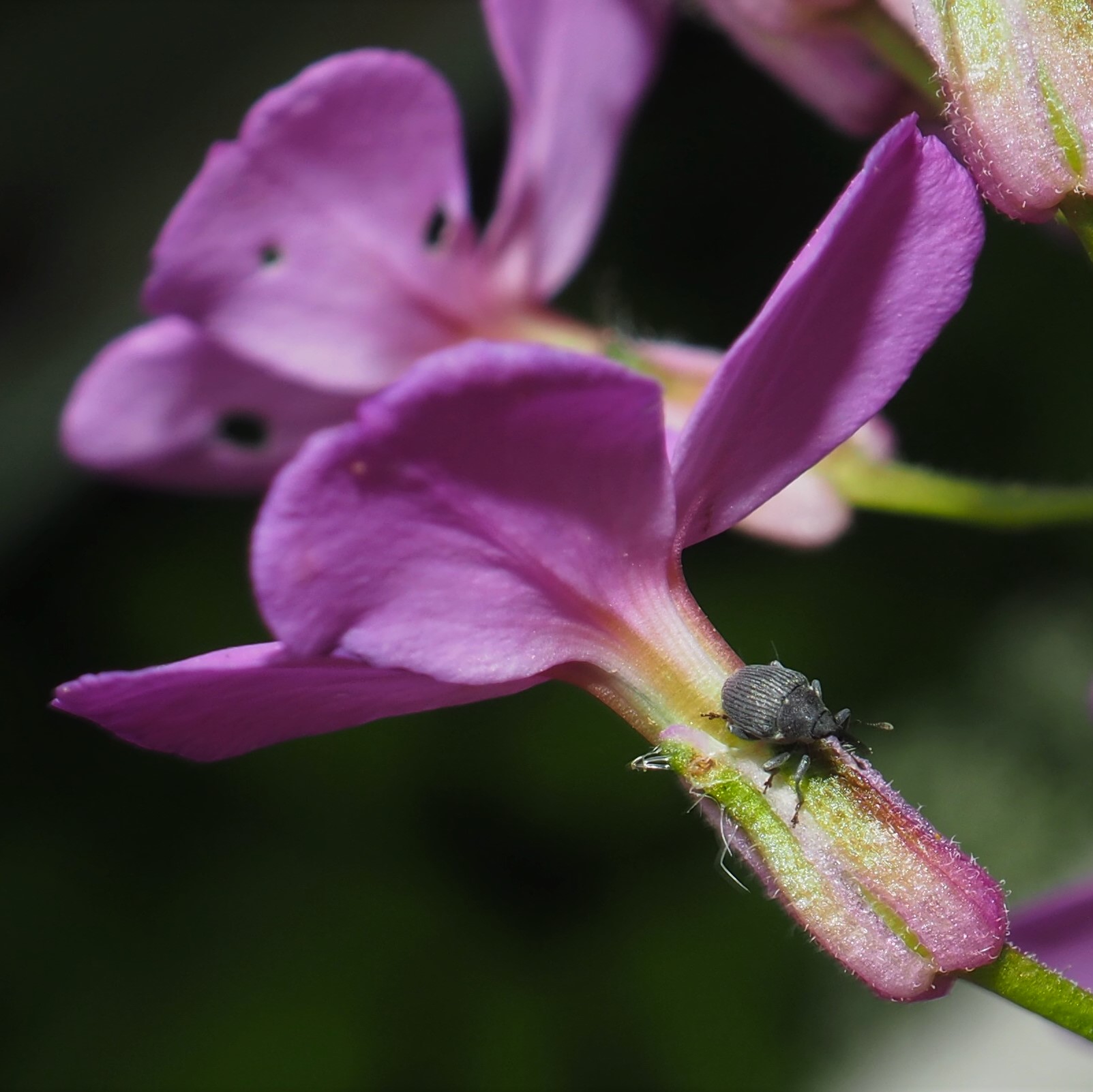


The question of WHAT is that weird Rose-like thing that planted itself in the Surprise Region next to my driveway is still alive. I went to see Kathleen Seidl's Wild Roses, and took along a flower from my patch (picture 1) to compare and saw immediately that mine were much larger and that hers (picture 2) didn't seem to be forming a berry-like thing (picture 3) in their center. I think my friend Mary-Ann Cateforis in Potsdam is right - the Blackberries have stormed the Surprise Region.
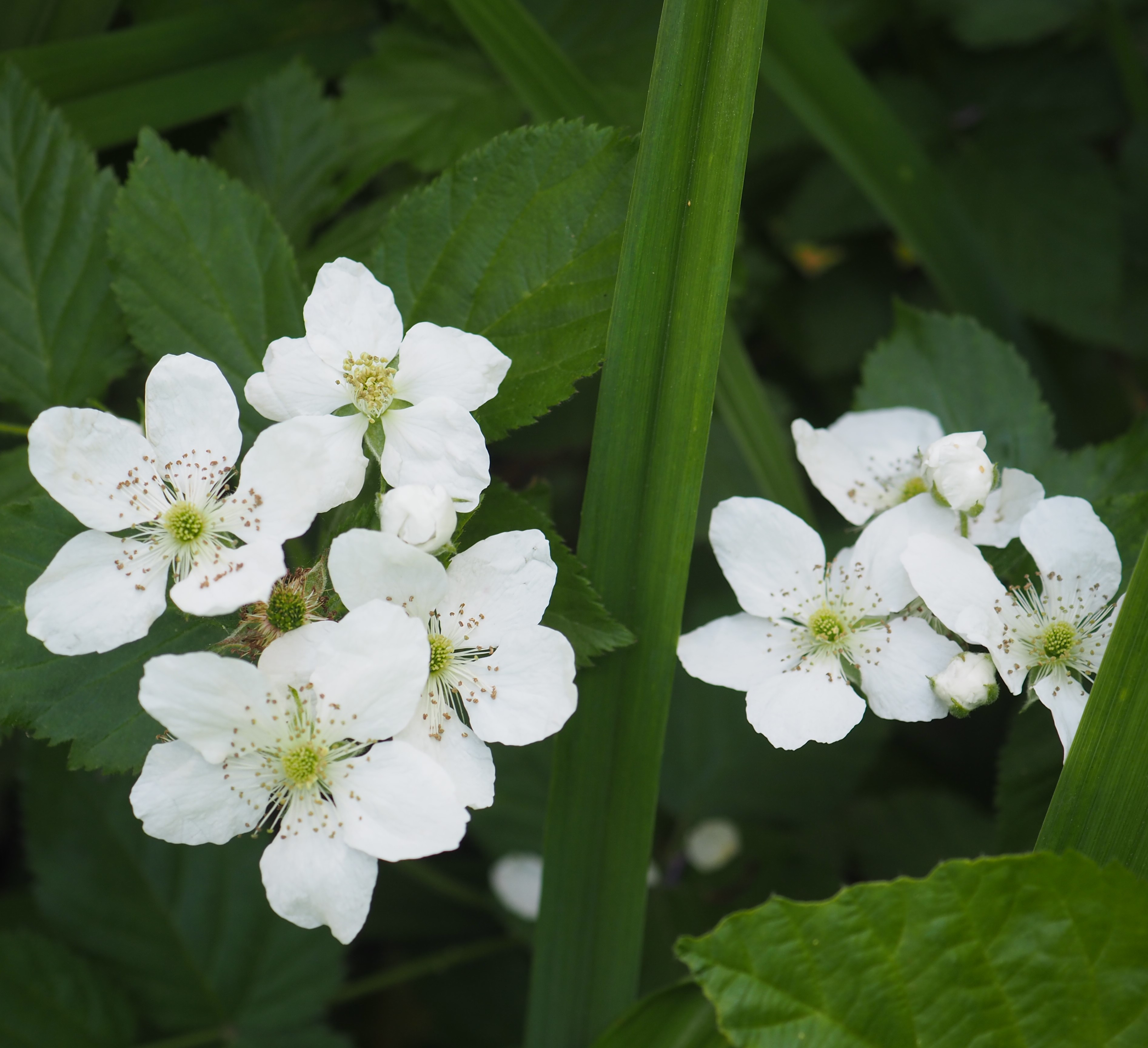


But there are smatterings of other things that are just tough enough not to let us roll over them - two Irises opened up at almost the same time. One I think is a Siberian type, maybe a hybrid of the big German Iris and a true Siberian (picture 1). Pictures 2 and 3 are of an Iris that I haven't seen bloom for many years.
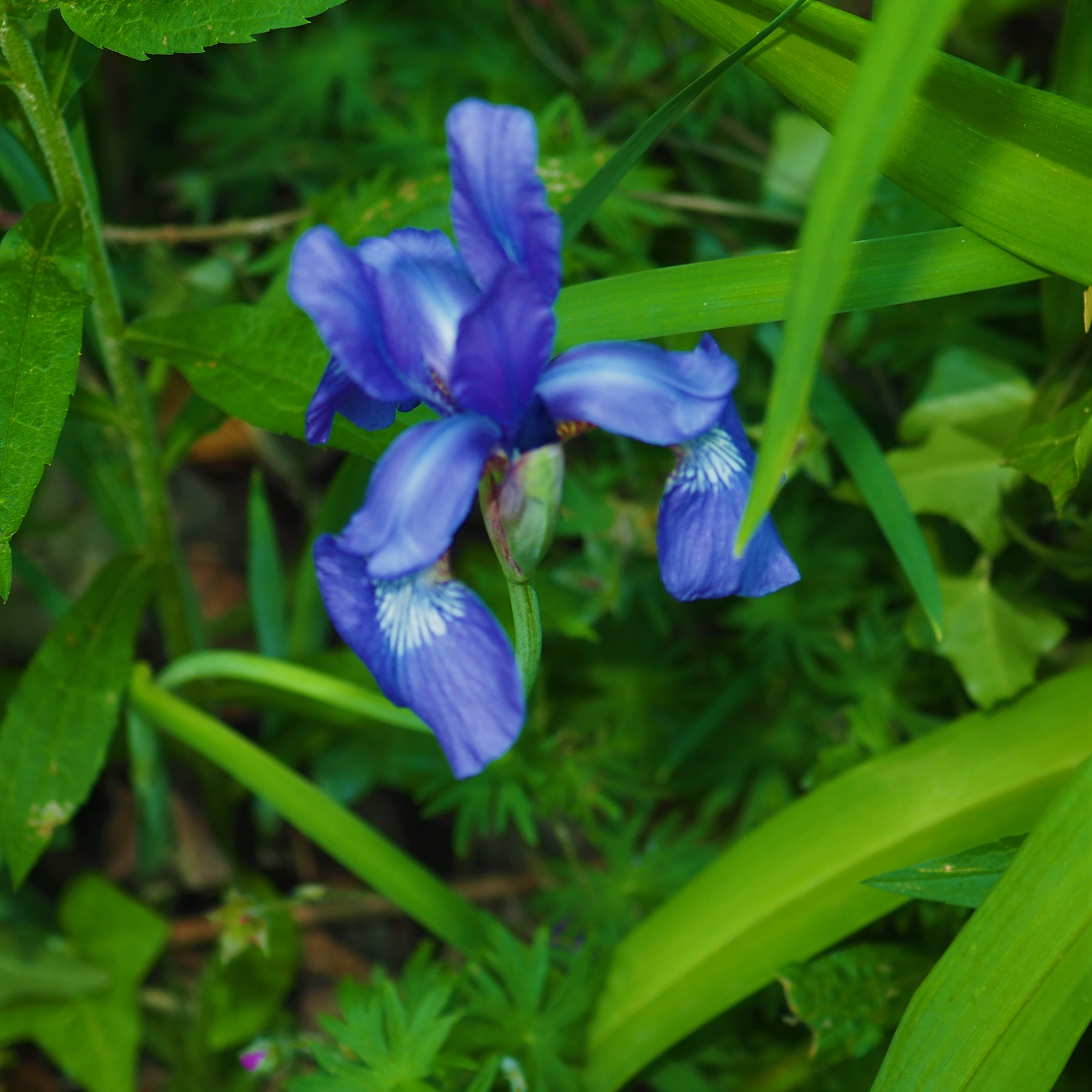
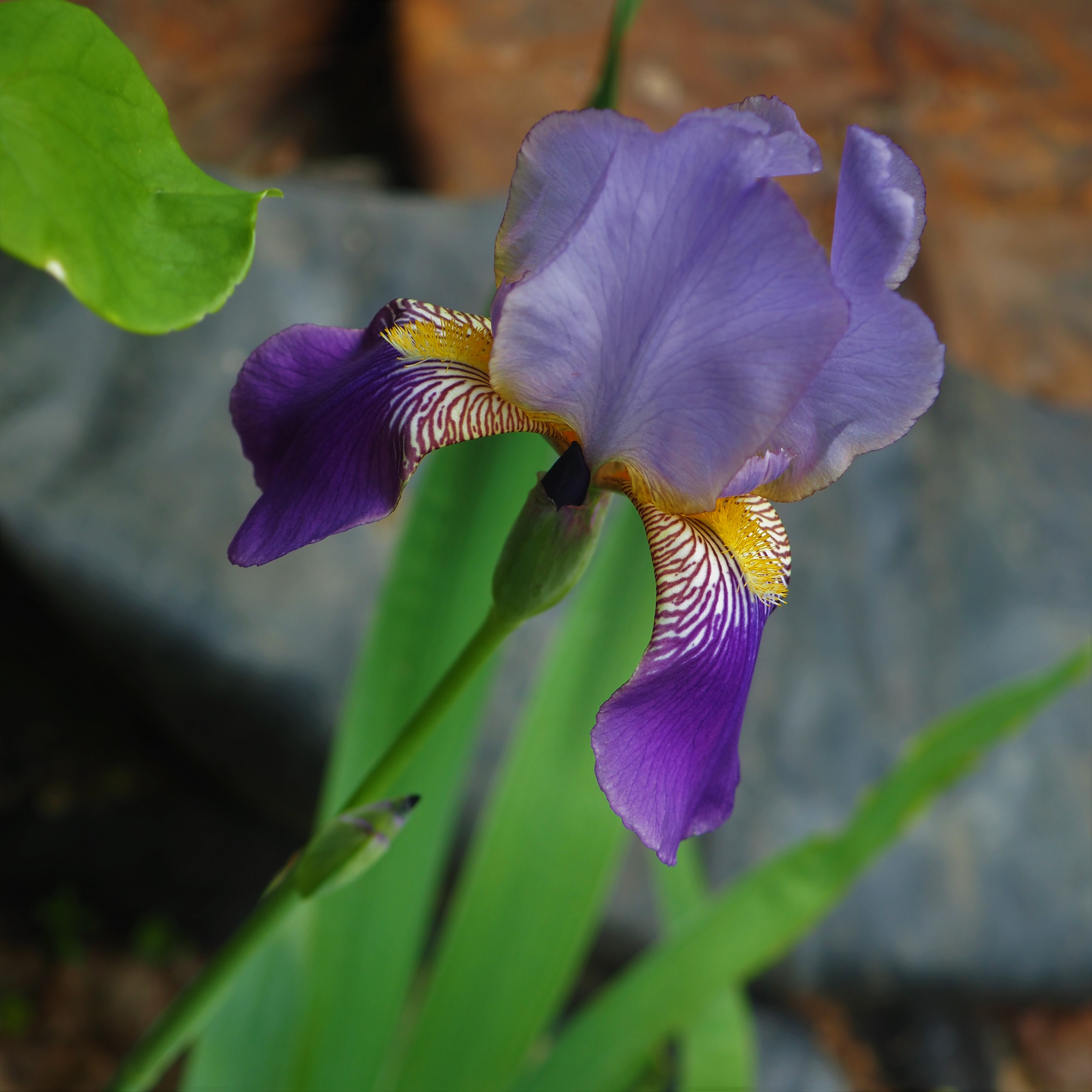
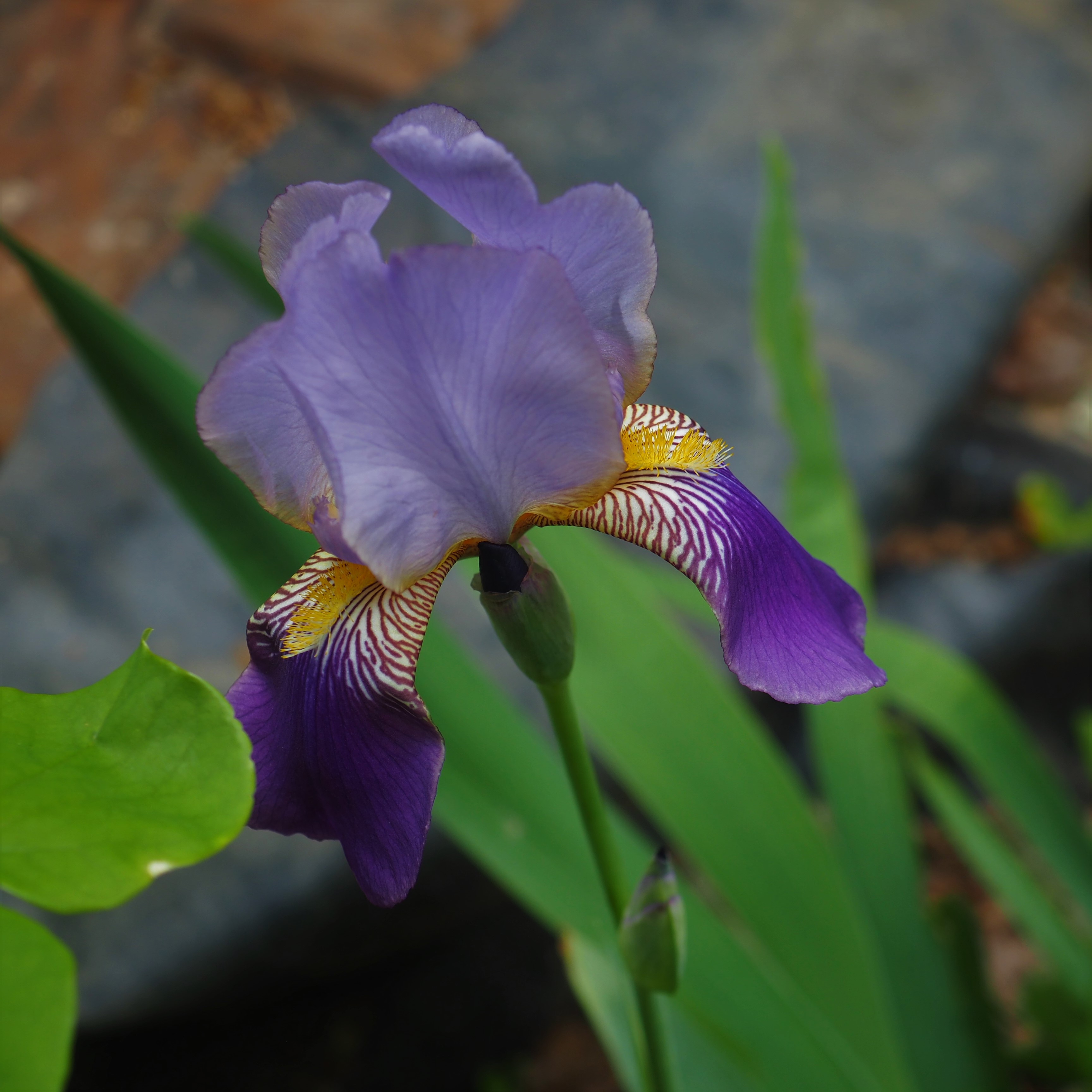
A couple of years ago, I planted some Pinks in my Deck Planter Boxes. As you can see, they are baack.. The Cranesbill Geraniums are doing better and better at producing flowers.


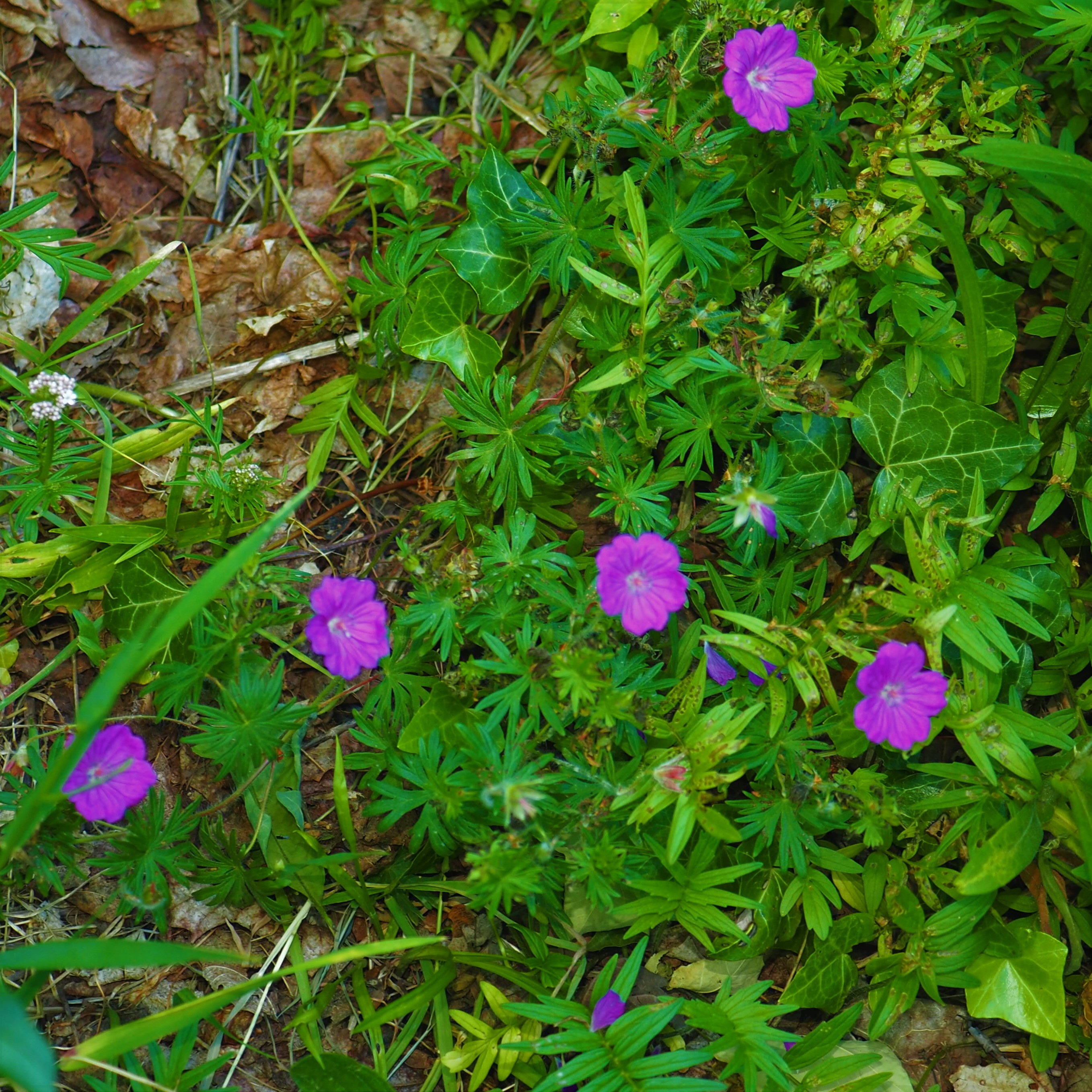
The Baptisia is blooming now. Maybe soon a Bumblebee will let me photograph it there. Near the water outlet, a lot of Purple Foxglove seems to have planted itself. We'll see if it blooms and what real color it is... Oh dear, you know the flowers are disappointing when a Lichen is considered a Flower. When I was in school, they used to tell us a Lichen was a symbiosis of an Alga and a fungus. Now one of those has been replaced by a Bacterium.


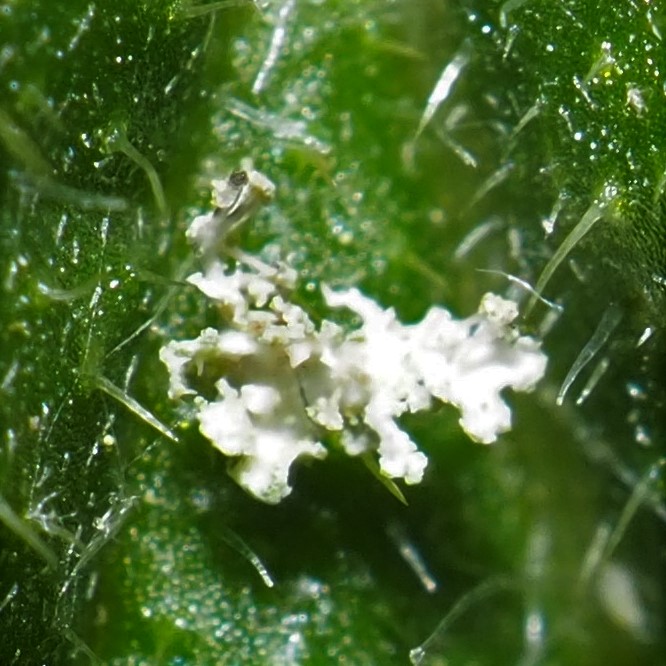
All right, the Spiders are coming. First a couple of their relatives, the Harvestmen or Daddy-long-legs. First is a grayish Harvestman in a Walnut tree, and then a reddish one. I have a feeling that in my yard most of the Harvestmen are one species, and that the age and sex of an individual influences the color.
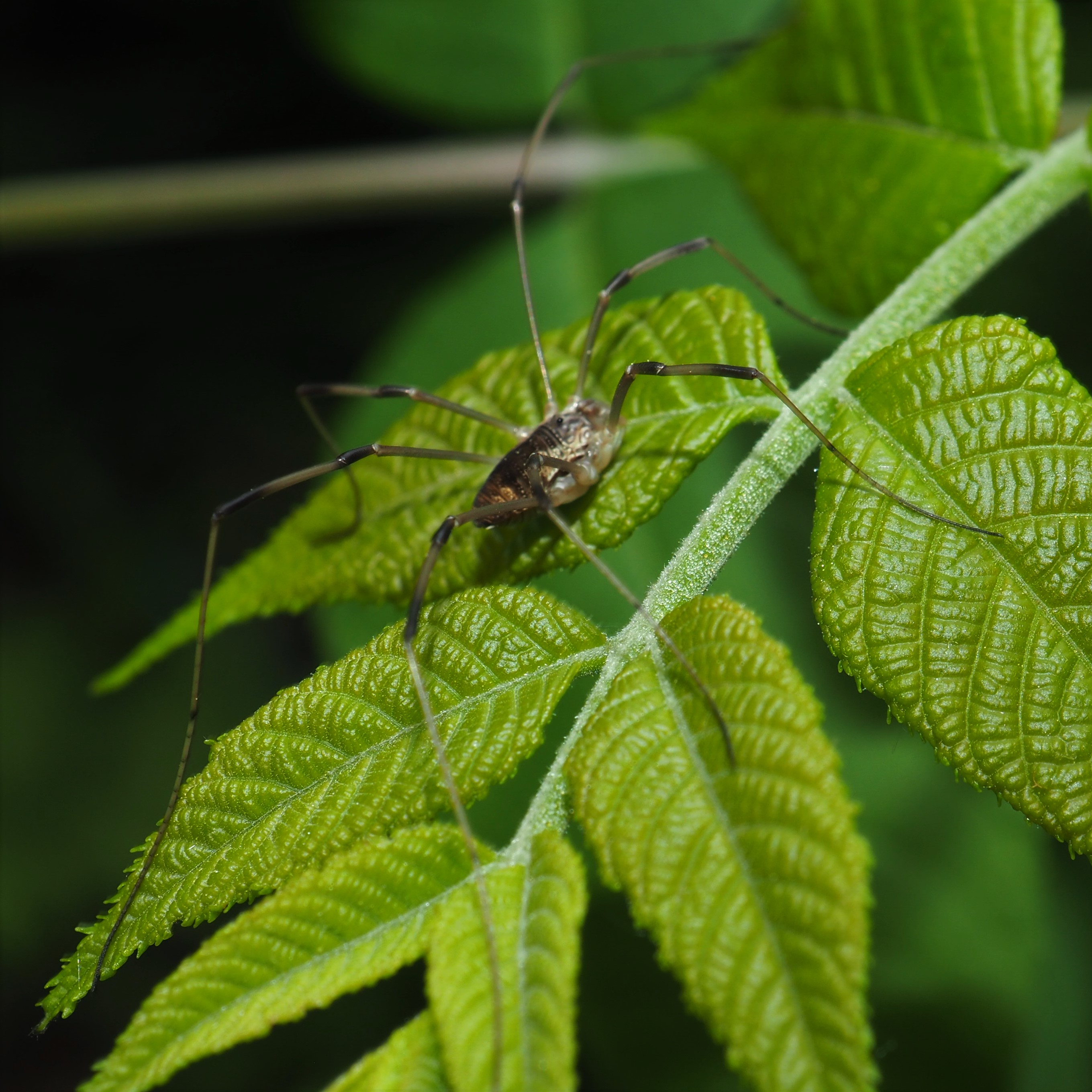
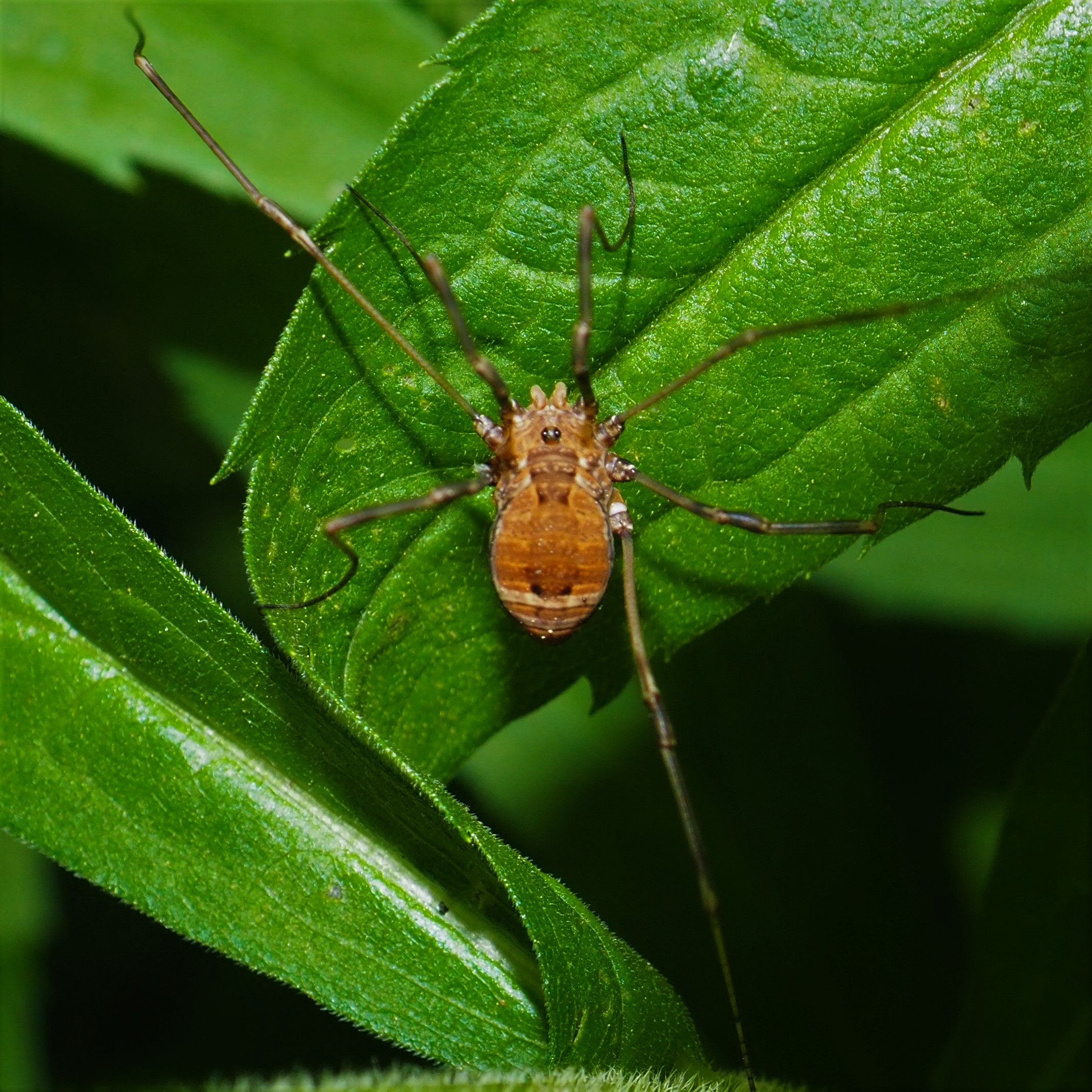
So here come the spiders! Most of them are little (or not-so-little these days) round creatures and most of them in black-and-white. I'll try to show you a short list of these. Number 2 has a large bug as prey. I think number 3 is afraid of you!
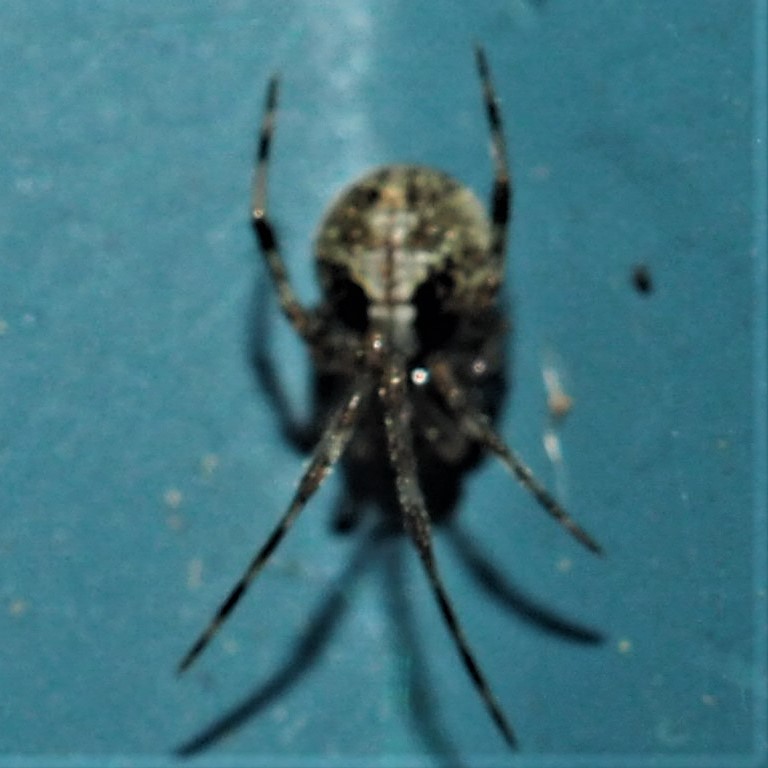
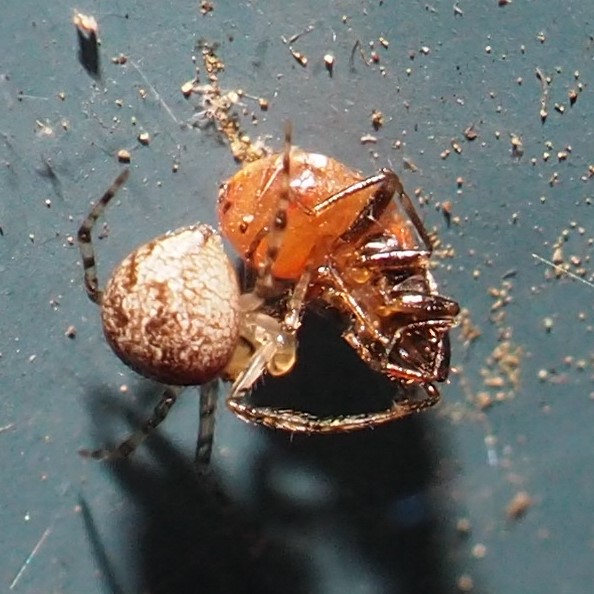
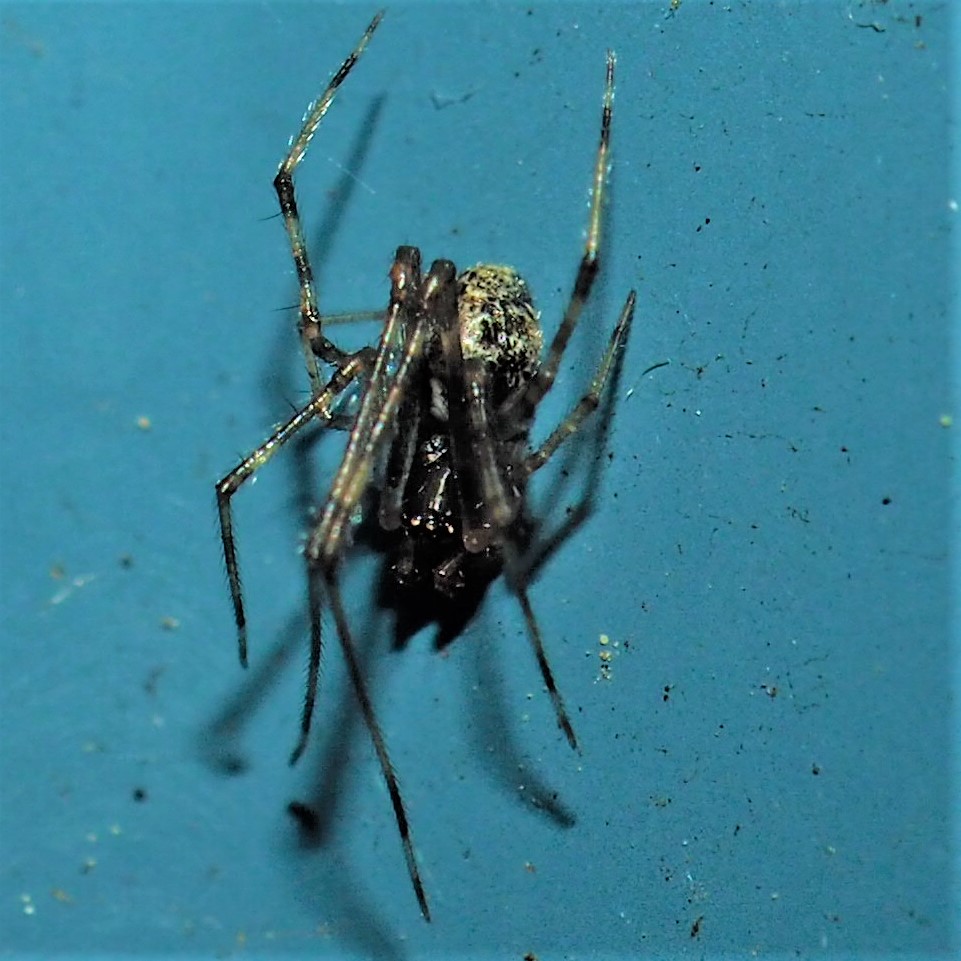
Here is a lovely red Spider but it still looks like a Cobweb Spider. That will make sense since the Common House Spiders are actually Cobweb Spiders, and the males turn red as they mature. I think this is a male Common House Spider. Second is one of those small Grammonota Spiders. And I've no idea what this little black Spider is.
.jpg)
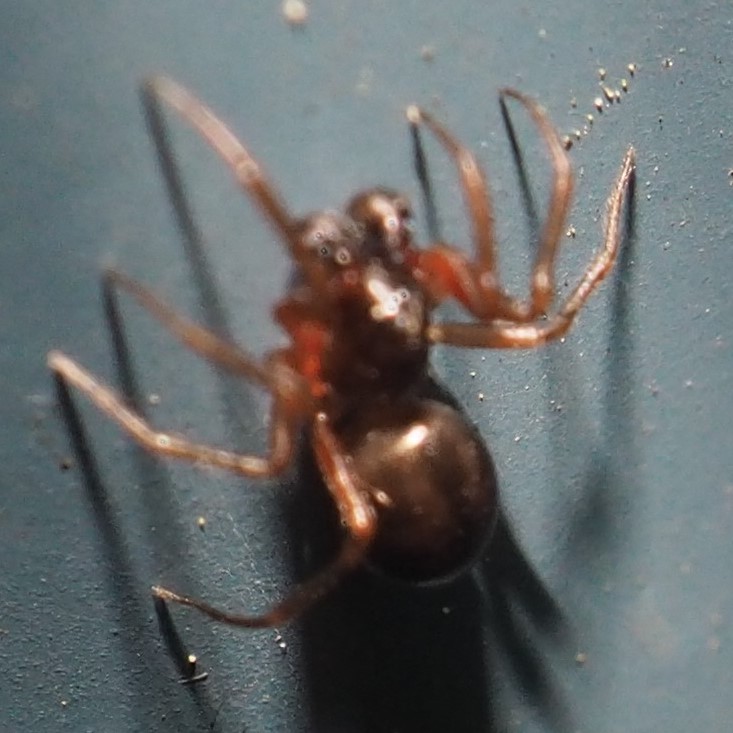
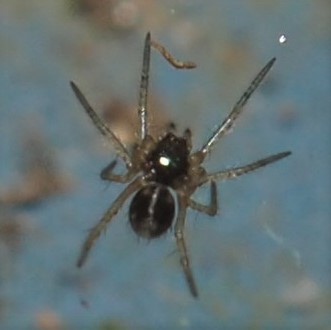
But we do know our Jumping Spiders, especially if you can get one to look you in the eyes. This first one is the Common White-cheeked Jumping Spider. My big fave for the week is the one in pictures 2 and 3.
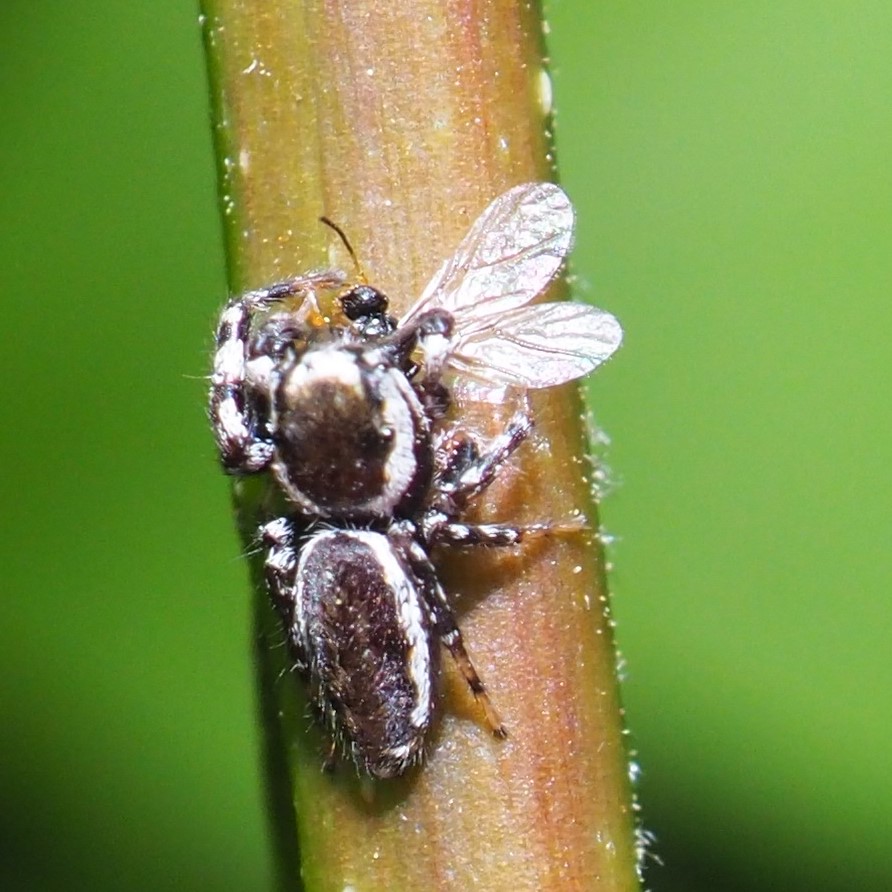
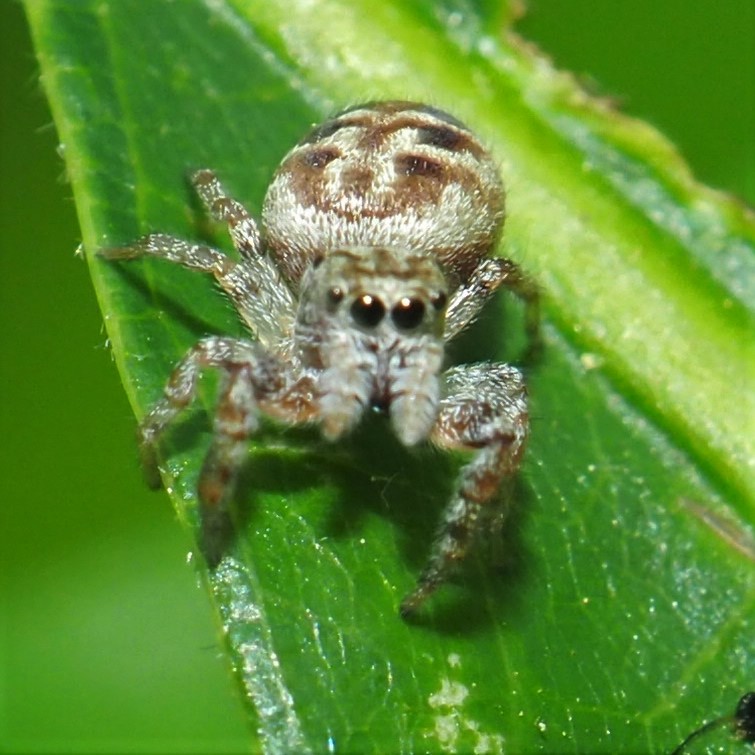
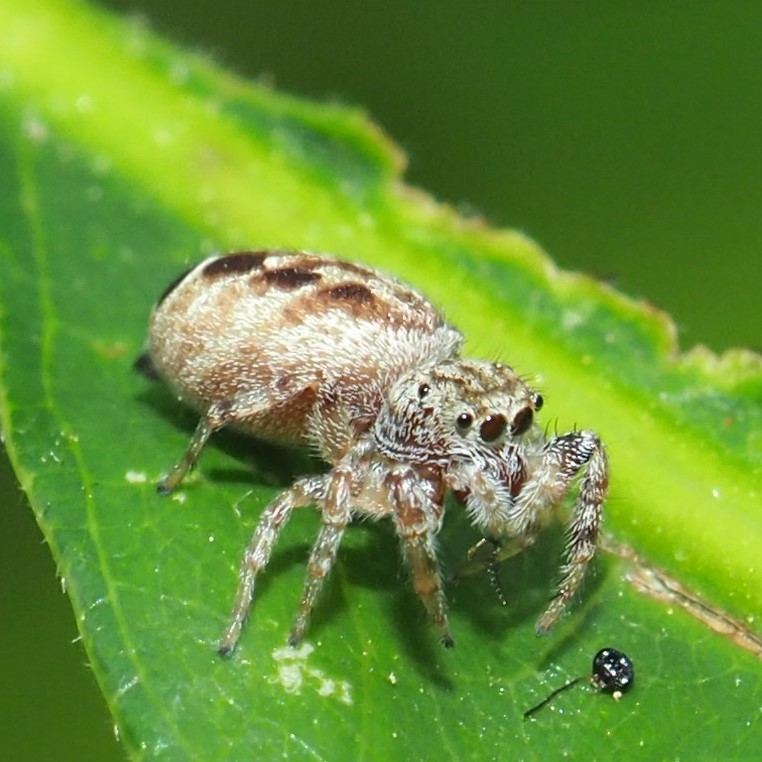
Here is just a short list of certain Spiders. First is a Grass Spider - long and skinny. We can tell number 2 is an Orbweaver because it wove a Web. Third is that Eurytopis funebris again. Fourth is one I can't identify, but it is a beautiful Red Spider!
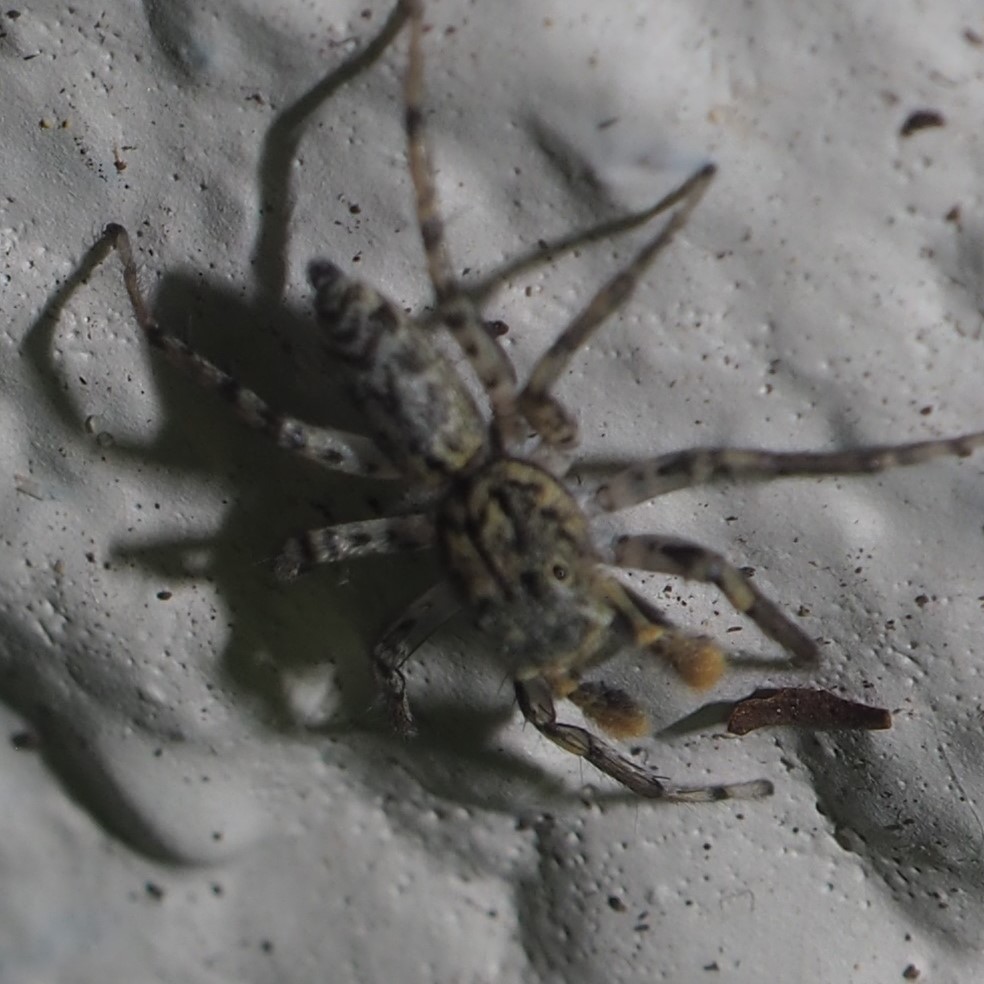
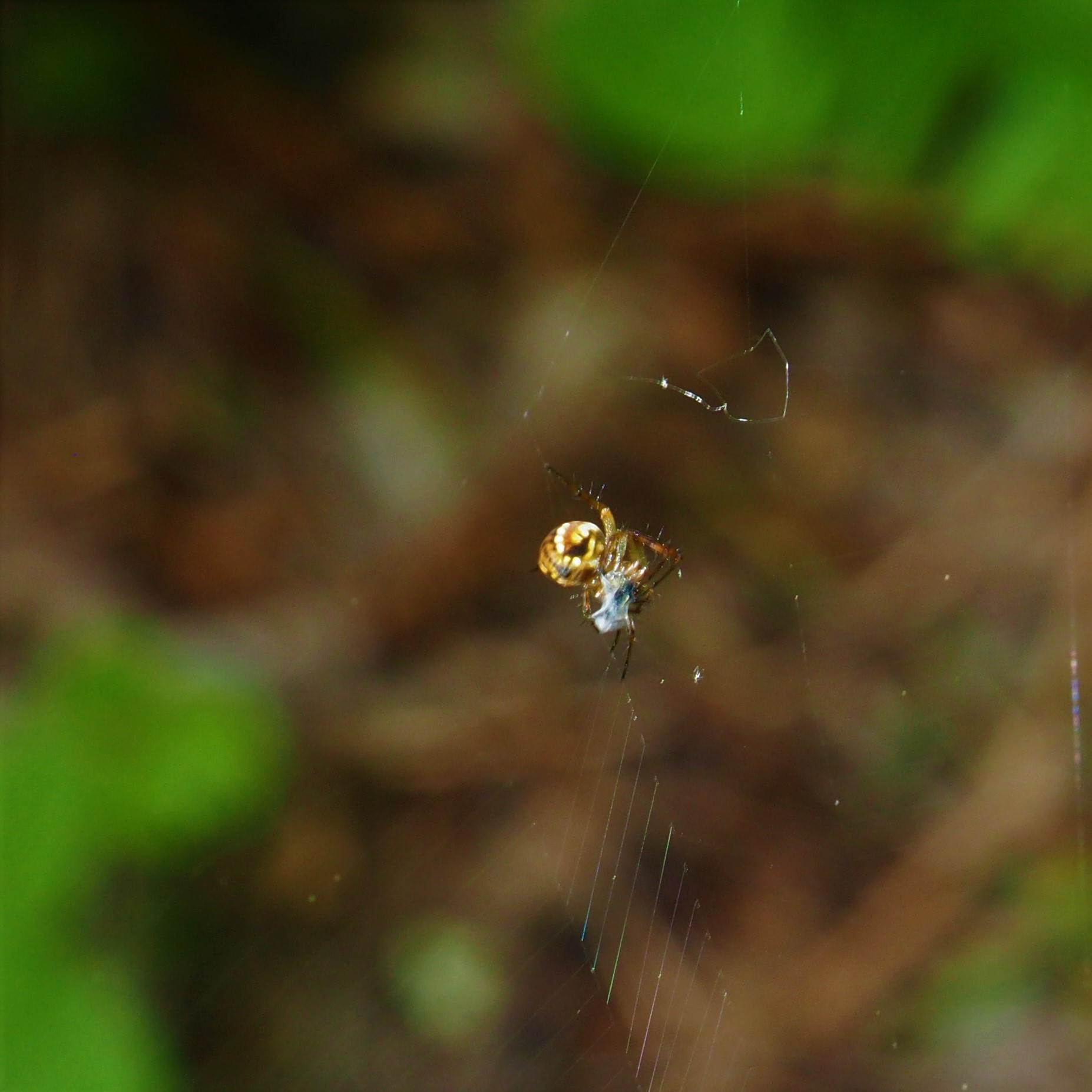


I hope you remember the American Toads that came to lay eggs a few weeks ago. Well, a few days ago, I came down to feed the fishes and found this little female American Toad sitting beside the pond. When I went past her, she jumped into the pond (picture 2). Meanwhile, the tadpoles are getting bigger. Eventually they will have to climb out of the pond. The last picture shows the commercially available inflated ramp covered with mesh that should help give the traction an adult or tiny toad or frog needs to get out of the pond.

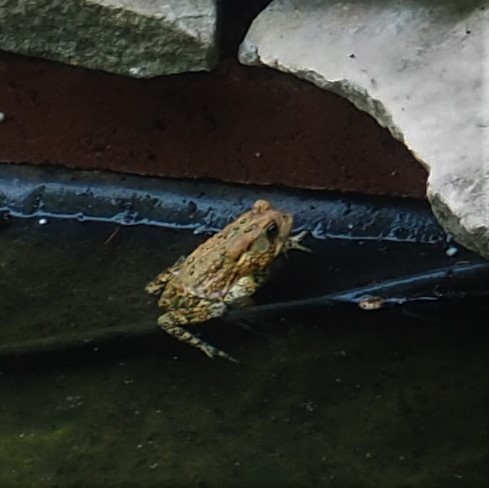

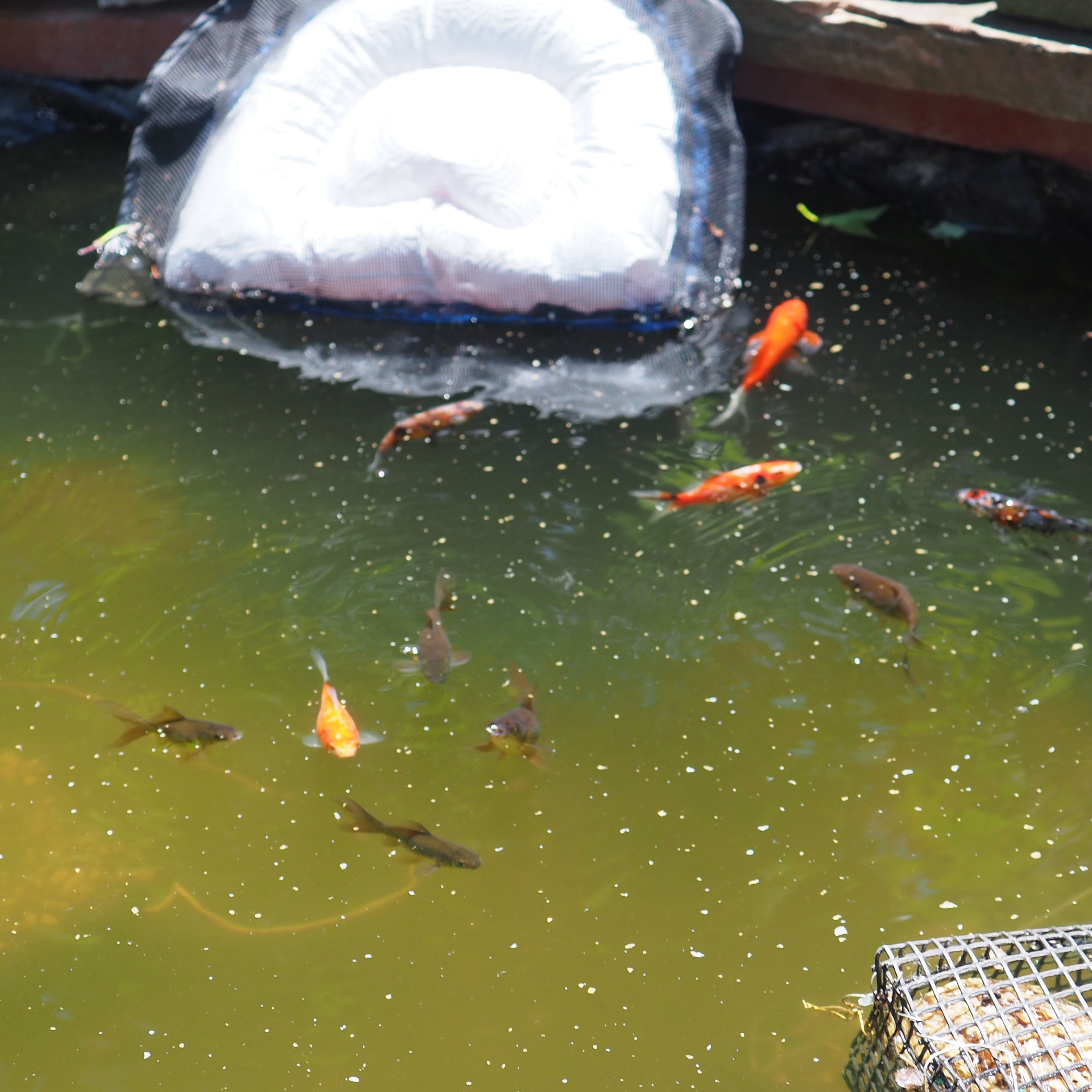
Speaking of the Fishes, they seem to be doing well in the new pond. One of the most interesting things for me is to watch the baby fishes develop their own color patterns. The Fish have been in there long enough to have inbred. But some of the color combinations the newest baby fishes have developed are really beautiful. Here are a couple. Here are some examples. In picture 1, you see Chica, the mother fish, and one of the brown basic colored fishes. The reddish tortoiseshell is one of the new color patterns. In picture 2, you see Pebbles, who has a lovely one-of-a-kind pattern. There are a couple of red or red-and-white fishes that add some of their vibrant color. Picture 3 shows one of these and a couple of variations in color in the young fishes.
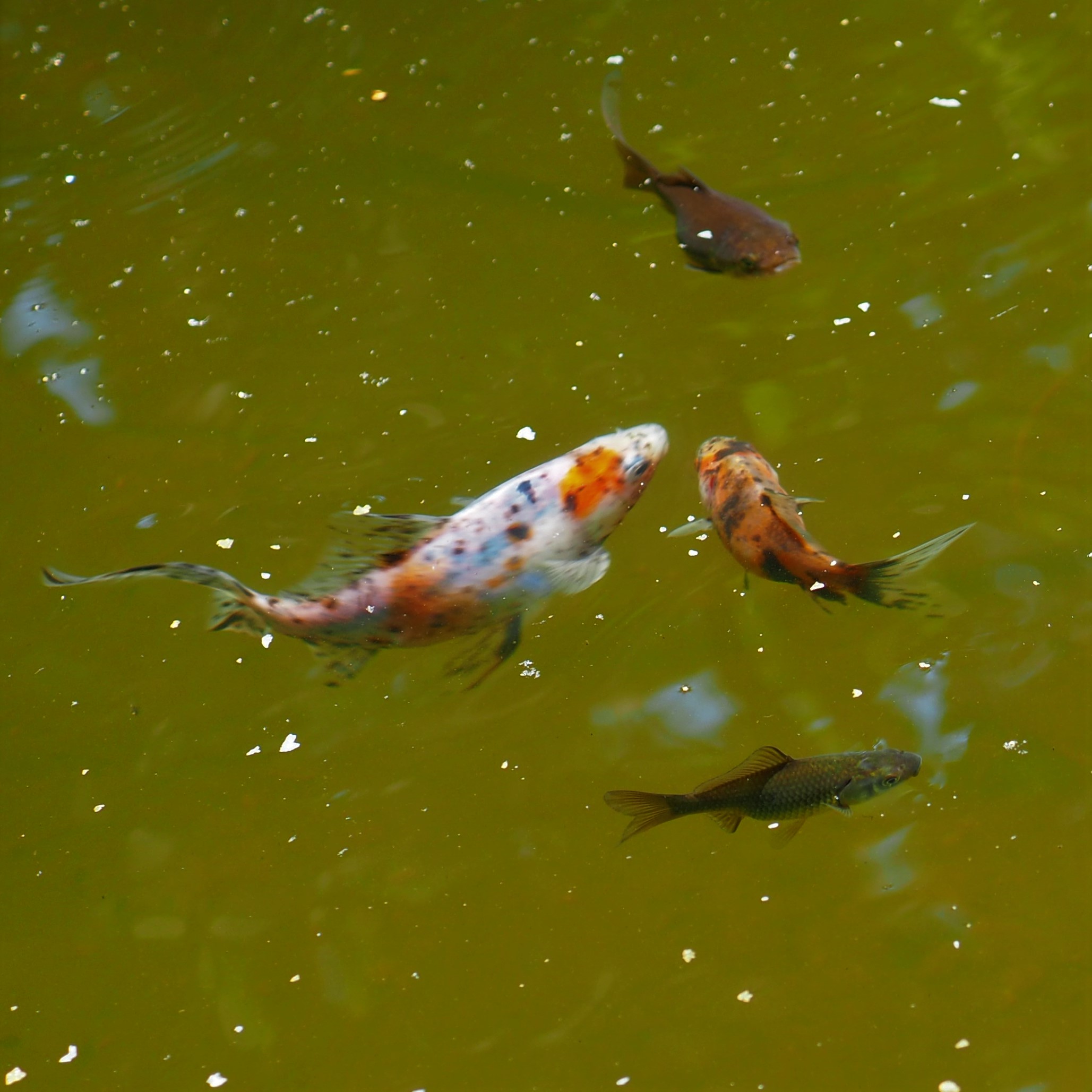
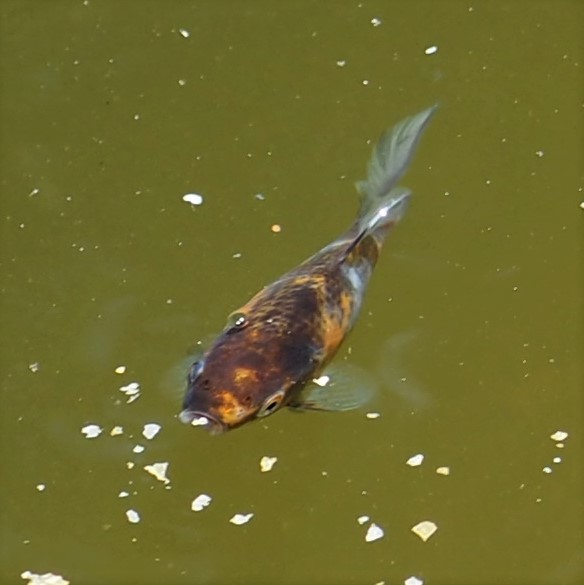
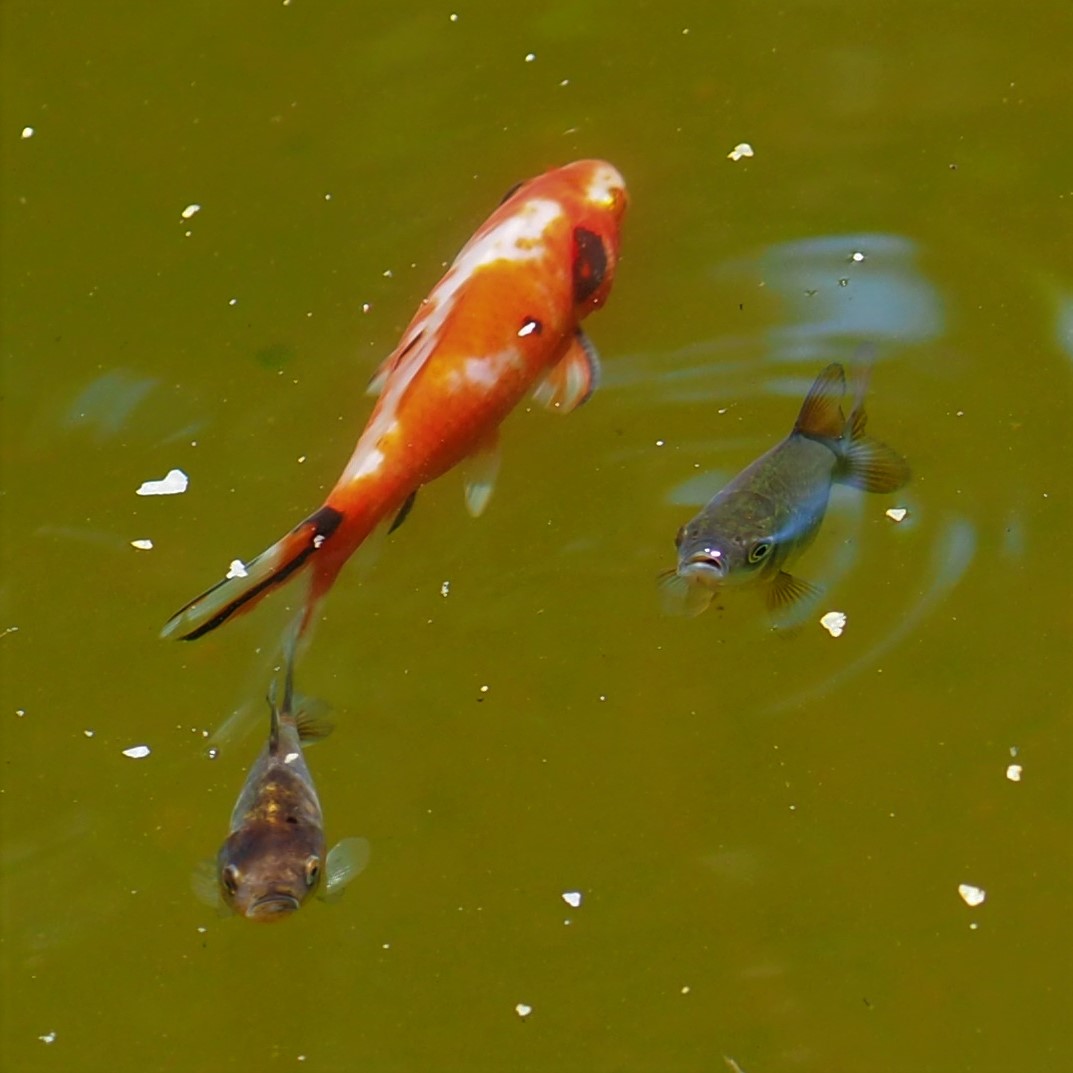
Just for fun, here are some Ladybugs in morph-form. (Did you ever notice that "morph" is dyslexic for "form"?)
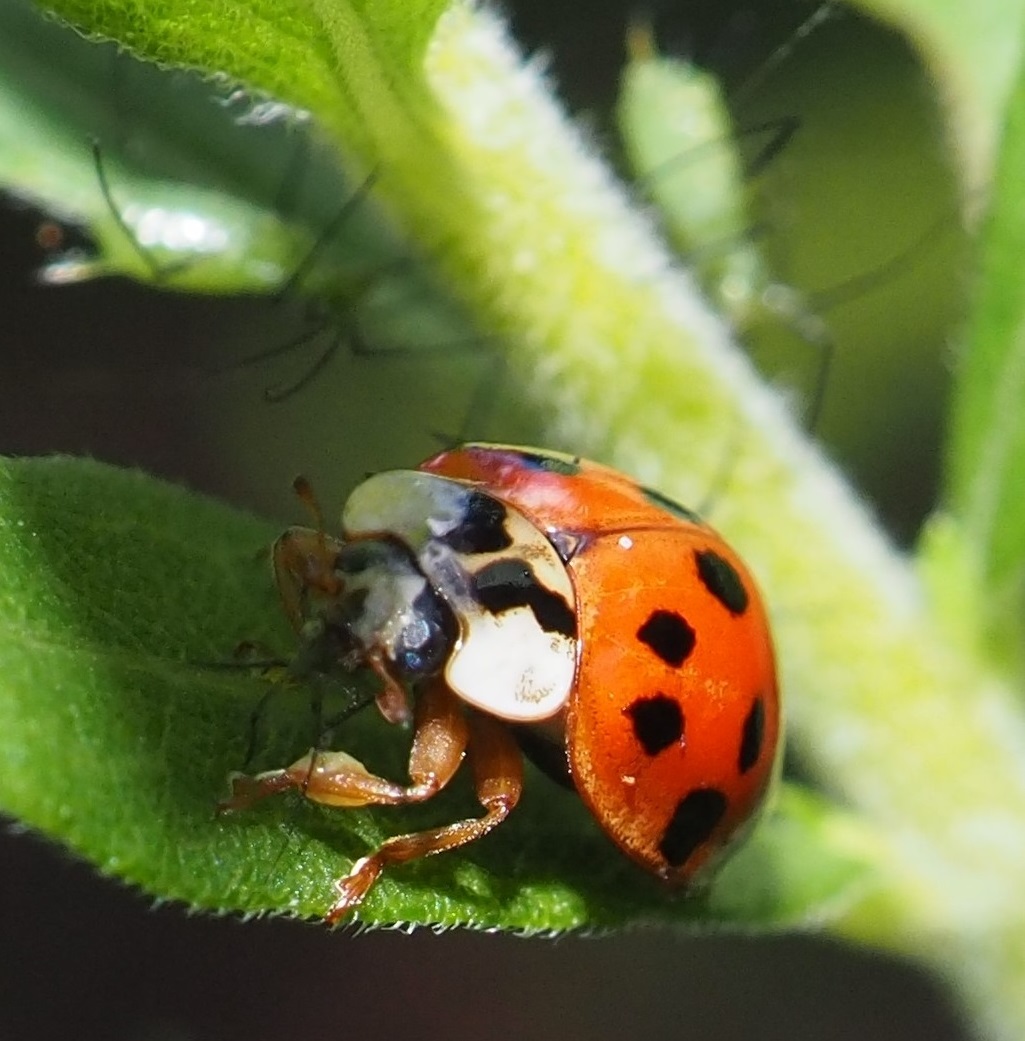

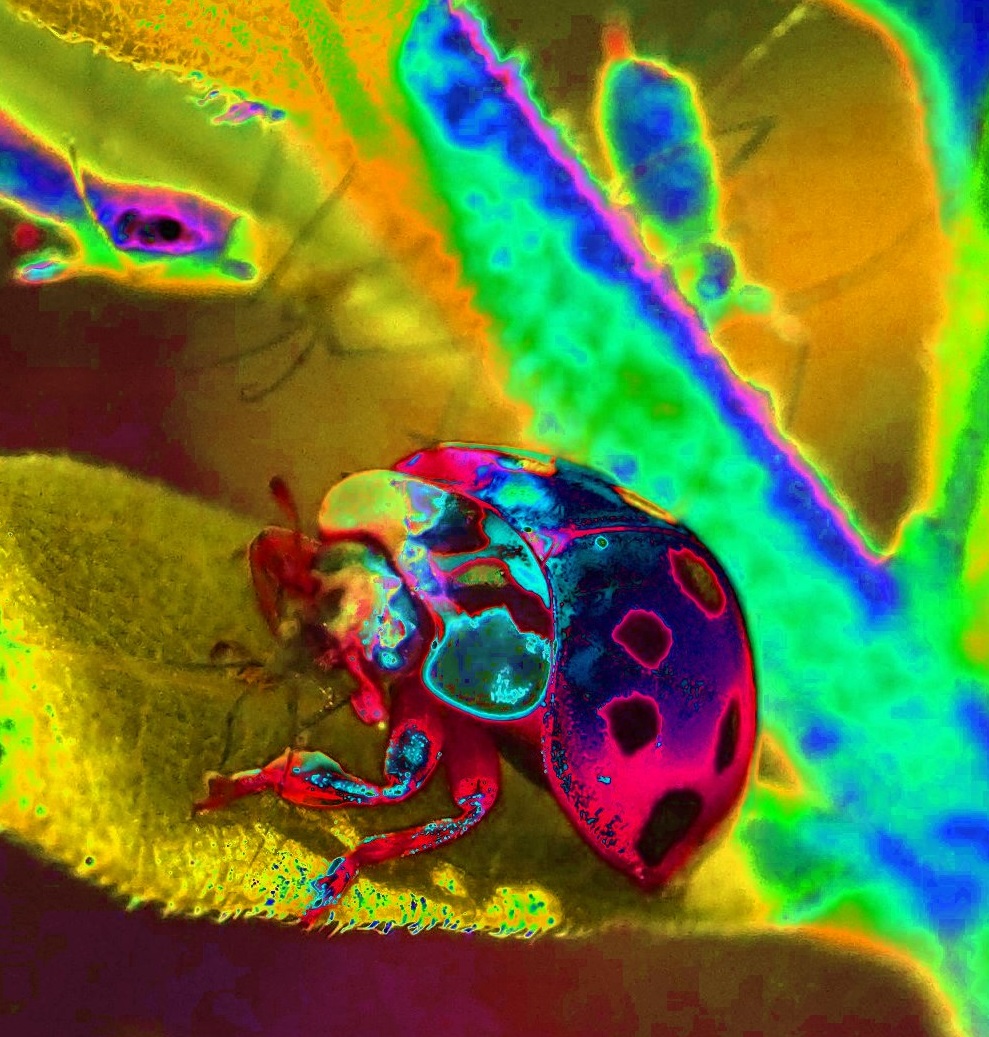
Now that I am outdoors for longer periods watching the flow of Life in all its forms in the yard, I am feeling stronger. I keep my cane close so as to navigate the uneven bits of ground, and for weeks I haven't taken off my life-link (or whatever the brand is) button. I do the stairs almost a dozen times a day! Life is good. I enjoy working hard on AALL - it is so important for us old codgers to pass on what we've learned and to accept what others have learned too. Let's all enjoy what we have and share it. As the Beatles said.....
Love, Martha
Back to May 30, 2021
Forward to June 13, 2021
Back to main menu
copyright Martha O'Kennon 2021

















































































































.jpg)


















